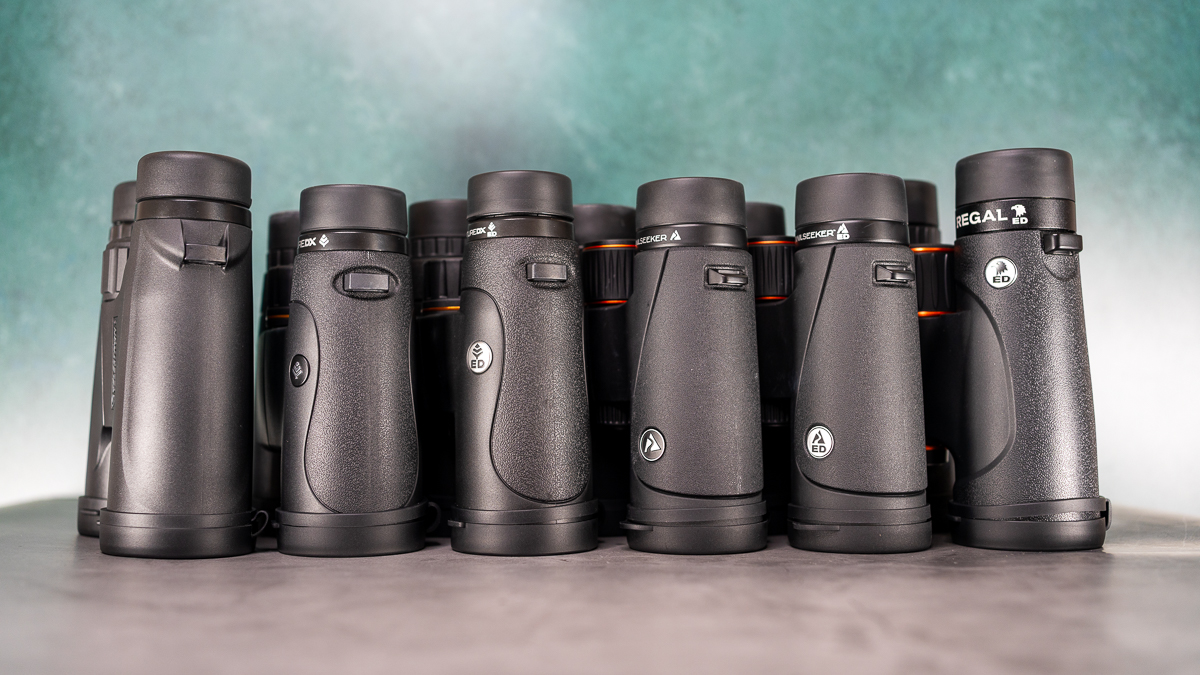Best running shoes for supination 2025: Find the perfect fit for your feet
The best running shoes to look for in the Christmas sales, tried and tested by the Live Science team of fitness experts.
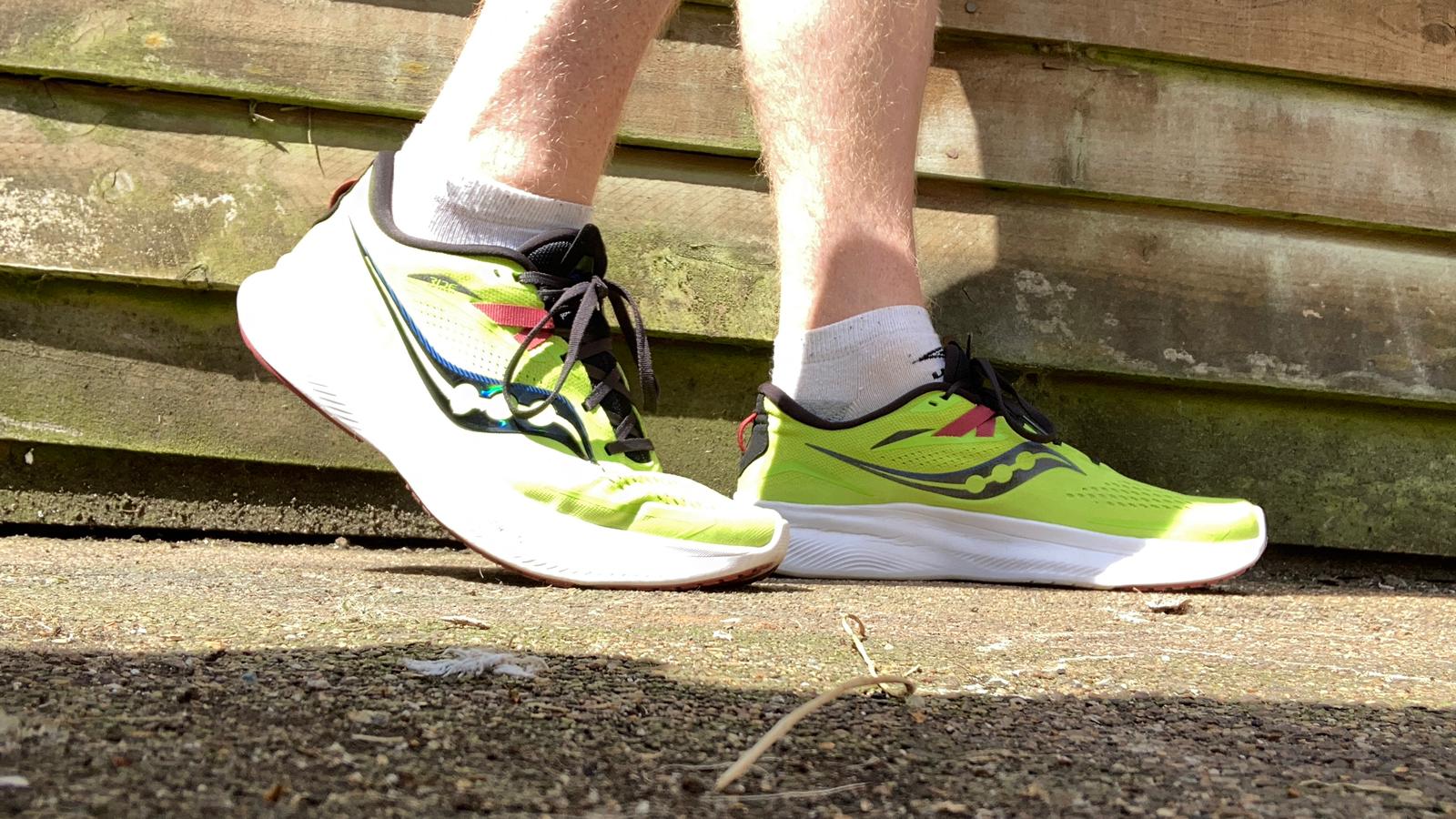
If you are hoping to find a new pair of running shoes under the tree this Christmas, or have entered a spring marathon race and need to start kitting up, now is a great time to shop around. But before you get swayed by the best-looking shoes, remember that everyone has their own unique way of running, or 'gait' – and therefore everyone needs a running shoe that is best suited to their style.
Many people overpronate - that's when your foot rolls outward when it strikes the ground - and need support to stop this exaggerated motion causing pain or injury. Others may underpronate - that's when the foot rolls inwards. Others may be 'nuetral' runners, and need cushioning but no extra support. The important thing is to get a pair of shoes that works for you.
Even the right pair, if they get too worn down over time, can lead to an increase in your injury risk. If the soles are so worn you can hardly see the treads any more, it's time to replace them.
When it comes to supination, for instance, musculoskeletal podiatrist Anne-Marie O’Connor told Live Science that "anything too flexible or soft will lead to early fatigue on the outer border of the outsole – then the danger of injuries [for supinators] will increase. A lower offset or drop is advisable to aid a fuller foot contact and the thicker midsole of a maximalist trainer is ideal.”
The best way to assess your gait is to go to a specialized running shop or see an expert physio or running specialist. Once you have done this, you can then shop around online to get the best shoes for you.
And alongside sorting out the best footwear, you can also use one of the best fitness trackers to log your runs or check out the best foam rollers to help ease any post-run aches and pains.
The quick list
See the quick list below for a summary of our favorite running shoes, or scroll further down for more detailed reviews of each product.
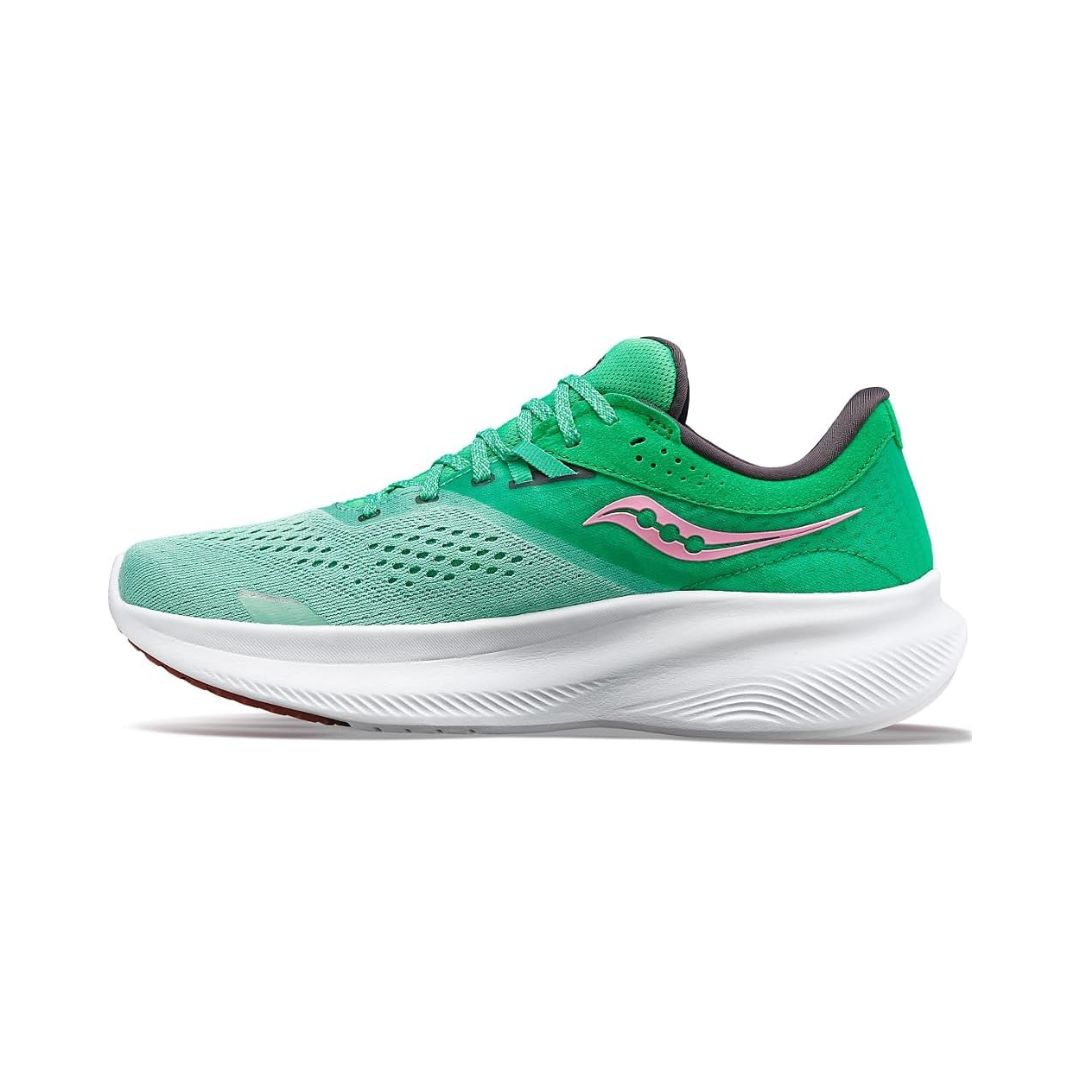
Best overall
This reasonably priced neutral running shoe won us over with its comfortable fit, excellent foot support, durability, and great running performance.
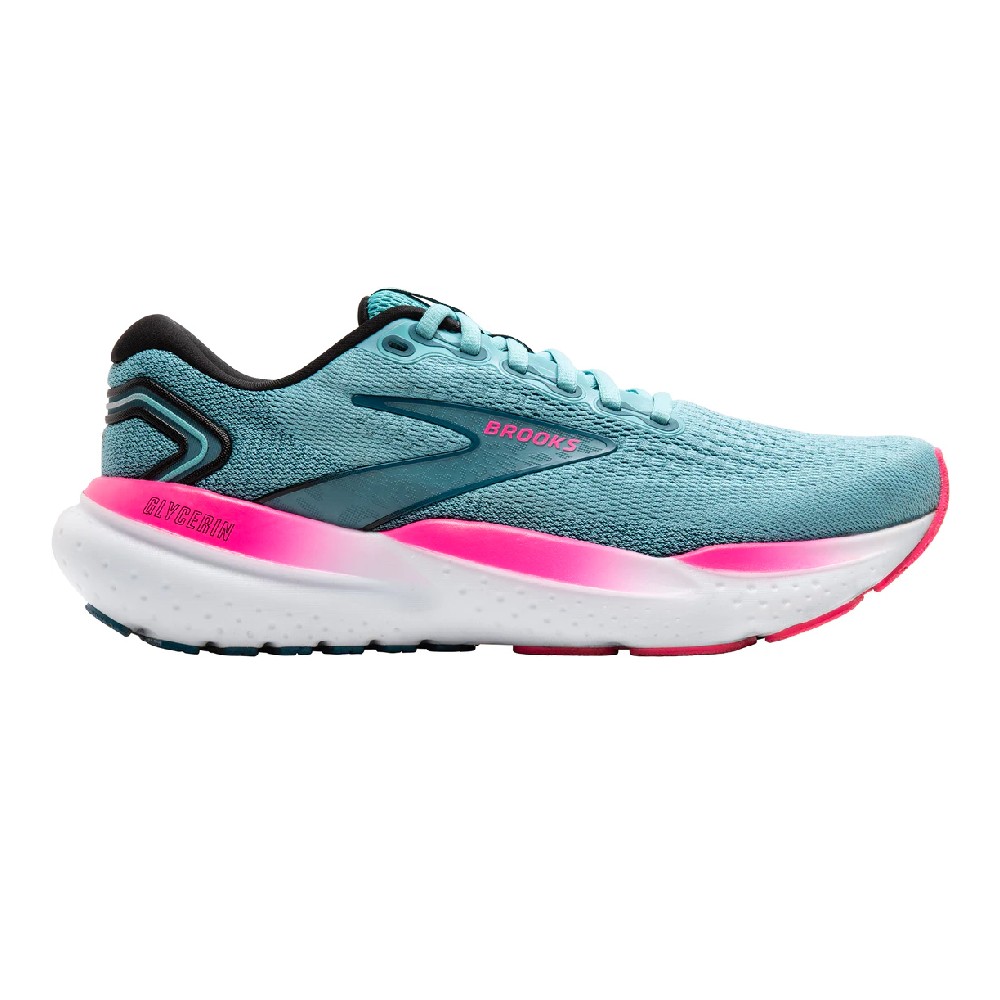
Best for newcomers
The Brooks Glycerin has long been a go-to shoe for new and casual runners. It has plush cushioning and a comfy snug fit that will keep your feet secure. It's certainly not the most sleek design, however, and more experienced runners may prefer something a little more lightweight.
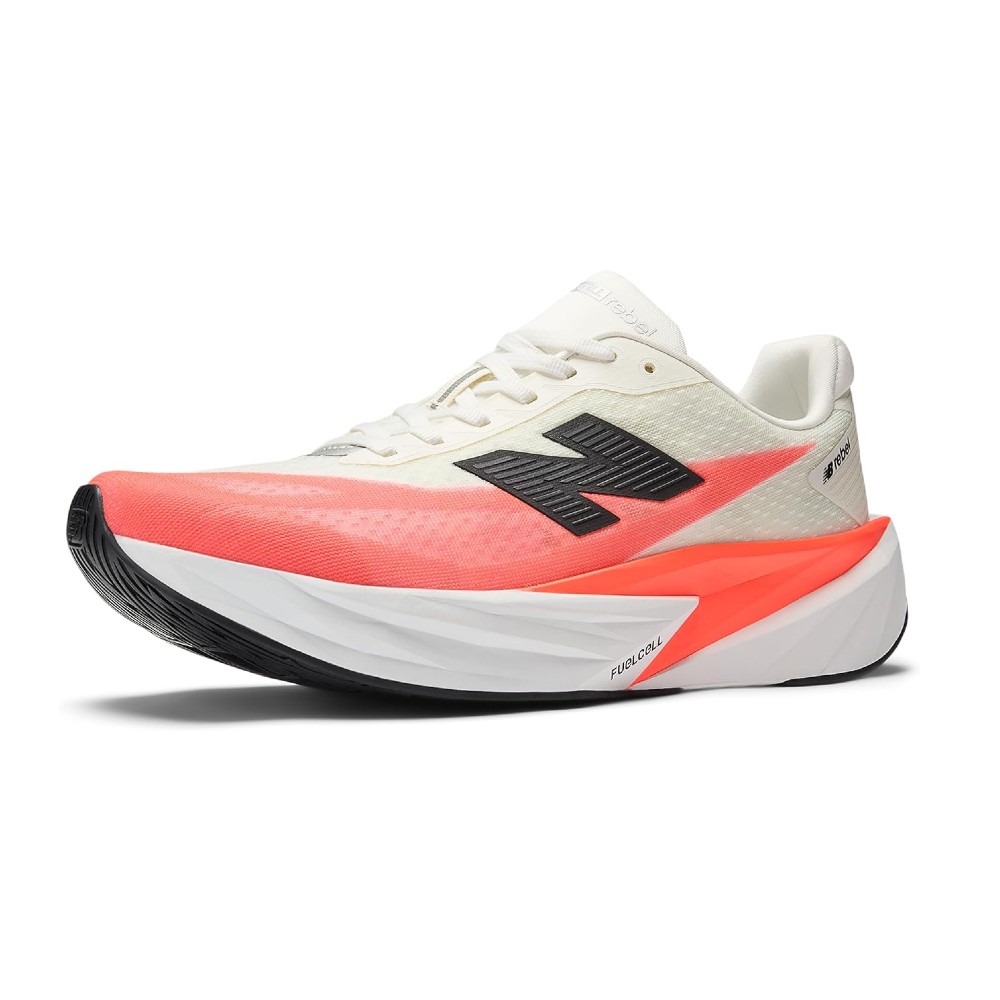
Best for speedwork
The New Balance FuelCell Rebel v5 is a brilliant all-rounder, soft enough for long runs but with a spring that makes it perfect for tempo runs and fast training.
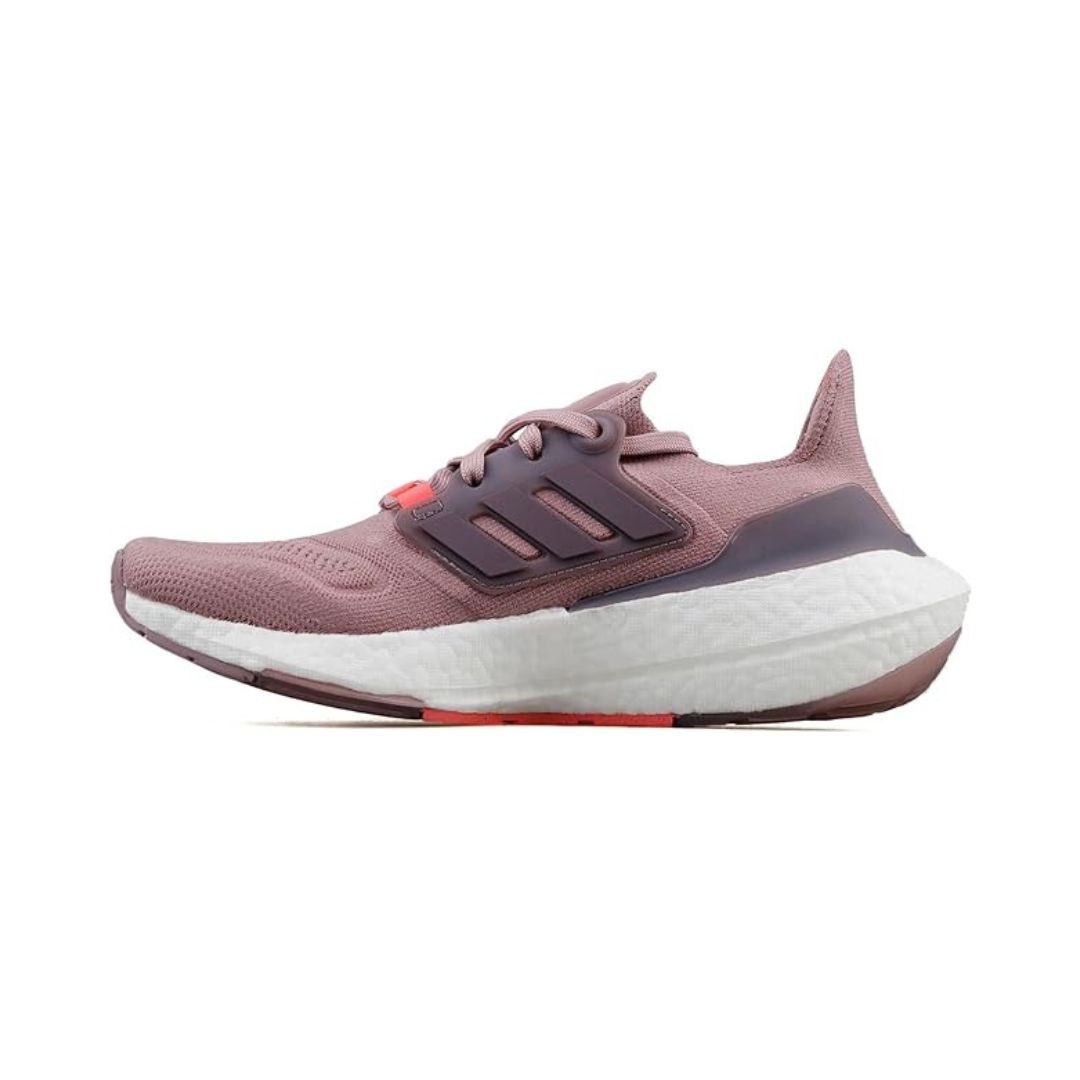
Best for women
Most running shoes come in mens and womens models but the Ultraboost 22 was designed specifically for female feet. It's a neutral shoe with a comfortable fit, excellent outsole grip and appealing design.
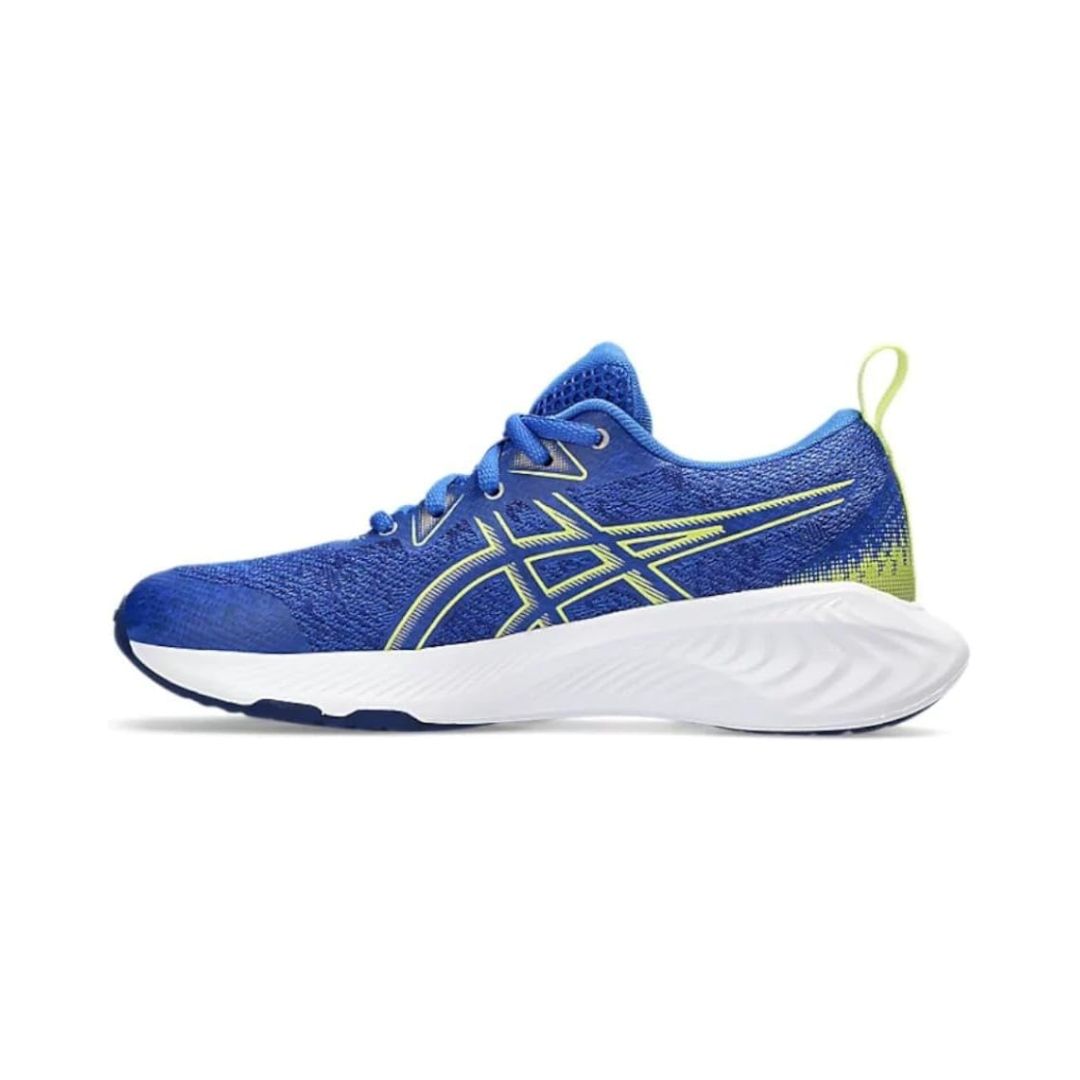
Best comfort
The Gel Cumulus is a mainstay of the running shoe line up. New version have a great lightweight build, but also offer excellent cushioning and are responsive on the run. It's also a relatively affordable option.
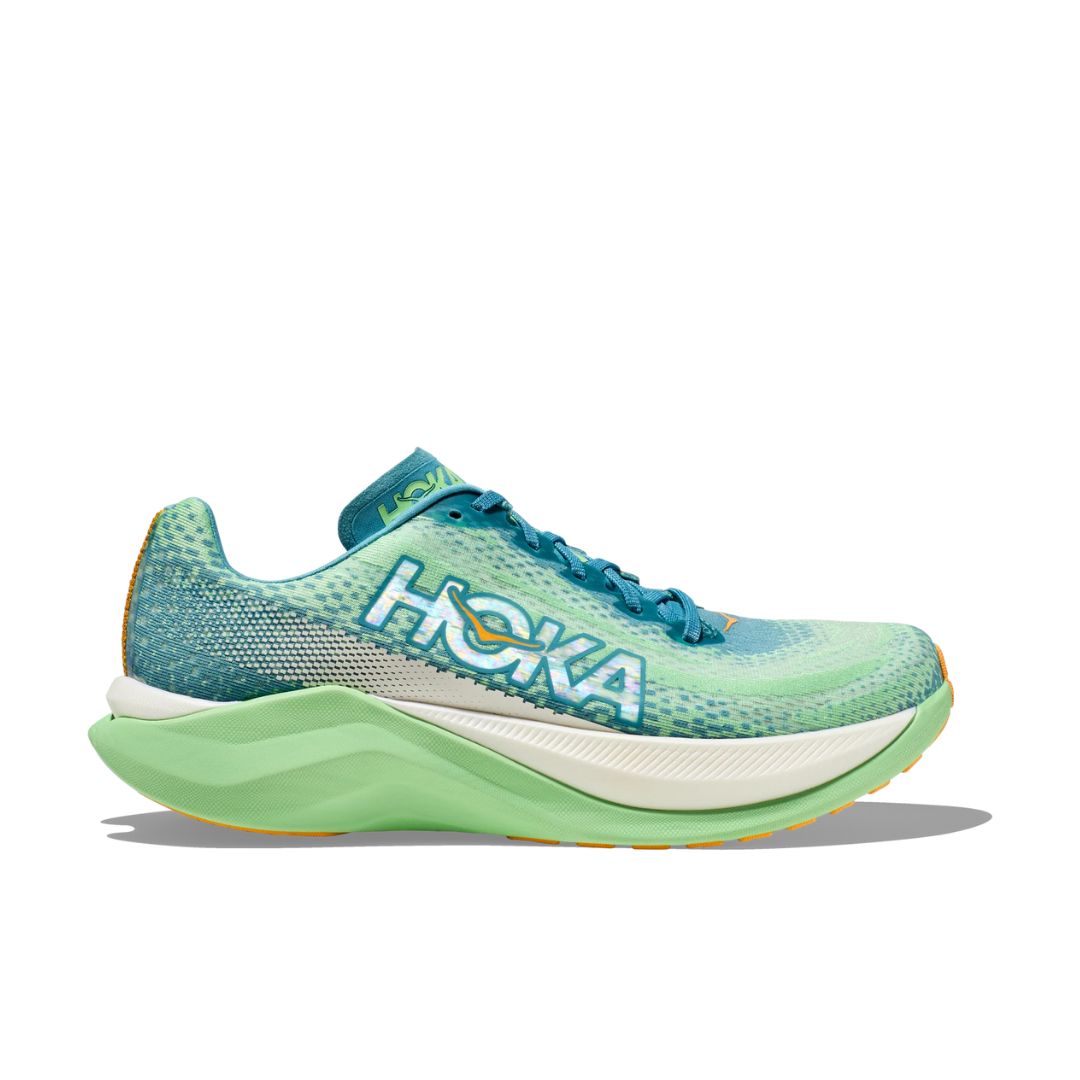
Best all-rounder
Hoka are beloved for their super comfortable cushioned shoes and the Mach X is no exception. It works for easy runs and for picking up the pace and despite the maximal cushioning, still feels lightweight.
Load the next 3 products ↴
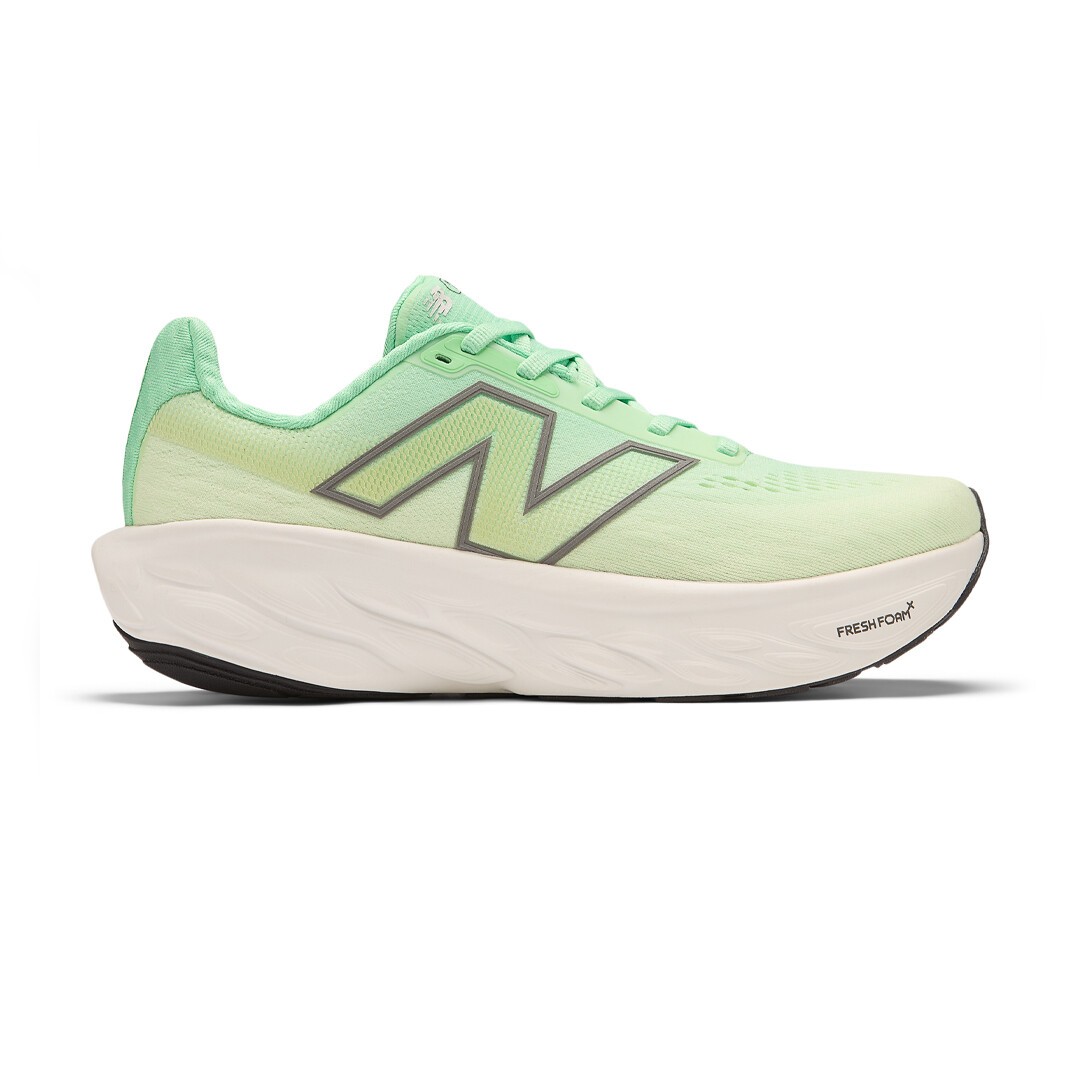
Best for everyday runs
The beautifully designed NB 1080 v14 is comfortable from the first strides, and has the versatility and cushioning to be used for almost all your runs
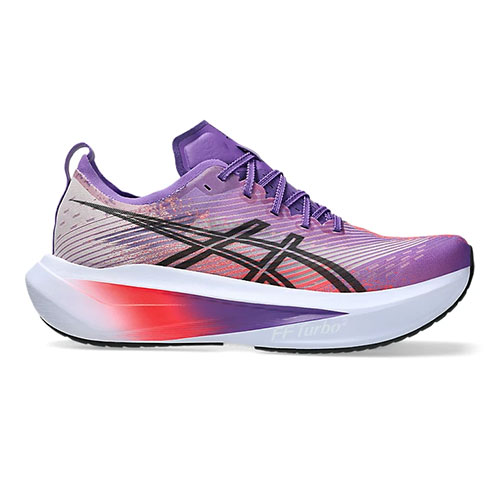
Best for long runs
Lightweight, breathable and pleasantly bouncy, the Asics Megablast is a perfect shoe to help you conquer strenuous marathon training and long 10k sessions in the summer heat.
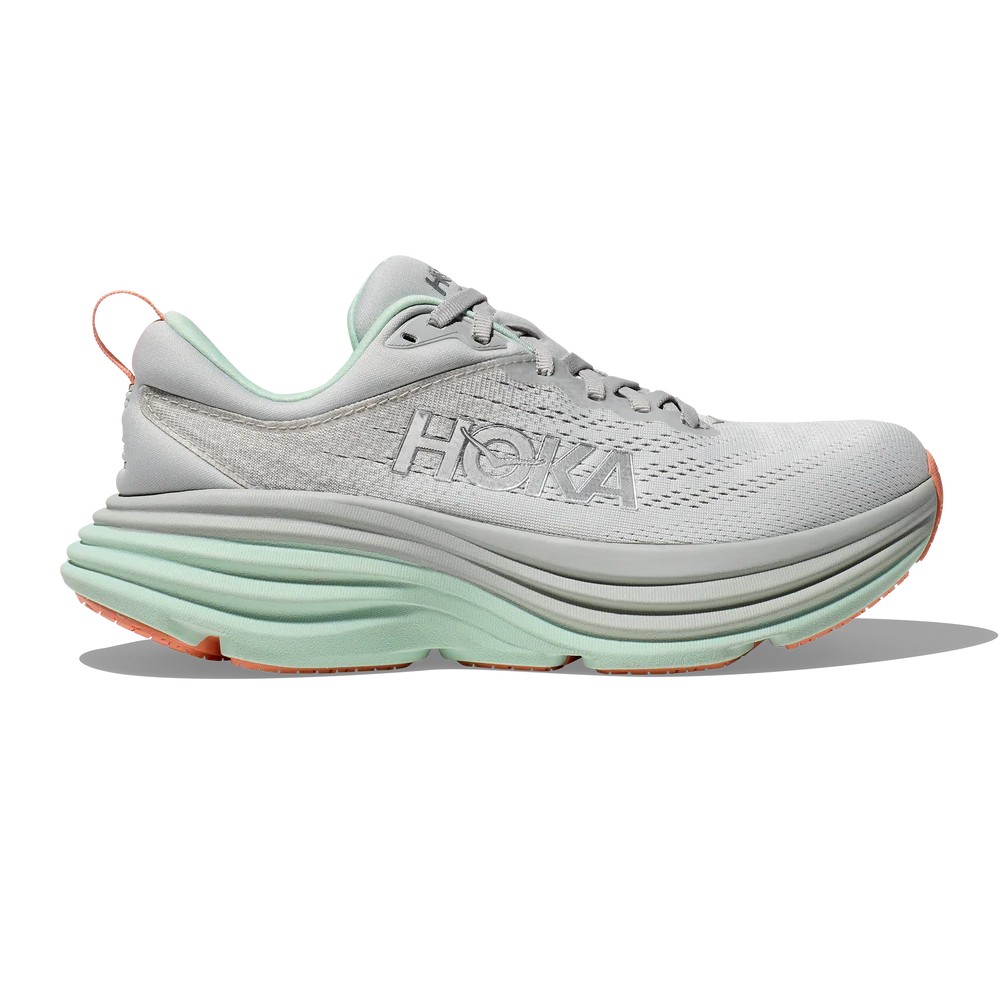
Best for run/walkers
With unbeatable amounts of cushioning, the Bondi 8 offer fantastic comfort over the long term, but are perhaps best suited to walking or those who like to run-walk.
The best running shoes we recommend in 2025
Why you can trust Live Science
The best running shoes for supination overall
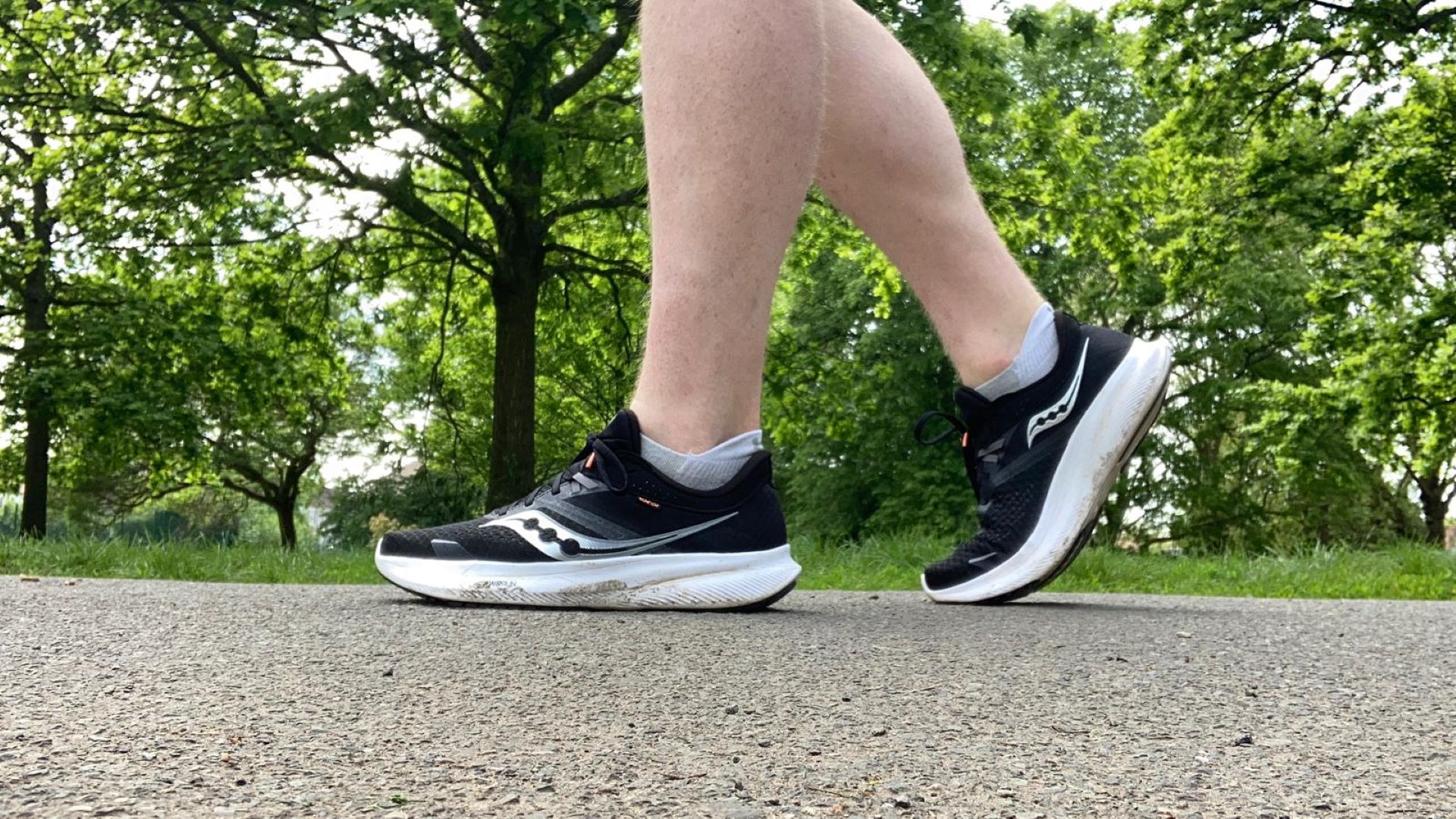
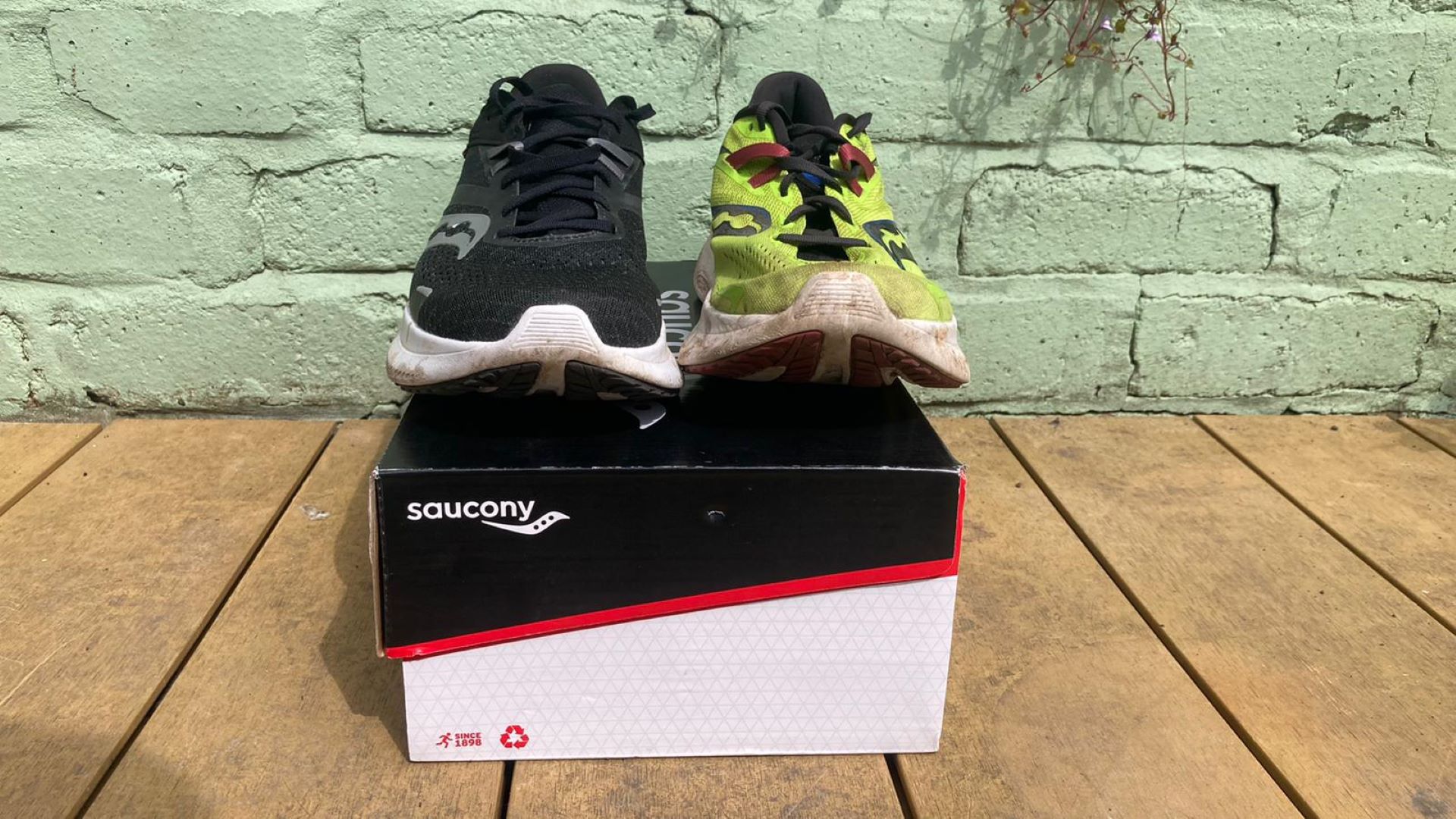
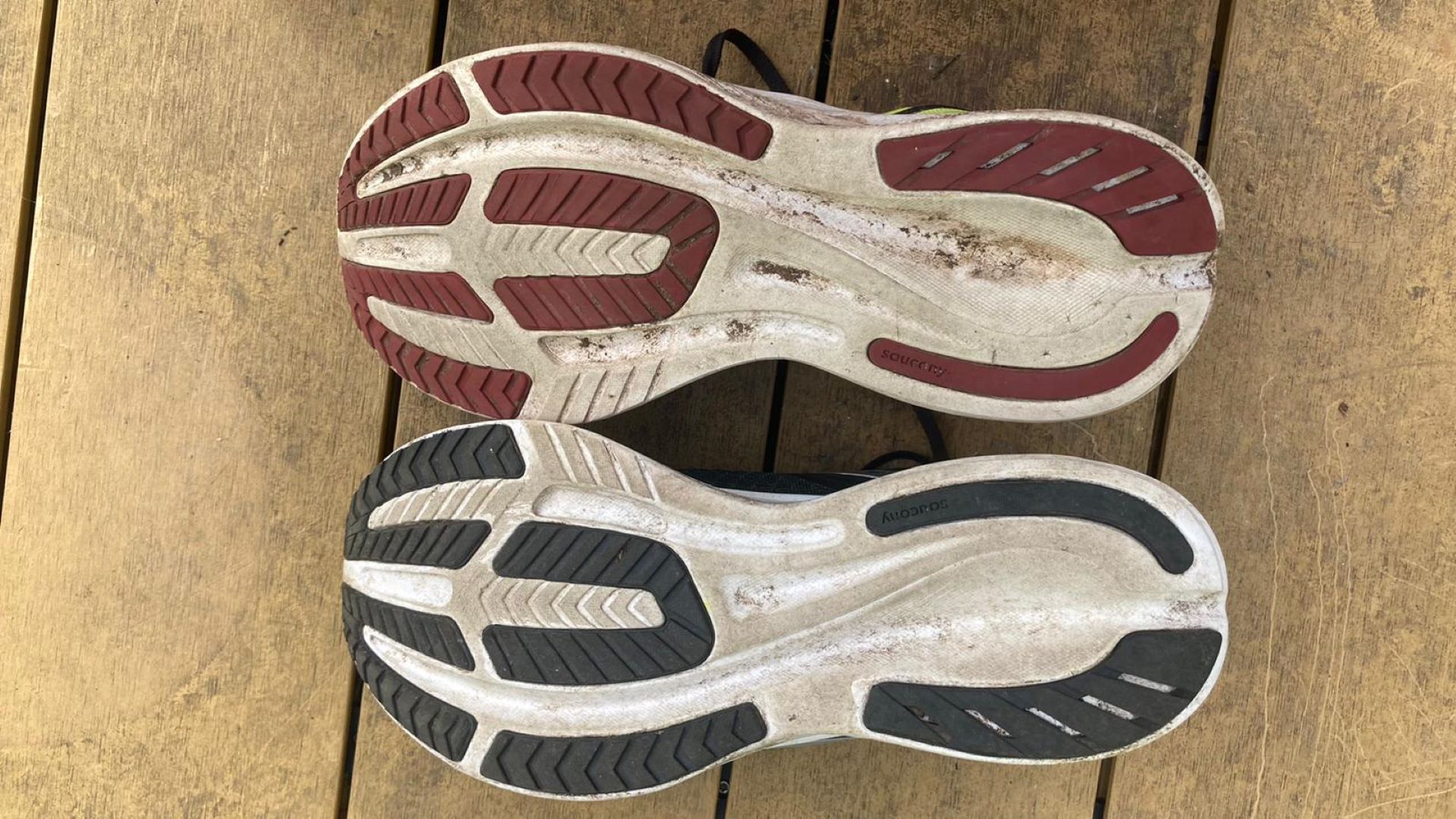
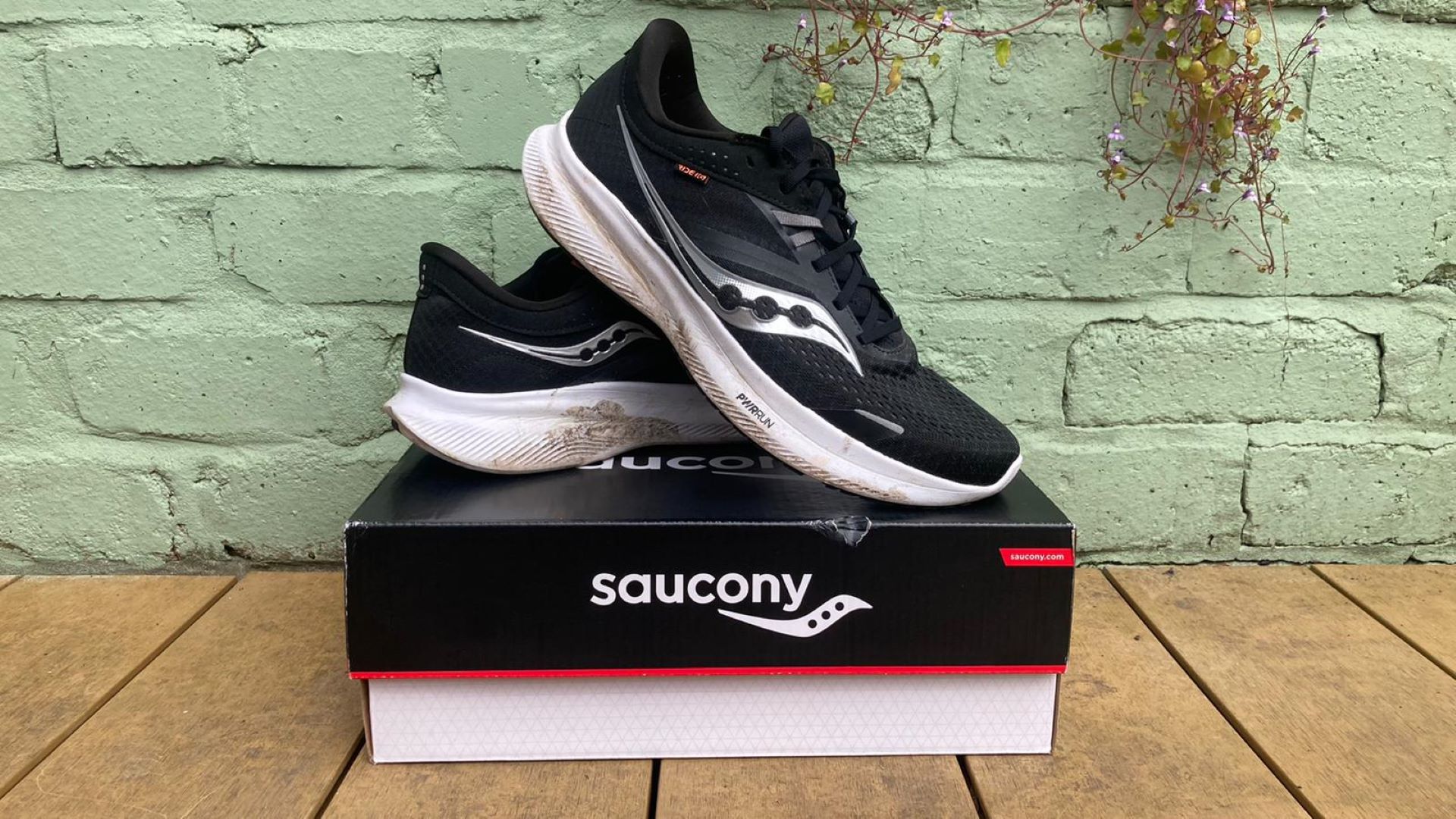
Specifications
Reasons to buy
Reasons to avoid
✅ You want a running shoe that can do it all: It performs well no matter what kind of running workout you are doing .
✅ You prioritize comfort and stability: This well designed cushioning helps protect your feet from strains and blisters.
✅ You want good value for money: It costs less than $75.
❌ You want a racing shoe: It is not as responsive as some of the more lightweight or premium shoes on the market
❌ You want to keep up with the trends: It is an old model, and it offers a relatively basic design.
🔎 Saucony Ride 16: This mid-range neutral shoe offers an exceptionally comfortable ride that is firm enough to push the pace a little. However, it's definitely not highly responsive and runners looking for something for intervals and speed work should look elsewhere. ★★★★½
The Saucony Ride 16 is a great neutral running shoe. It will see you through long slow runs, easy jogs and even the odd shorter faster run. In a running shoe market now seemingly dominated by carbon plates and high tech wizardry, this is one of the simplest options available. Saucony have stuck to basics, and executed that superbly — meriting hefty 4.5 stars in our full Saucony Ride 16 review.
The shoe has a wedge of PWRRUN foam stack at the heel and a flared midsole around the forefoot, which can give an element of stability to an otherwise neutral shoe. While it's soft enough to be comfortable over long distances, it does have enough firmness to push the pace a little.
However, runners who want something responsive for intervals and speed work sessions will definitely want a more responsive shoe.
As a relatively older model (Saucony have recently bought out the Ride 18) the Ride 16 is relatively affordable, too. It tends to cost less than $75, and it is often discounted on Amazon and other major retailers. It may not be the newest Ride on the block, but it's still a fantastic staple of the running shoe line up.
- Read our full Saucony Ride 16 review
Best running shoes for faster training
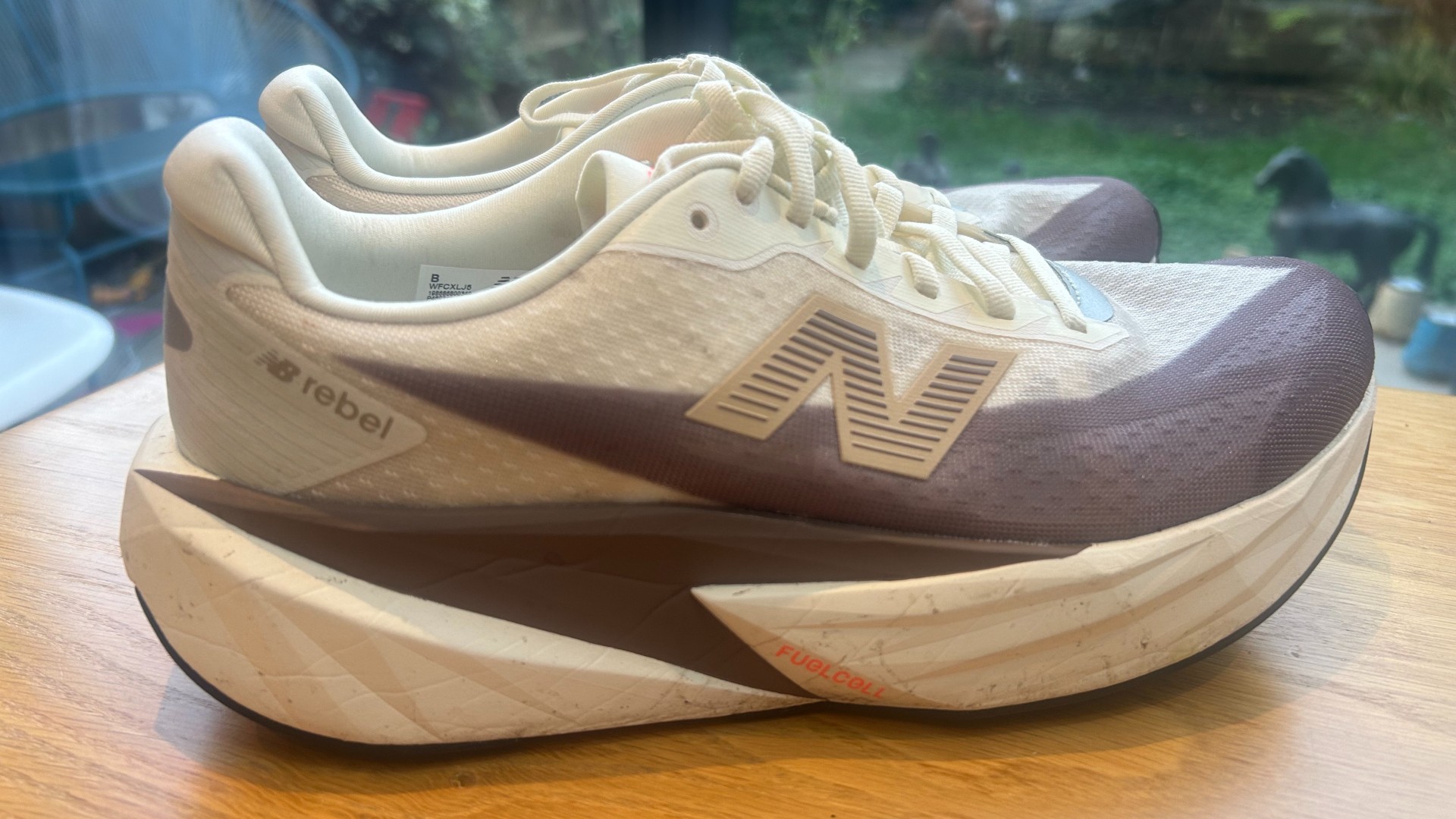
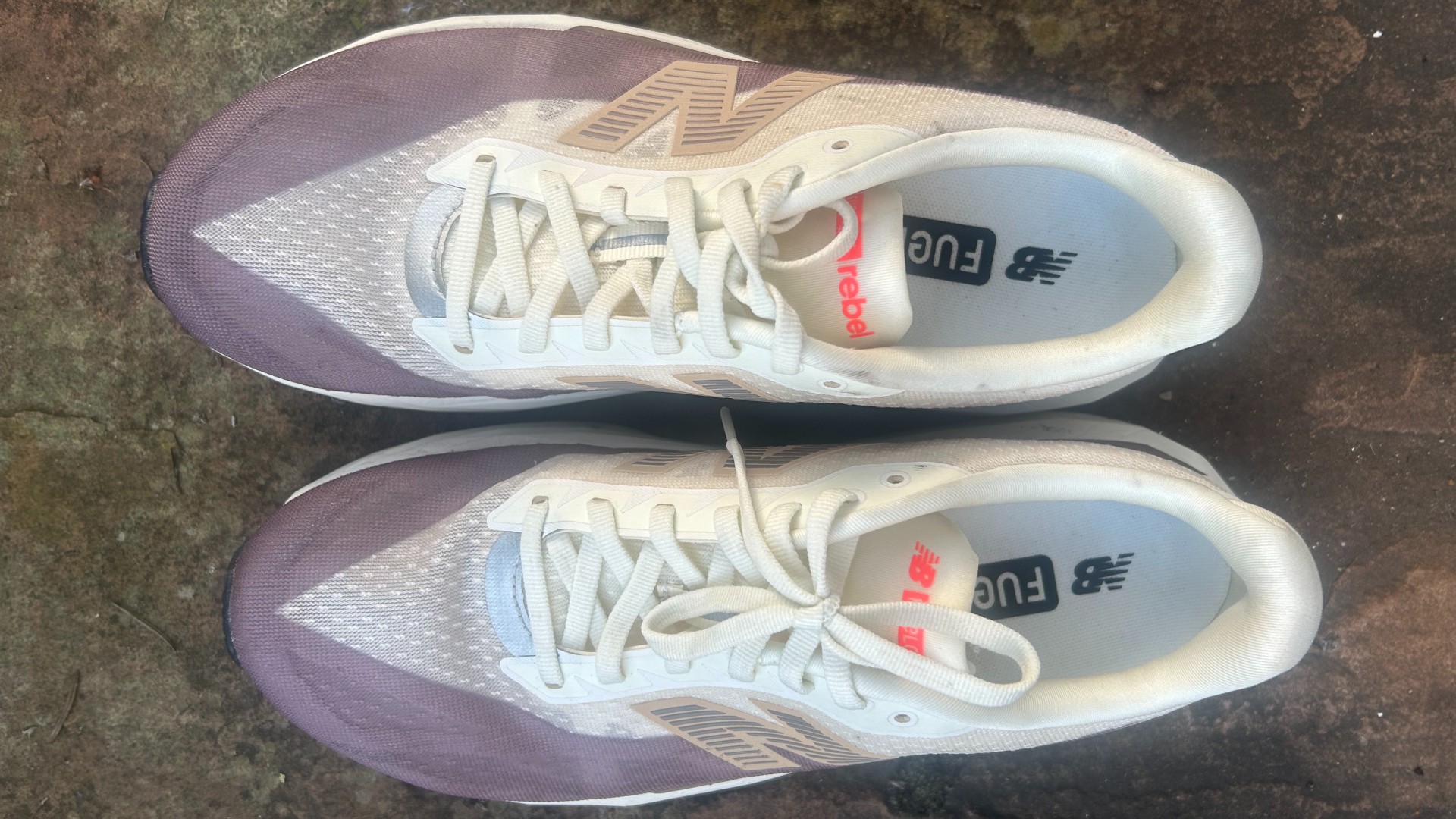
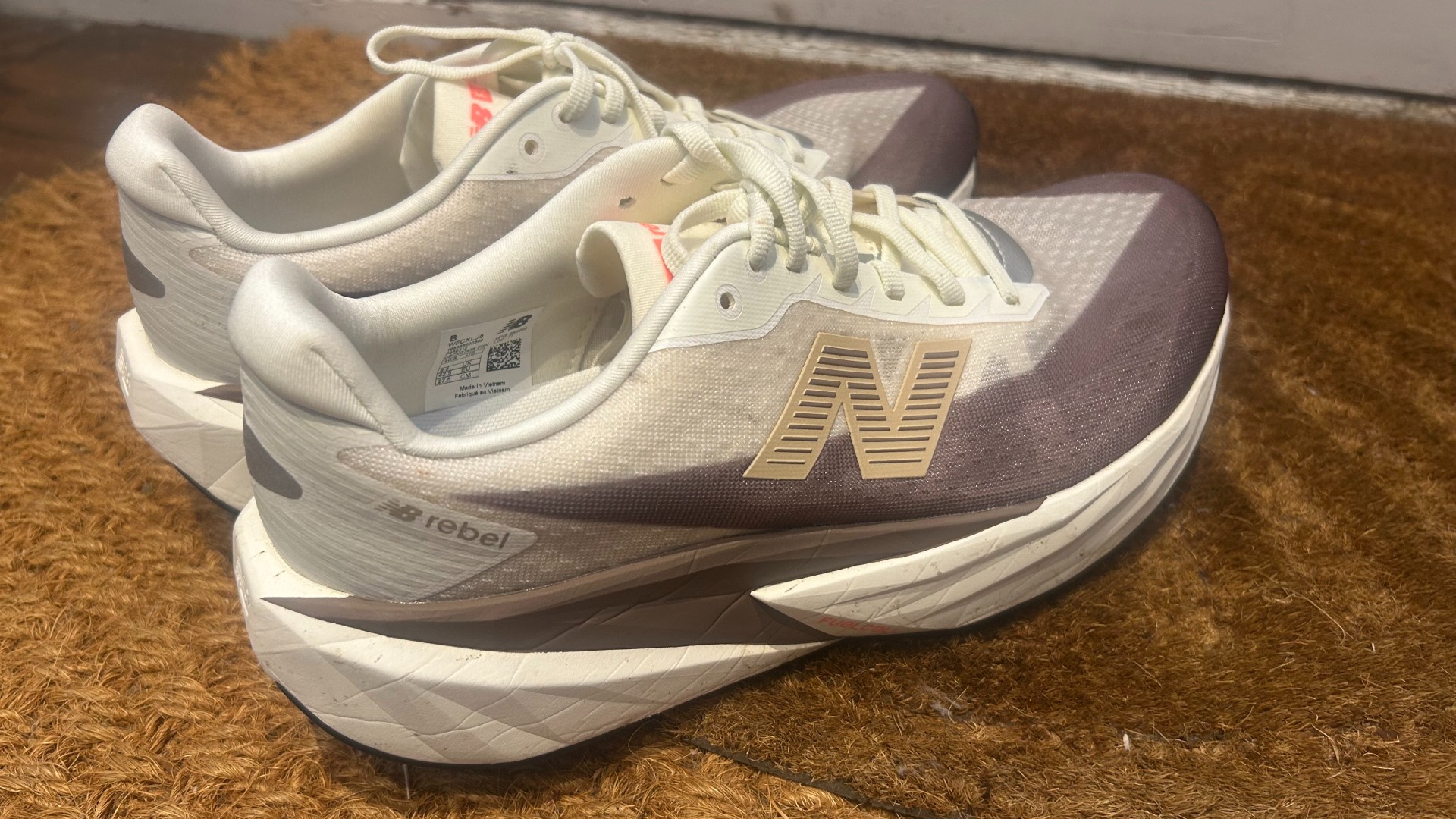
New Balance FuelCell Rebel v5
Our expert review:
Specifications
Reasons to buy
Reasons to avoid
✅ You want a shoe for speedy workouts: The Rebel v5 has a lively snap to it, making it perfect for faster tempo work
✅ You still want comfort and cushioning: Though it can handle speed, this is a well-cushioned shoe
✅ You like a lightweight feel: Despite the cushioning, this shoe feels light and springy to wear
❌ You want a plated racer: While the rocker geometry of the shoe creates a snappy turnover, there's no carbon plate here
❌ You want a shoe to last forever: The soft FuelCell foam may wear relatively quickly if you run high mileage.
🔎 New Balance FuelCell Rebel v5: This snappy neutral shoe is cushioned and comfortable for every day easy runs, but with the lightweight snappy feel of a faster shoe. It might not be your race day choice, but it can handle pretty much everything else in style. ★★★★½
The original FuelCell Rebel models gained something of a cult following amongst runners looking for a super speedy training shoe. And while version 5 may have tamed the speedy feel a bit, it does so by adding cushioning and comfort. The result is a great every day training shoe that can handle your fast sessions too.
The FuelCell midsole feels supportive but reactive underfoot, while the upper feels extremely light and comfortable. The tongue, updated from previous models, is particularly well-designed.
While New Balance shoes sometimes come up a little small, the Rebel v5 has a roomy toe-box so may fit true to size in most runners.
While the Rebel may not be an obvious race day shoe, as it's not one of the carbon plated 'super shoes' many runners now prefer, it still offers some pace. And perhaps most importantly, it's a lot more versatile than your average cushioned daily trainer. This is a shoe that can do pretty much everything - and it looks great, too.
Best running shoes for beginners
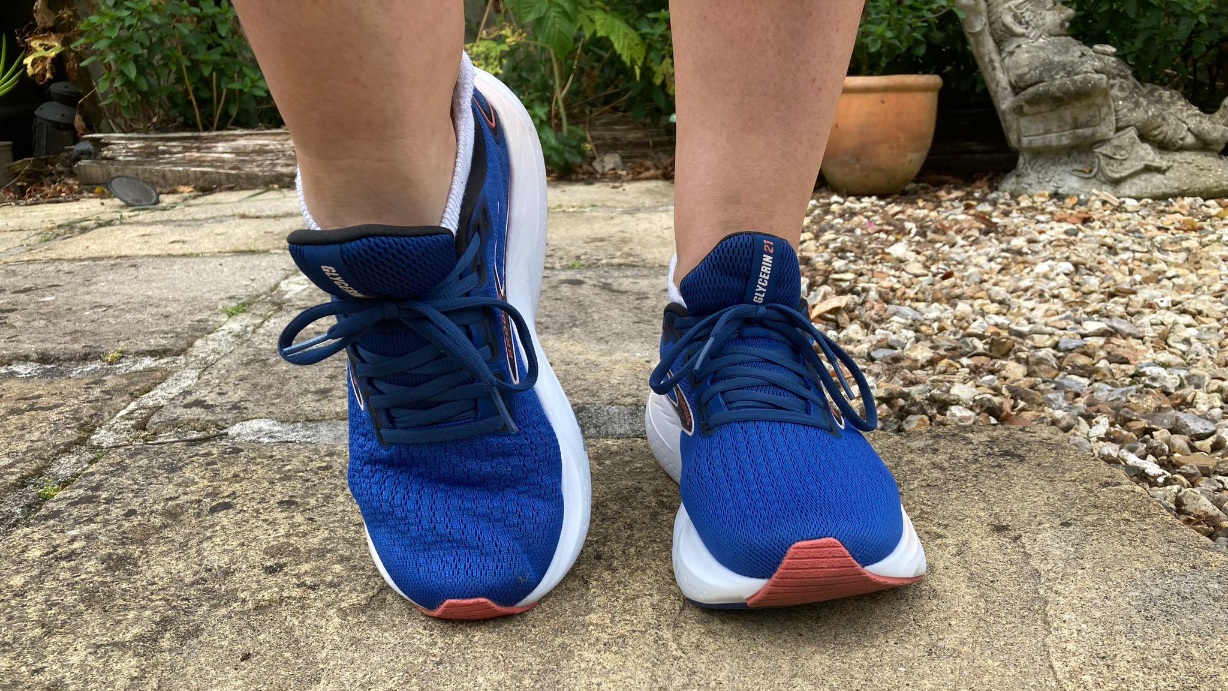
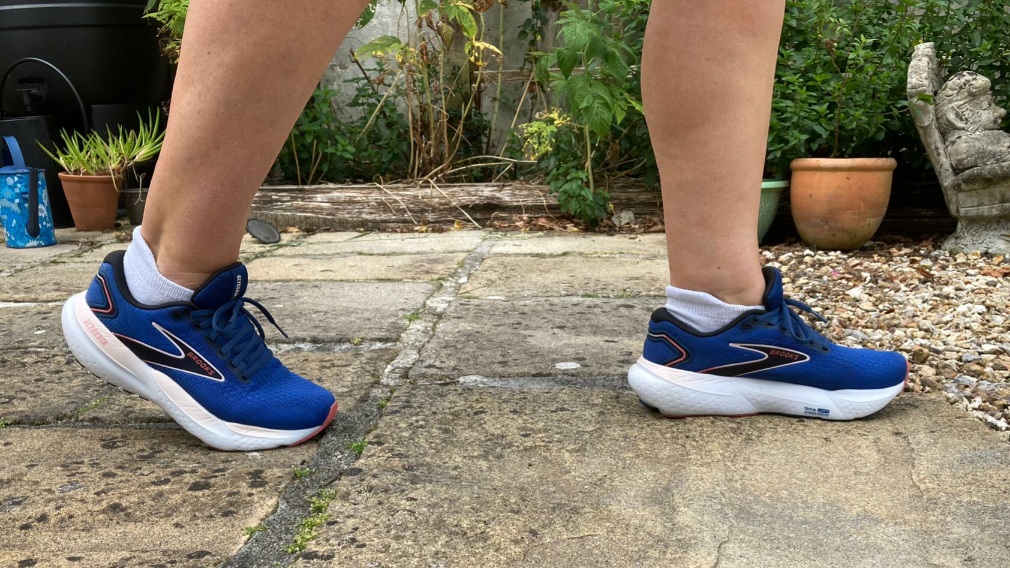
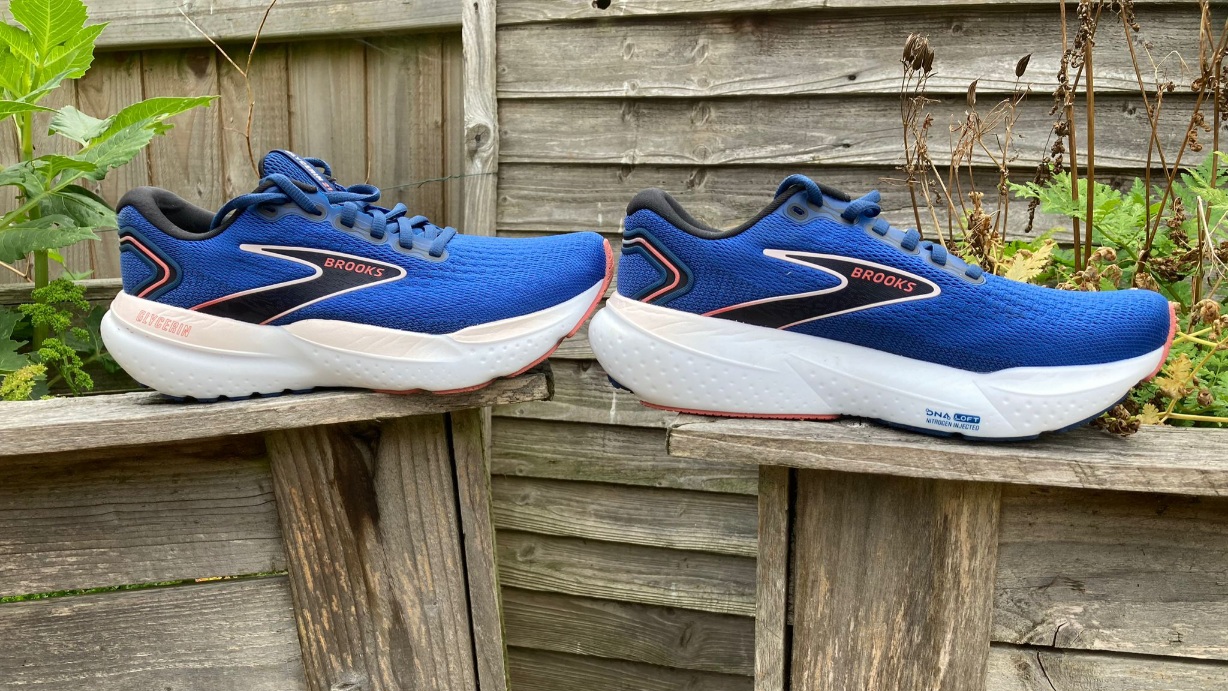
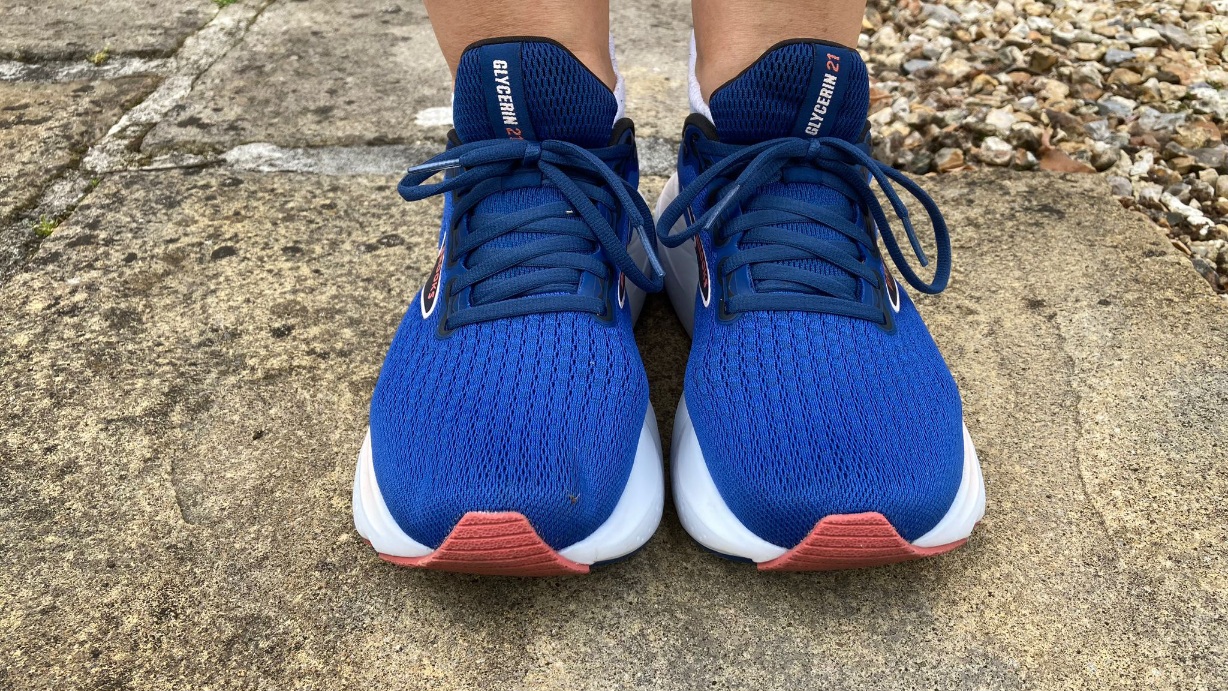
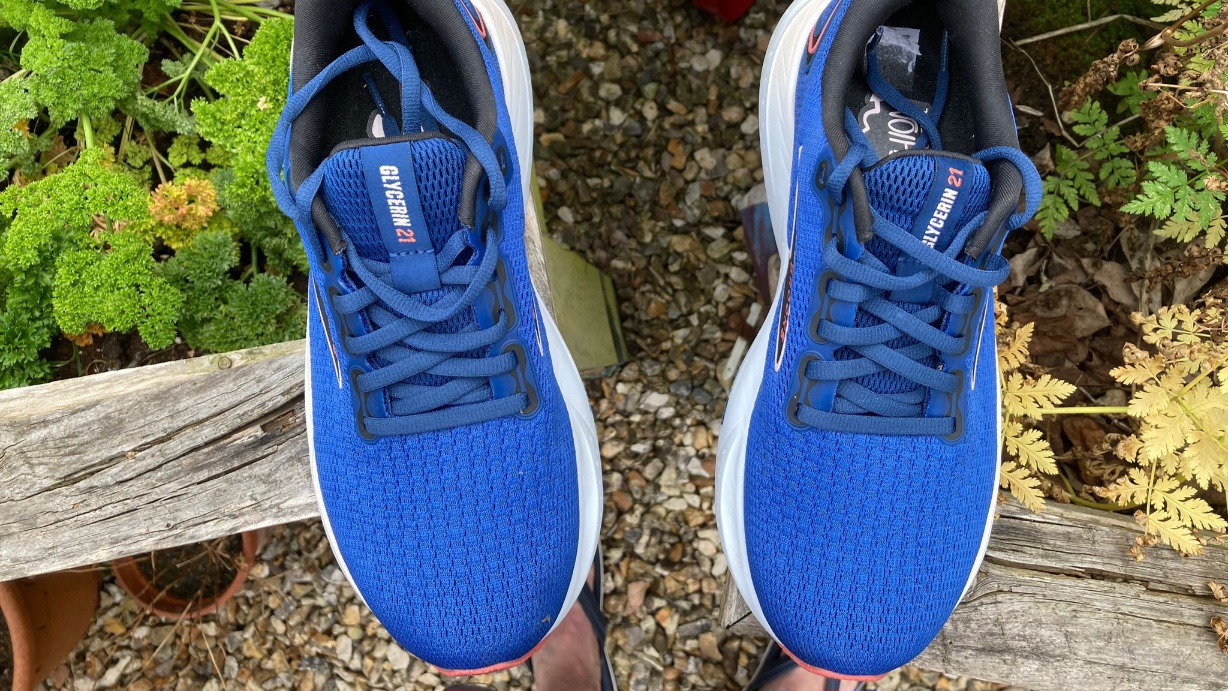
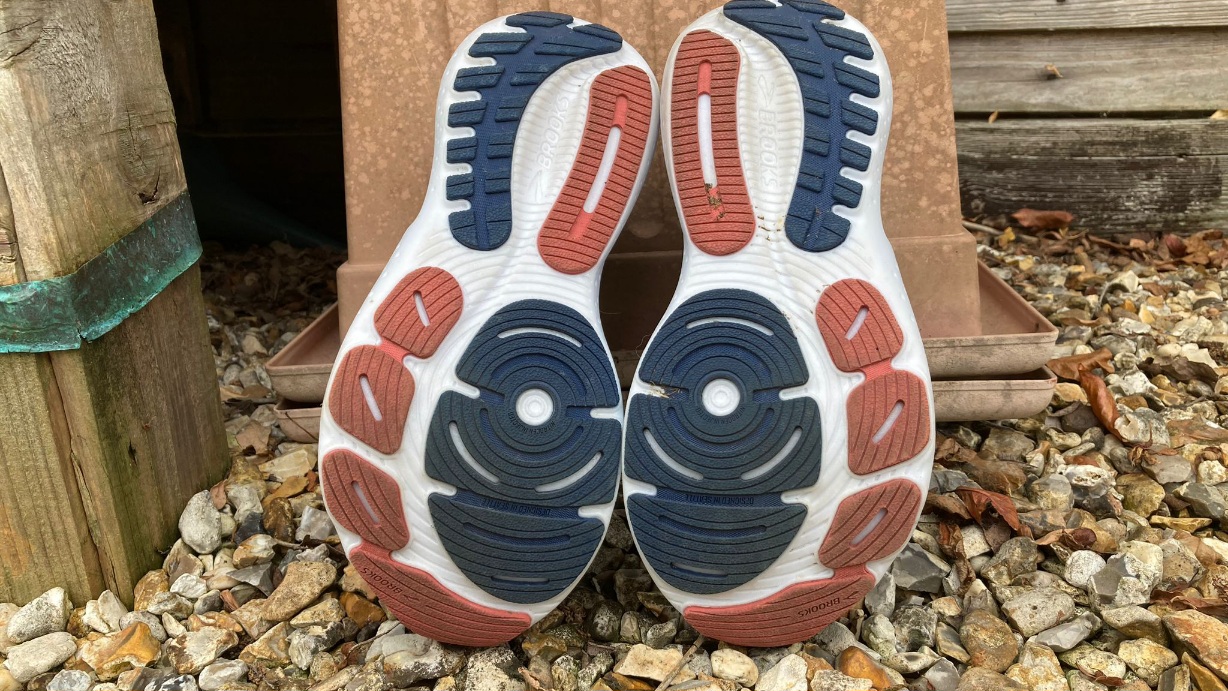
Specifications
Reasons to buy
Reasons to avoid
✅ You prioritize comfort over responsiveness: This shoe will keep your foot snug and secure over many a mile
✅ You need extra wiggle room: There's plenty of toe-room in this shoe
❌ You want a lightweight racer: It is undeniably bulkier and less responsive than other shoes on the market
❌ You want something waterproof: It's breathability means it really isn't waterproof at all
🔎 Brooks Glycerin 21: Bouncy if not super responsive, the Glycerin 21, like its predecessors, offers a super comfortable ride for long runs and easy miles. It's not a shoe to set PBs but it is a reliable workhorse for the bulk of your running. ★★★★
Brooks have long been a favoured brand of amateur runners, and for a good reason: the company has been designing running shoes since 1974. And when a shoe is on its 21st version, you know its a favourite for a reason. What the Glycerin offers is a stable, comfortable ride that is bouncy — thanks to its stack of foam — if not super responsive. This is a shoe that will keep your feet blister-free and in plush comfort over many miles.
During our Brooks Glycerin 21 review, our tester loved the bounce and breathability of the shoe, but did note that that breathability does come at the cost of any element of waterproofing.
While the Glycerin 21 is a neutral shoe, it will offer an element of support through the foam underfoot. The upper has a little stretch to it, but not enough to compromise the locked-in and snug feel. Our reviewer also noted that the traction underfoot from the newly redesigned sole offers more grip than other previous Brooks models.
- Read our full Brooks Glycerin 21 review
Best running shoes for women
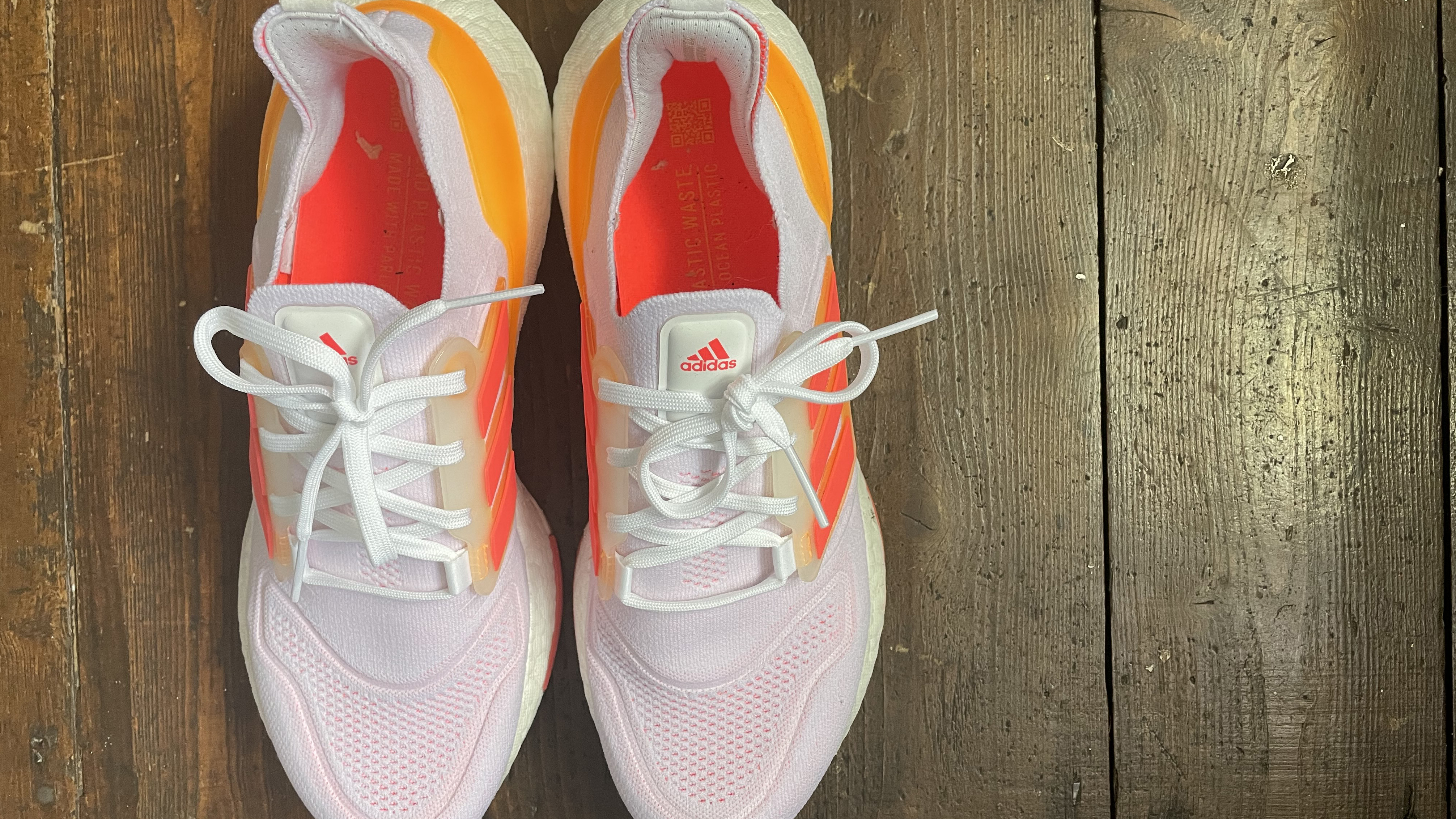
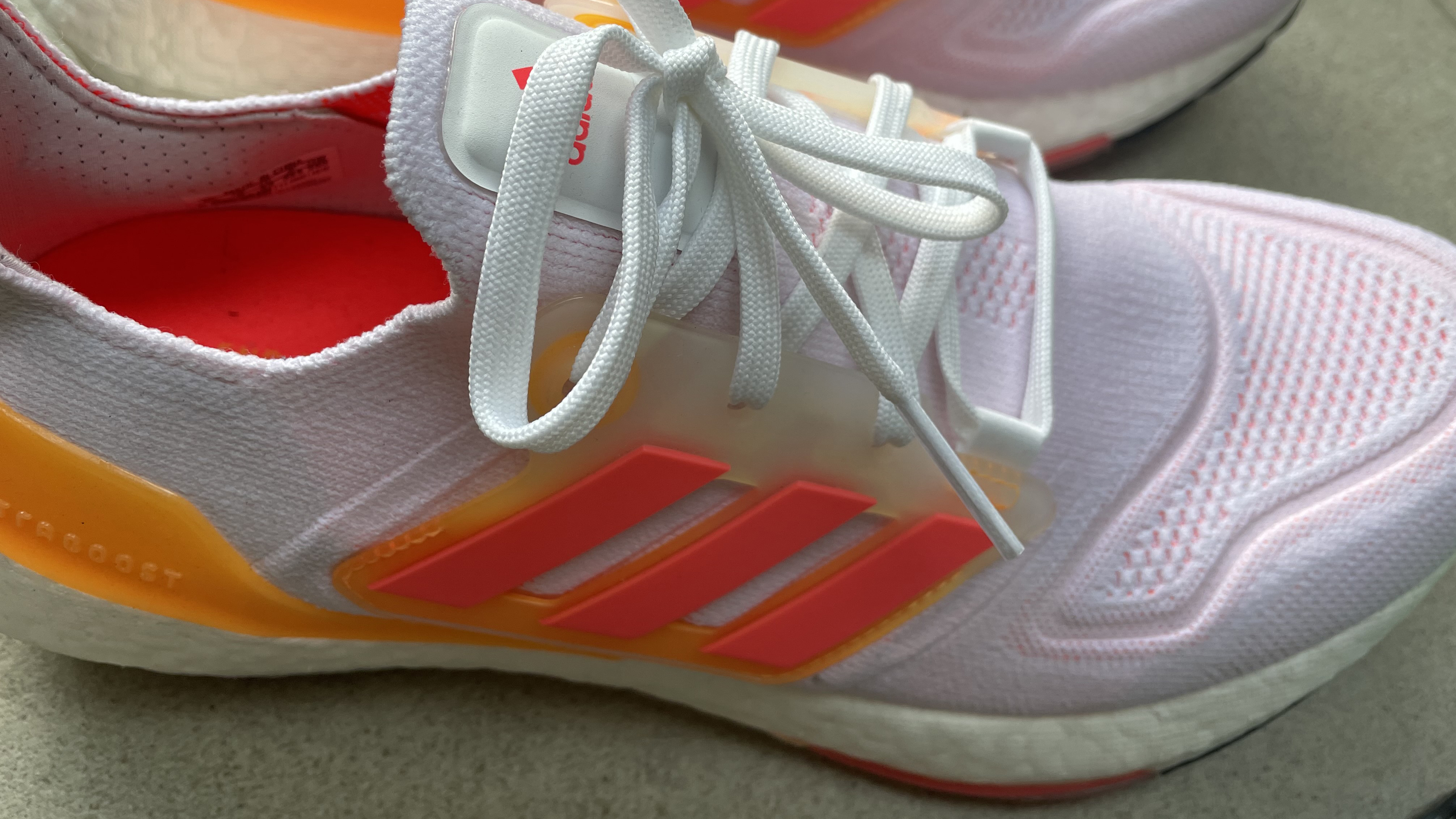
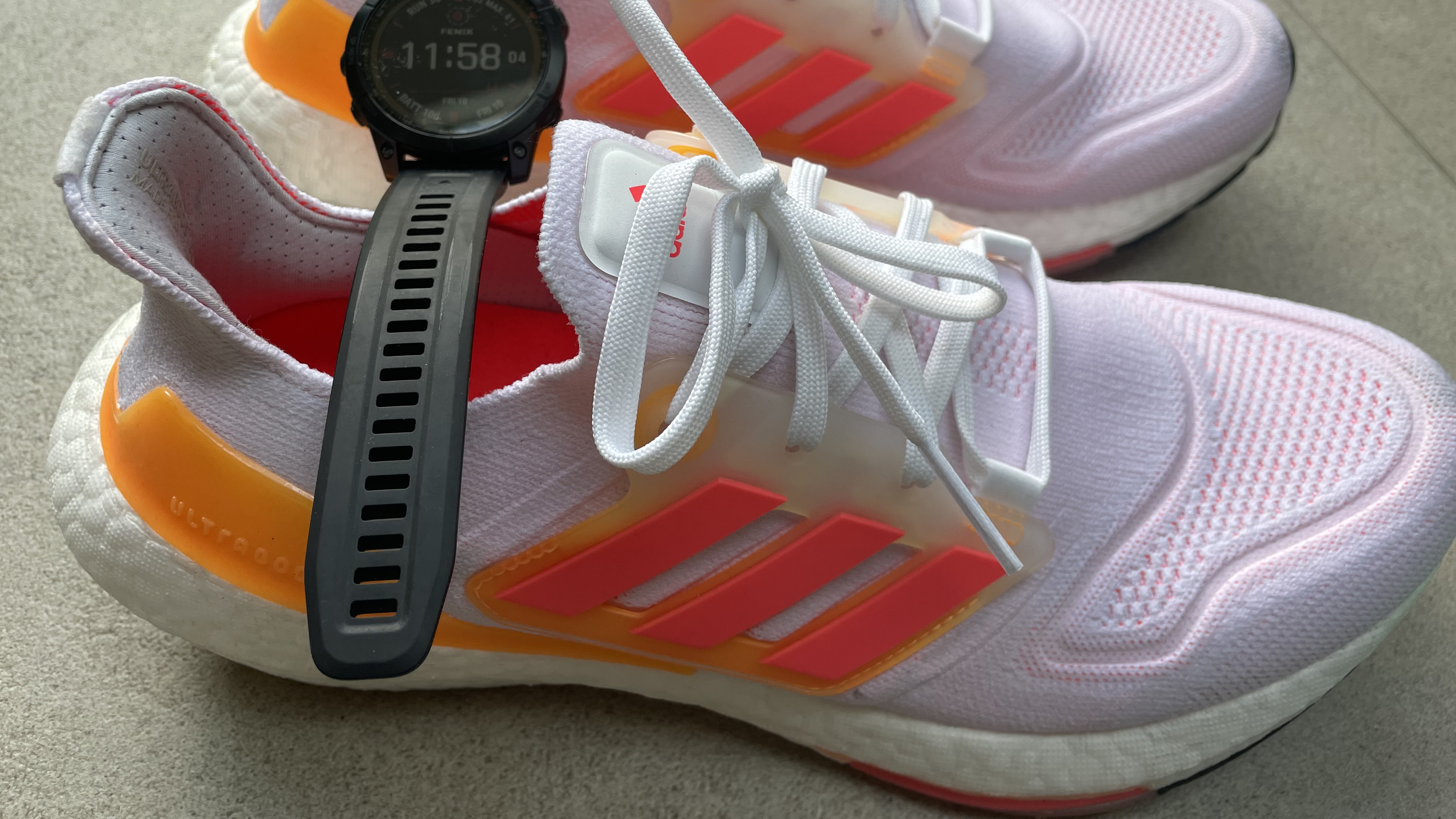
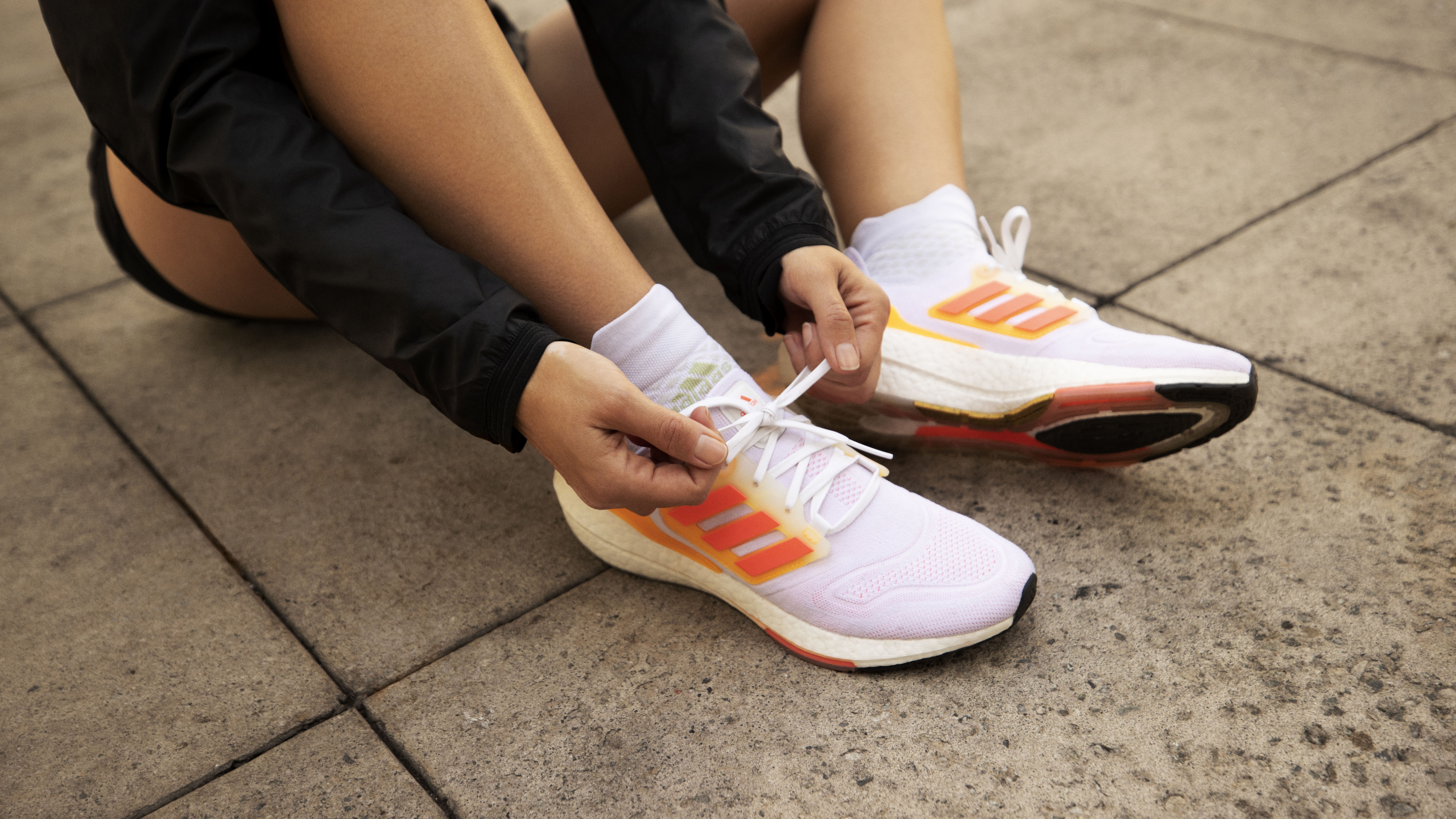
Specifications
Reasons to buy
Reasons to avoid
✅ Regular women's running shoes do not fit you well: This shoe was designed specifically for the female foot.
✅ You run in challenging outdoor conditions: Its sole boasts excellent grip and durability.
❌ You want a racing shoe: It lacks the responsiveness needed for faster runs.
❌ You are on a budget: It is at the upper end of the midrange shoe cost scale
🔎 Adidas Ultraboost 22: Light, comfortable and more responsive than previous models, the Adidas Ultraboost 22 is a stylish workhorse of a running shoe. However, it is not best suited to speedwork and racing. ★★★★
Unlike many running shoes on the market, the adidas Ultraboost 22 has been designed solely for women.
Most running shoes come in male and female versions, but the womens one can often simply be a slightly narrow smaller version of the mens. But using an enormous data set of more than one million feet, the female design team found distinct differences between male and female feet, with women on average displaying a thinner heel and shorter instep.
During our Adidas Ultraboost 22 review, we found this latest iteration of the popular Ultraboost series felt snug and form-fitting, without being too tight.
The Continental rubber outsole offers particularly brilliant grip, as you might expect from a tire rubber, making them a great choice if you run in sometimes slippery conditions. When it comes to cushioning, they are top of the range, with the Adidas Boost foam providing a soft, bouncy ride. You can feel the 22mm of cushioning in the heel, and the 10mm drop helps your foot move through the heel-to-toe transition smoothly.
What the adidas Ultraboost 24 isn’t is a superlight responsive shoe. While we found the cushioning soft and comfortable, we didn’t feel a huge amount of energy return from them. This is a shoe best kept for longer distances and easy runs – something they do brilliantly.
- Read our full adidas Ultraboost 22 review
Best day-to-day running shoes
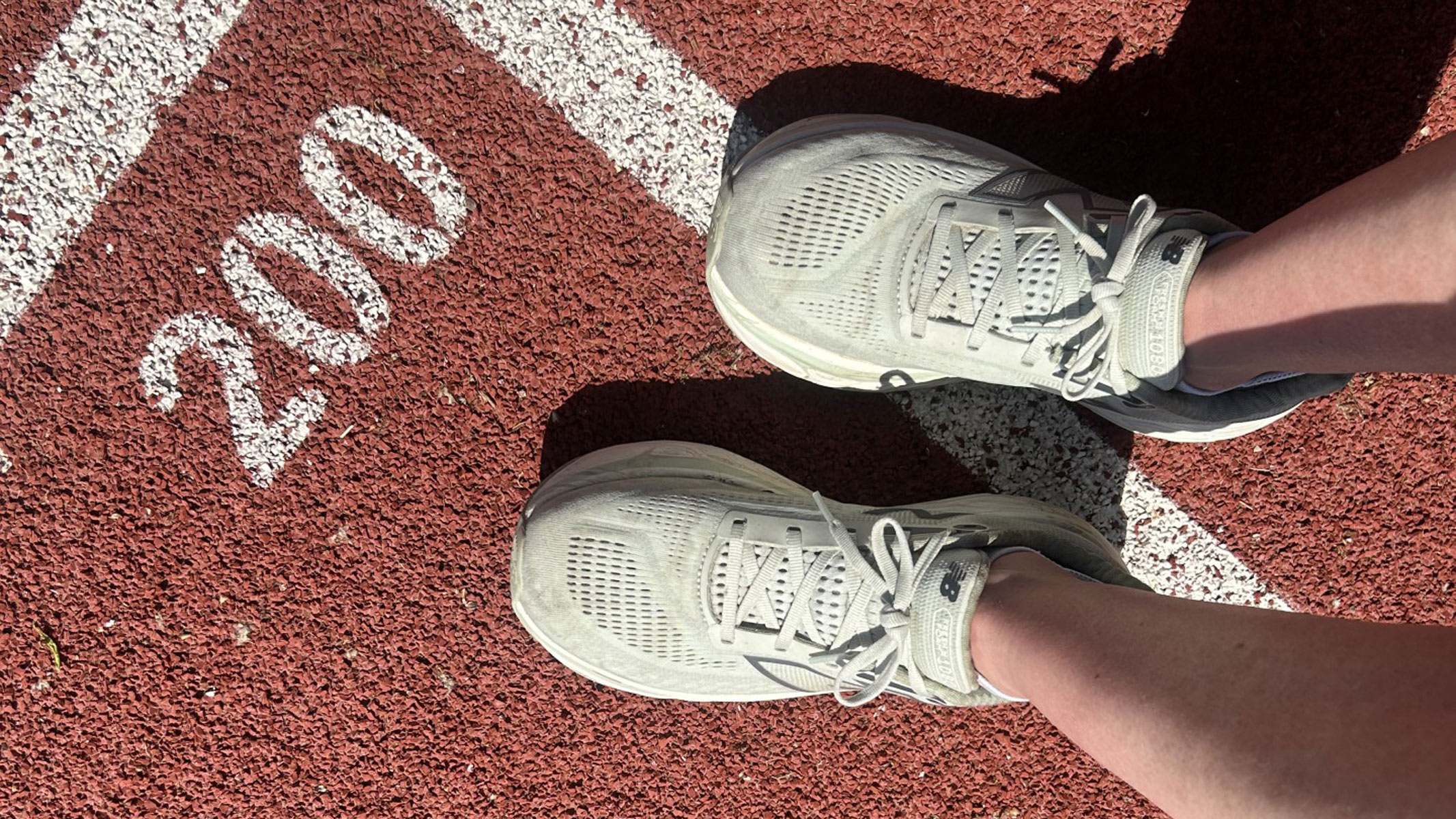
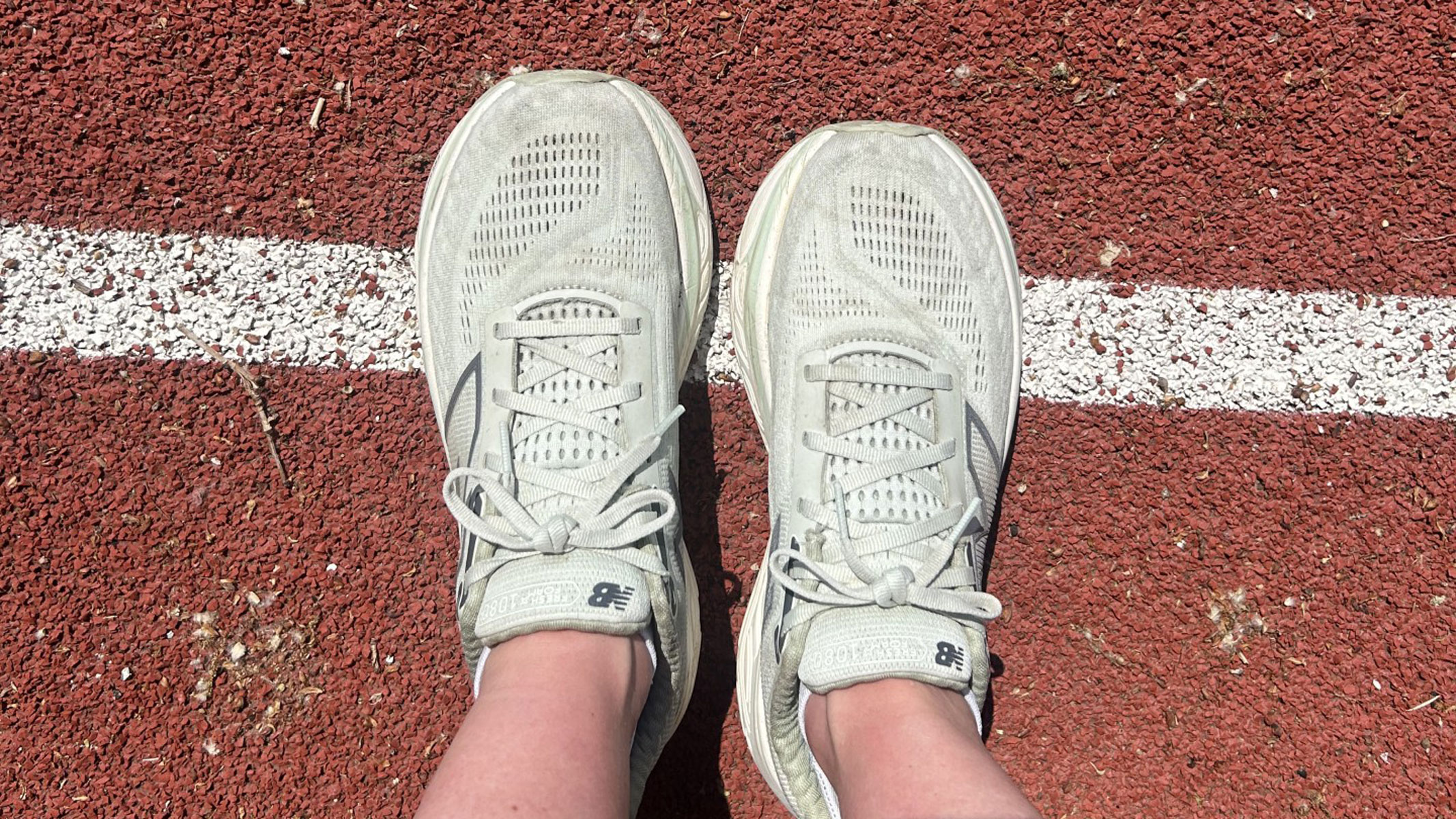

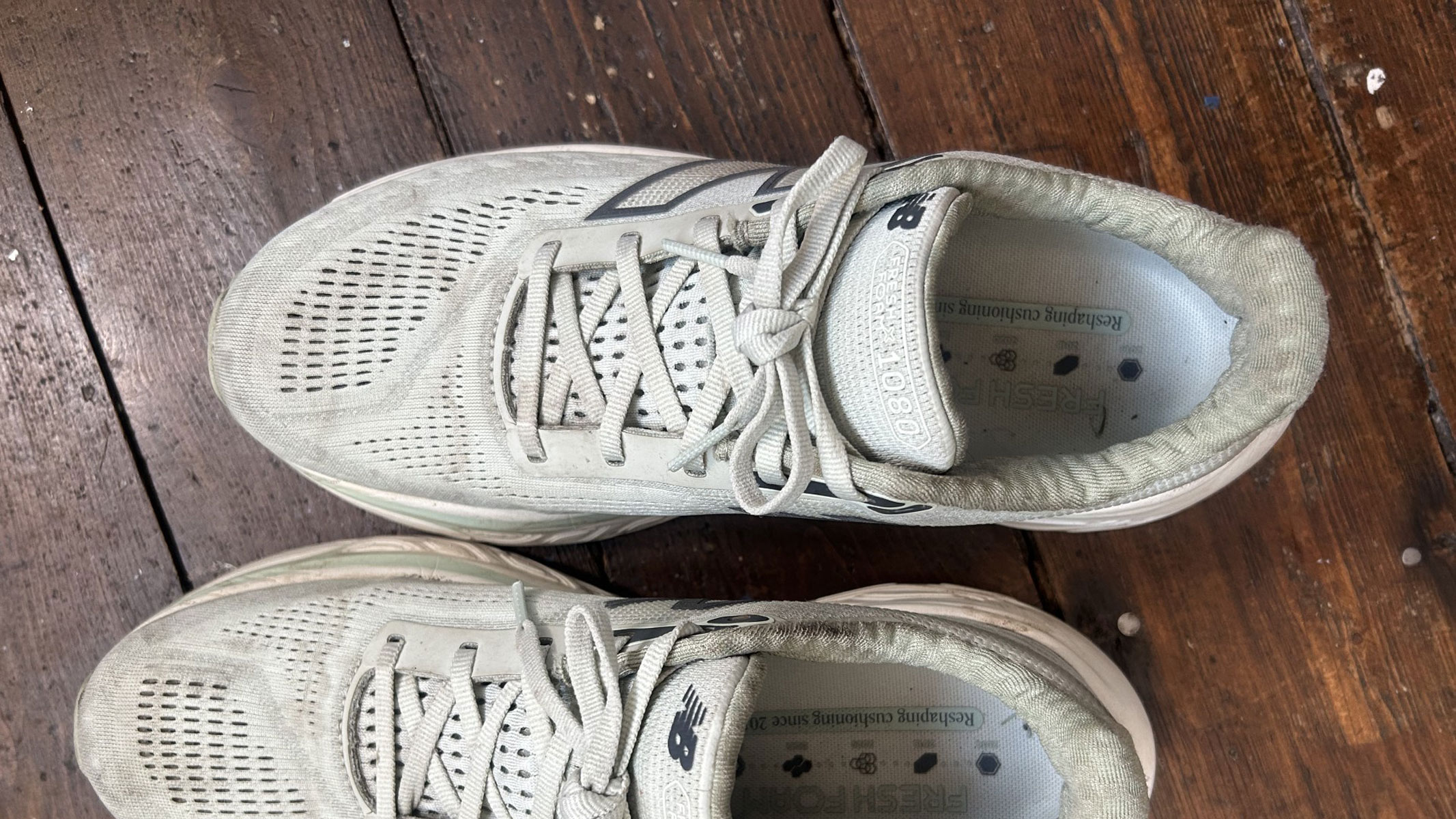
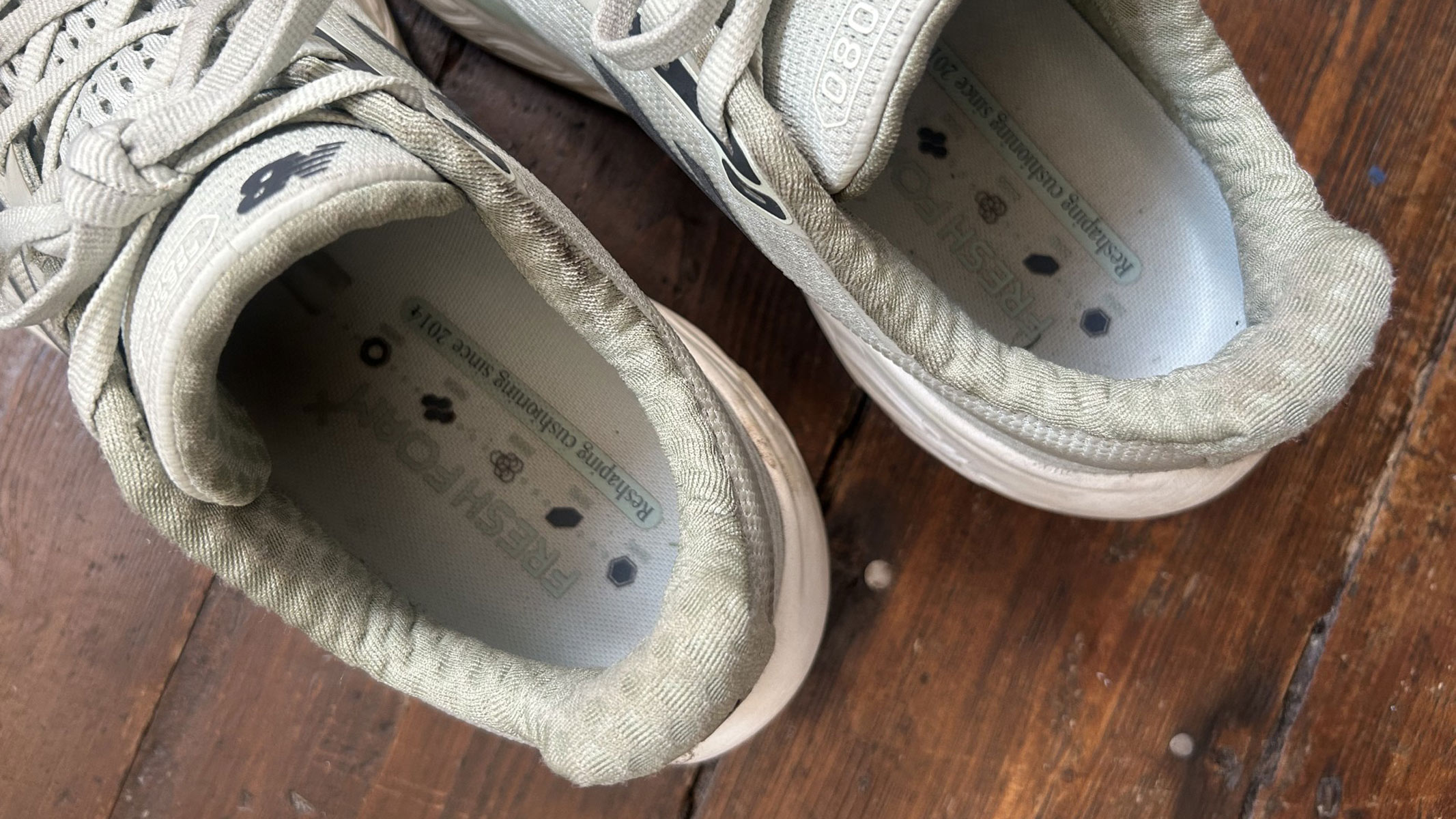
Specifications
Reasons to buy
Reasons to avoid
✅ You want a great all-rounder: This bouncy, comfortable shoe can handle it when you push the pace a little, too
✅ You need a robust shoe for good value: It will last hundreds of miles and handle different terrains like road and light trail
❌ You want a racing shoe: It is definitely more suitable for your every day runs.
❌ You aren't sure of size: New Balance running shoes can come up small, so try before you buy
🔎 New Balance Fresh Foam X 1080v14: They look great, are comfortable and super durable. This is the perfect neutral running shoe for everyday running and training. ★★★★
The New Balance 1080 model has always been a favourite amongst runners, and the latest version opts for the "if it ain't broke, don't fix it" style of update. Changes to the previous model are fairly minimal, though include a redesigned upper and an ever-so-slightly firmer midsole, though only firmer enough to placate those who found v13 just a little too soft.
In our full New Balance Fresh Foam X 1080v14 review, the only negatives we could really say about this great all-rounder is that the sizing can be a bit small, and that it's certainly an everyday training shoe rather than a high-octane performance shoe for race day.
While the shoe is bouncy and responsive, it doesn't have the fast, almost aggressive feel of a race shoe, which these days all tend to have carbon plates inside. But this means it's perfect for those who clock up a lot of miles in marathon training, or just prefer a simple but well-designed shoe that can cope with a bit of bad weather and even some light trail.
There's a reason these shoes are now in their fourteenth iteration. They will last you hundreds of miles, are suitable for beginners through to experienced runners, and they look great too.
- Read our full New Balance Fresh Foam X 1080v14 review
Best running shoes for long runs
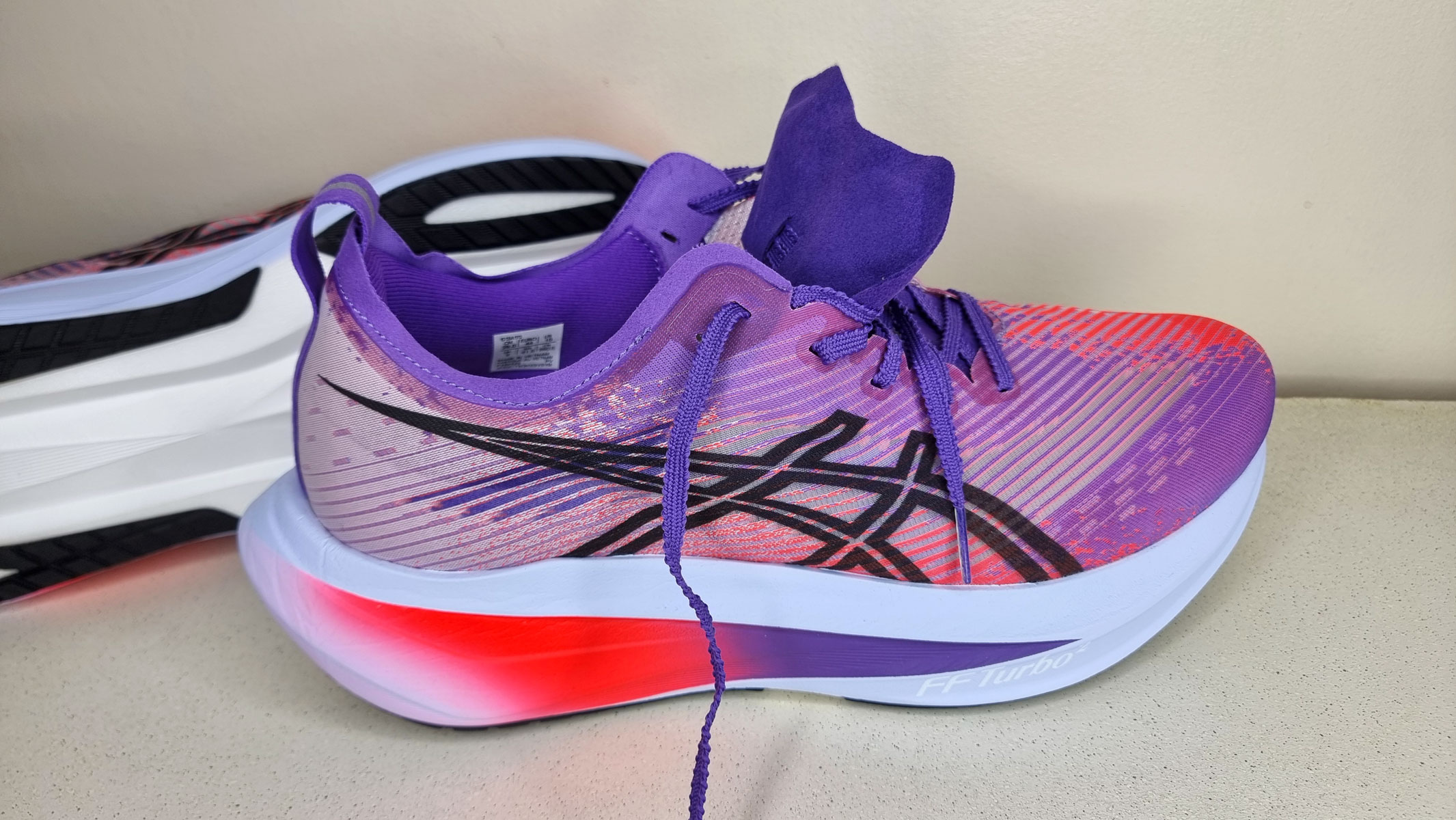
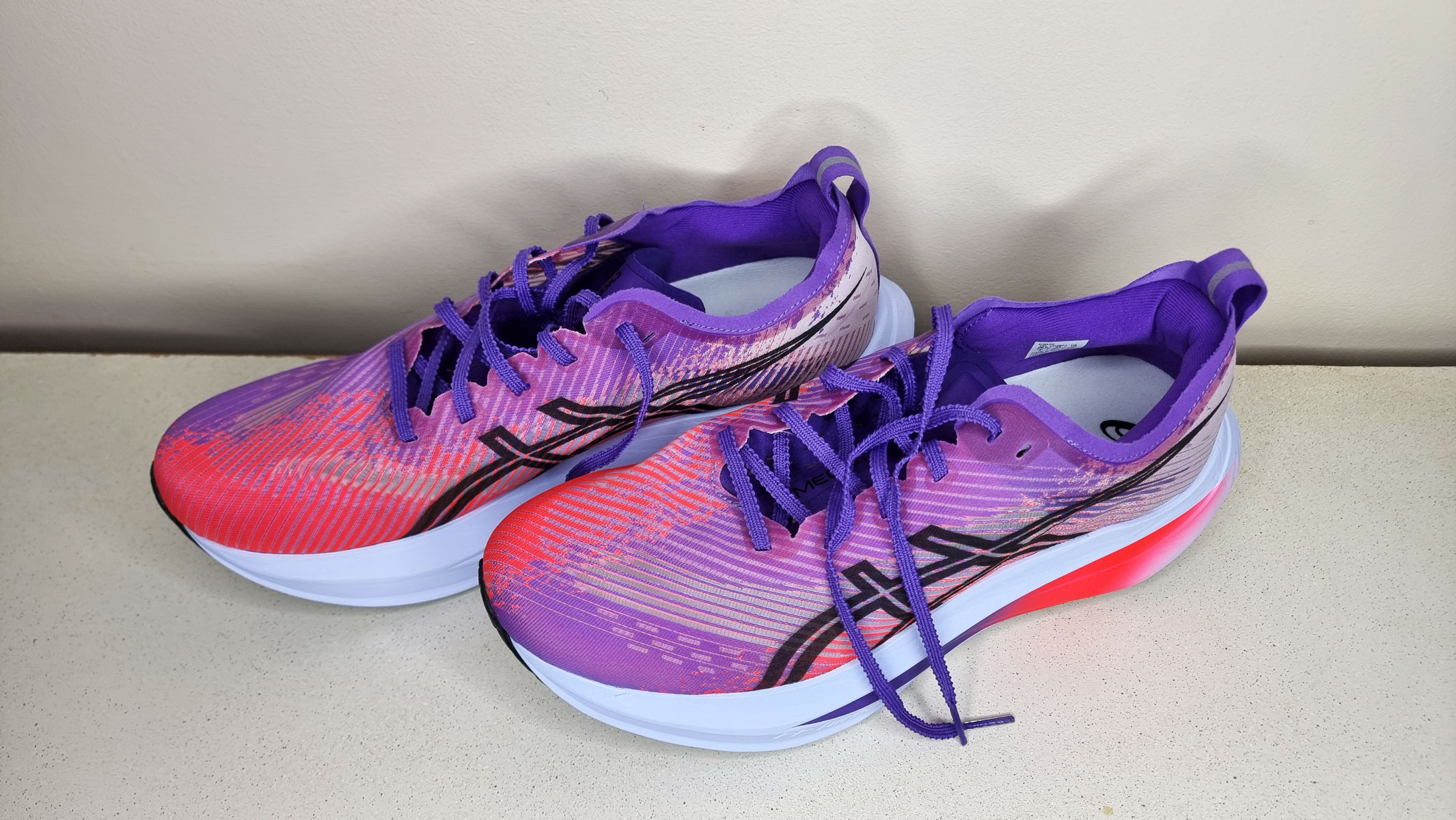
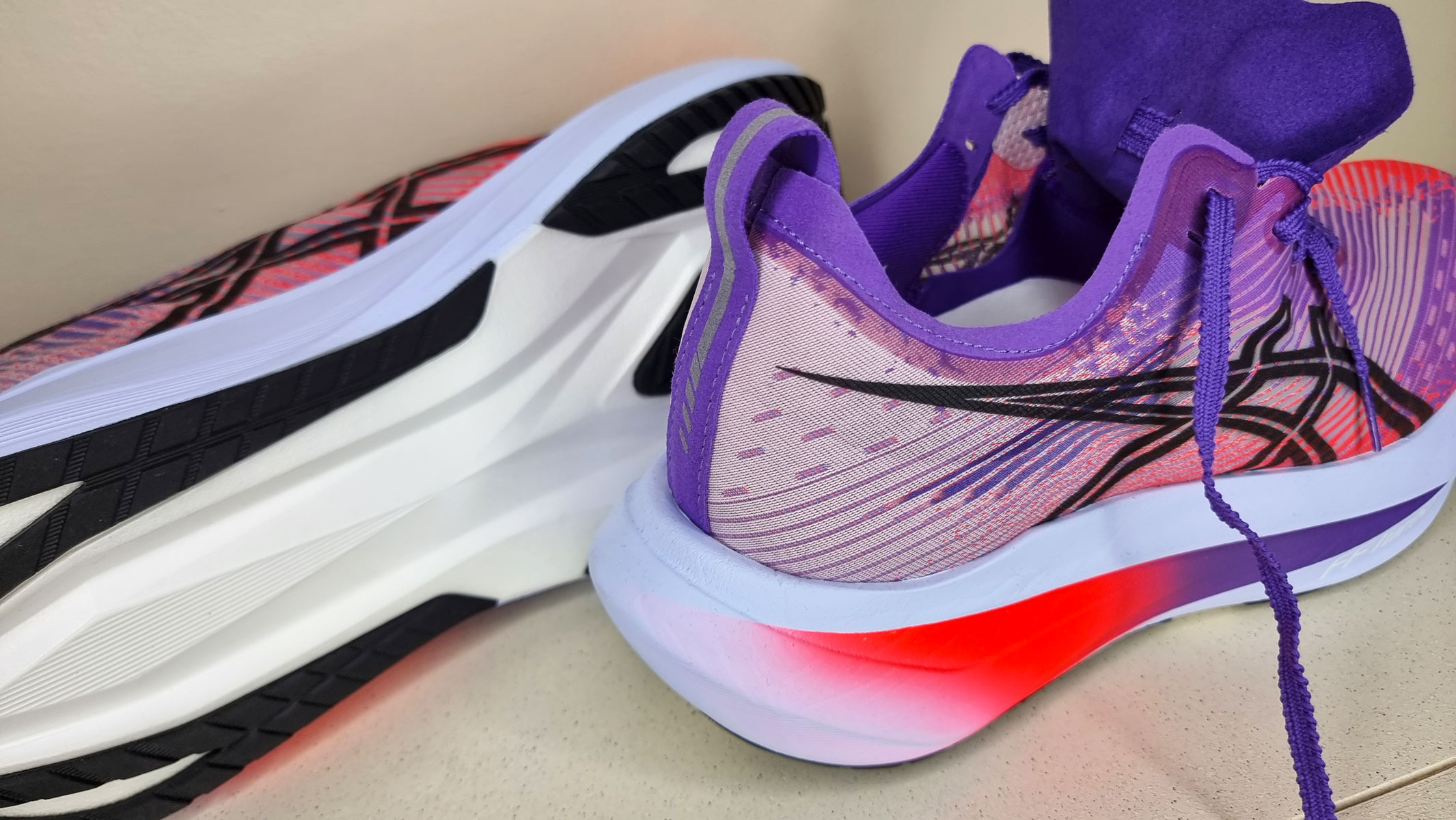
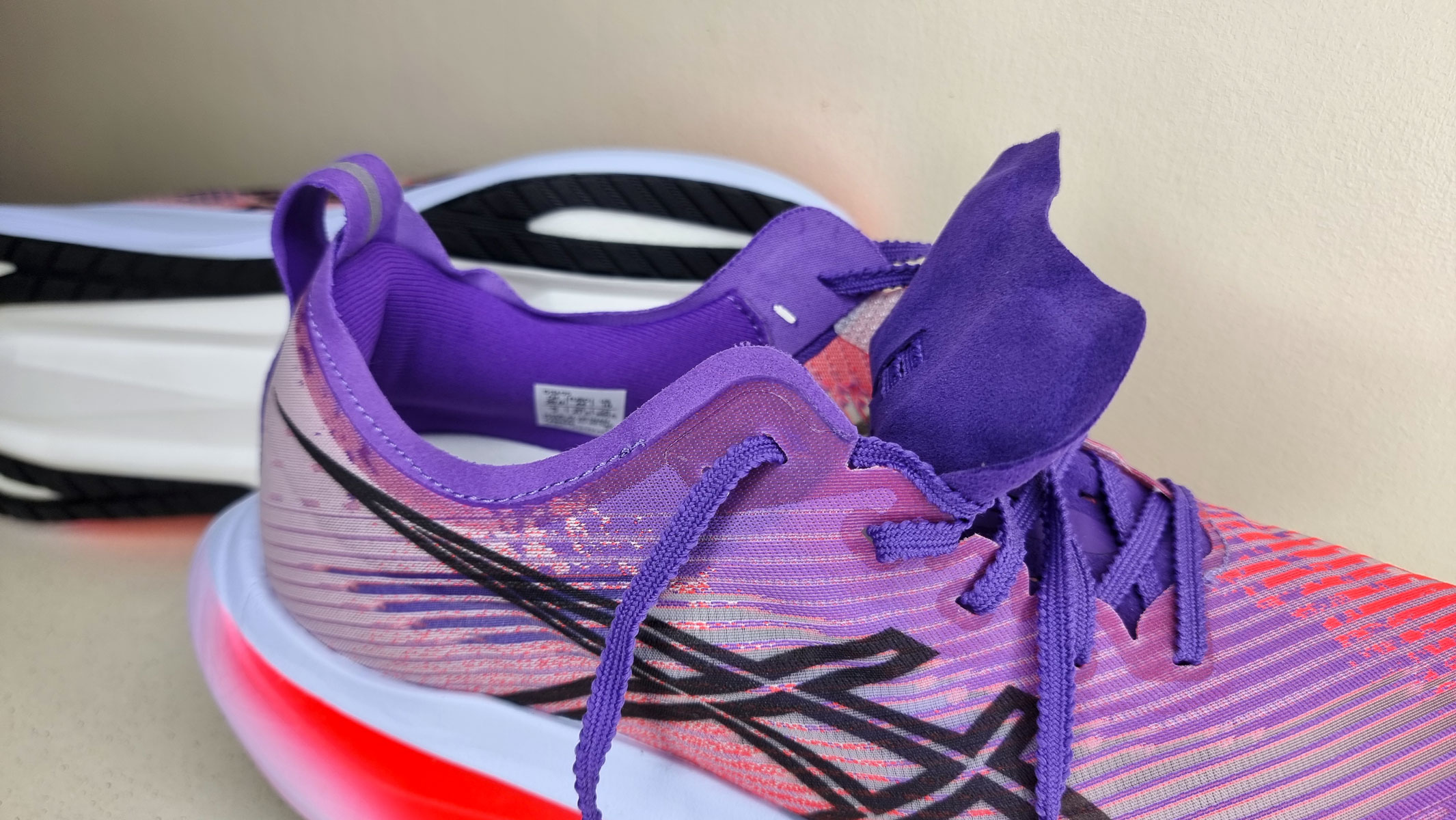
Asics Megablast
Our expert review:
Specifications
Reasons to buy
Reasons to avoid
✅ You want something light and breathable: It is a great summer shoe.
✅ You want a spring in your step: It features soft and bouncy foam in its midsole.
❌ You are looking for extra support: It lacks some stability.
❌ You are on a budget: It is one of the most expensive shoes in this guide.
🔎 Asics Megablast: Lightweight, breathable and pleasantly bouncy, it is the perfect neutral running shoe for long runs and training in the heat. However, it is also slightly unstable and expensive. ★★★★
Looking for running shoes that can help you conquer strenuous marathons and gruelling 10k runs in the summer heat? Then the Asics Megablast is a perfect option for you. Thanks to its lightweight, breathable design, it will keep your feet cool and dry, while its bouncy midsole helps propel you forward when the first signs of fatigue start to set in. These running shoes are also very versatile — they can be used for anything from gentle recovery runs to moderate-intensity speedwork, without compromising on comfort and running performance. They grip the surface well, too.
We tested the Asics Megablast across a range of paces and training styles, and at no point have we experienced any blisters, skin irritation, "shoe fatigue" or discomfort. That said, these running shoes may not suit everyone. For example, people with wide feet may not like its relatively narrow toe box, while some users may not be too keen on its relatively rigid upper.
Not to mention, these running shoes are relatively expensive for what they have to offer. A pair of Asics Megablast will set you back a rather steep $224, which is almost twice as much as nearly every other model mentioned in this guide.
Still, we think these running shoes are worth the money. They perform well on long runs, while still delivering great performance in many other circumstances. The cherry on top? The Asics Megablast look great.
Best running shoes for cushioning

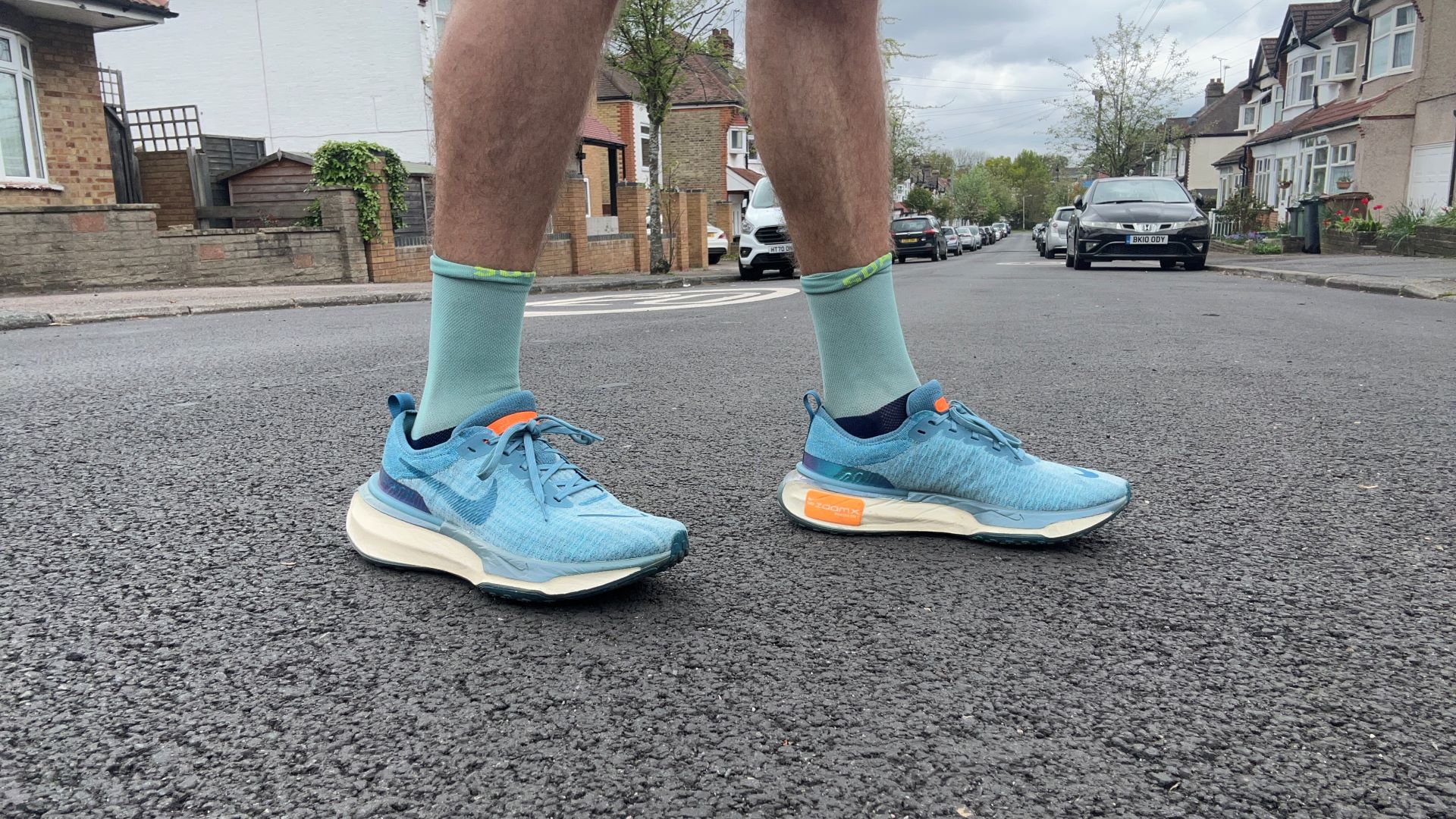
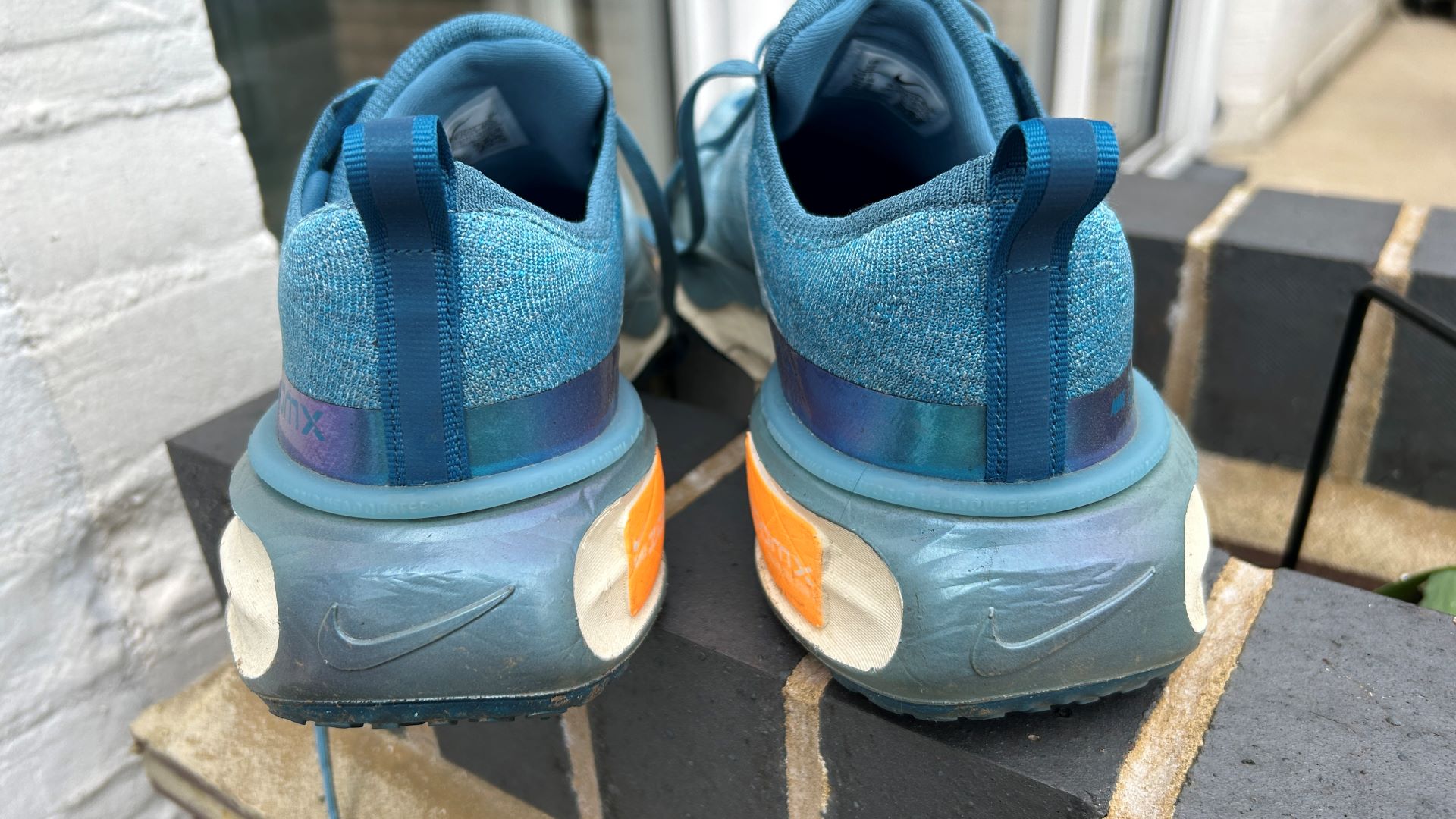
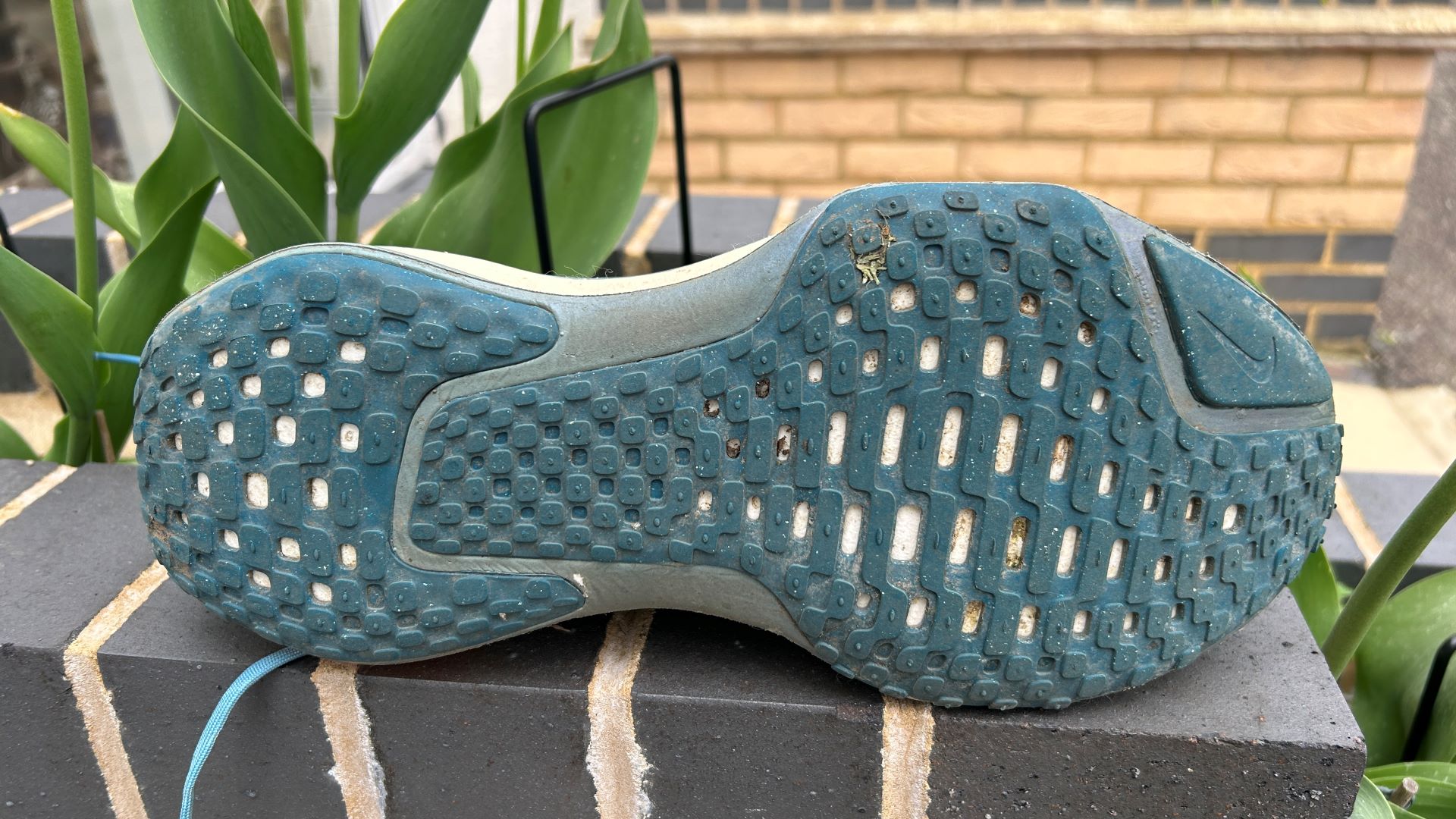
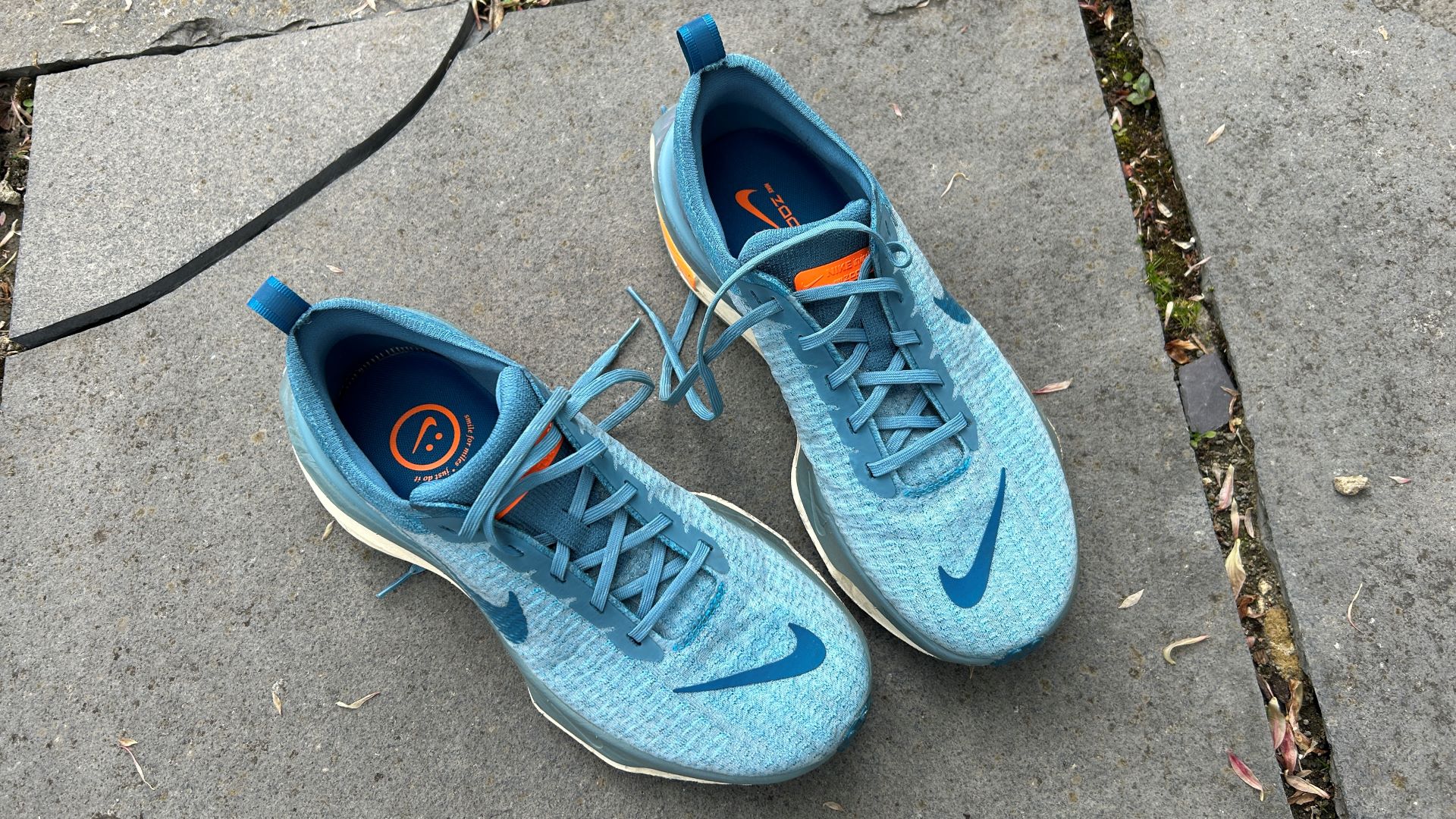
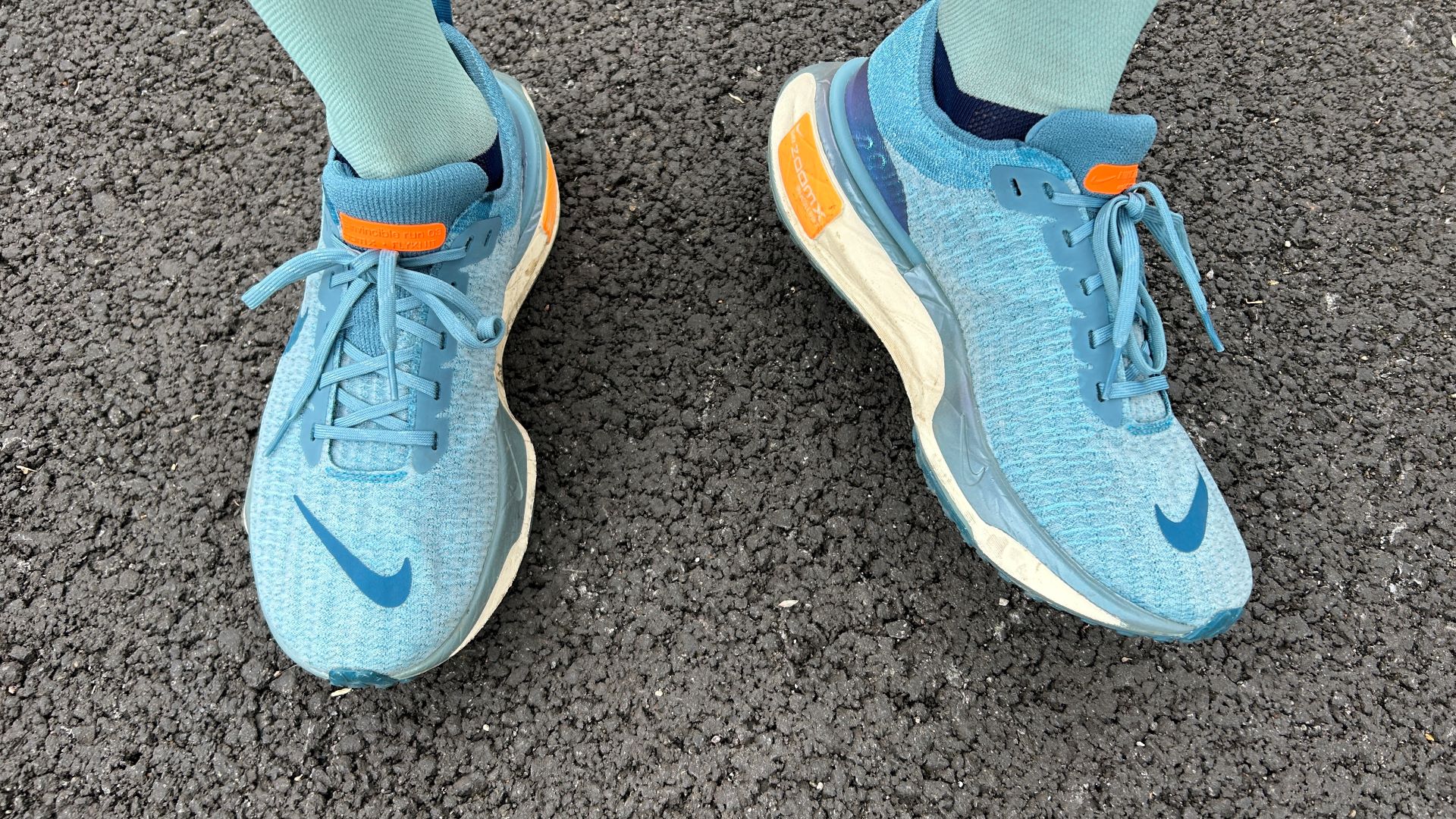
Specifications
Reasons to buy
Reasons to avoid
✅ You prioritize comfort over stability: It is one of the softest shoes in this guide.
✅ You want a spring in your step: It features bouncy ZoomX foam in its midsole.
❌ You are looking for extra support: Not as stable as other shoes in this guide.
❌ You have a narrow heel: This design may feel too loose.
🔎 Nike Invincible 3: With its Springy ZoomX cushioning and bouncy sole, the Nike Invincible 3 is one of the most comfortable running shoe available — but that does come with a compromise on stability. ★★★½
Thanks to the giant stack of bouncy ZoomX foam in its midsole, the Nike Invincible 3 delivers an increasible comfortable and enjoyable ride. It’s extremely soft which might protects your legs throughout the longest runs, while having enough spring that you don’t feel like you’re sinking into the midsole foam too much.
However, it's not a very versatile shoe. It's too soft and bulky for faster running, and the lack of stability makes it unsuitable for some over longer runs even though it is very comfortable. It's a great shoe for easy daily training but not for faster runs or those who need support.
During our Nike Invincible 3 review, we noted that had the new heel design on this model can feel quite loose. Some runners have found that it can start to rub during runs. It's super soft midsole also makes it not particularly stable, though stability on this third version has been improved a little with a wider base and a redesigned heel clip to cradle the foot better. However it certainly still offers less structure and support than other cushioned options, even in the neutral shoe space. It's also on the expensive side.
- Read our full Nike Invincible 3 review
Best running shoes for comfort
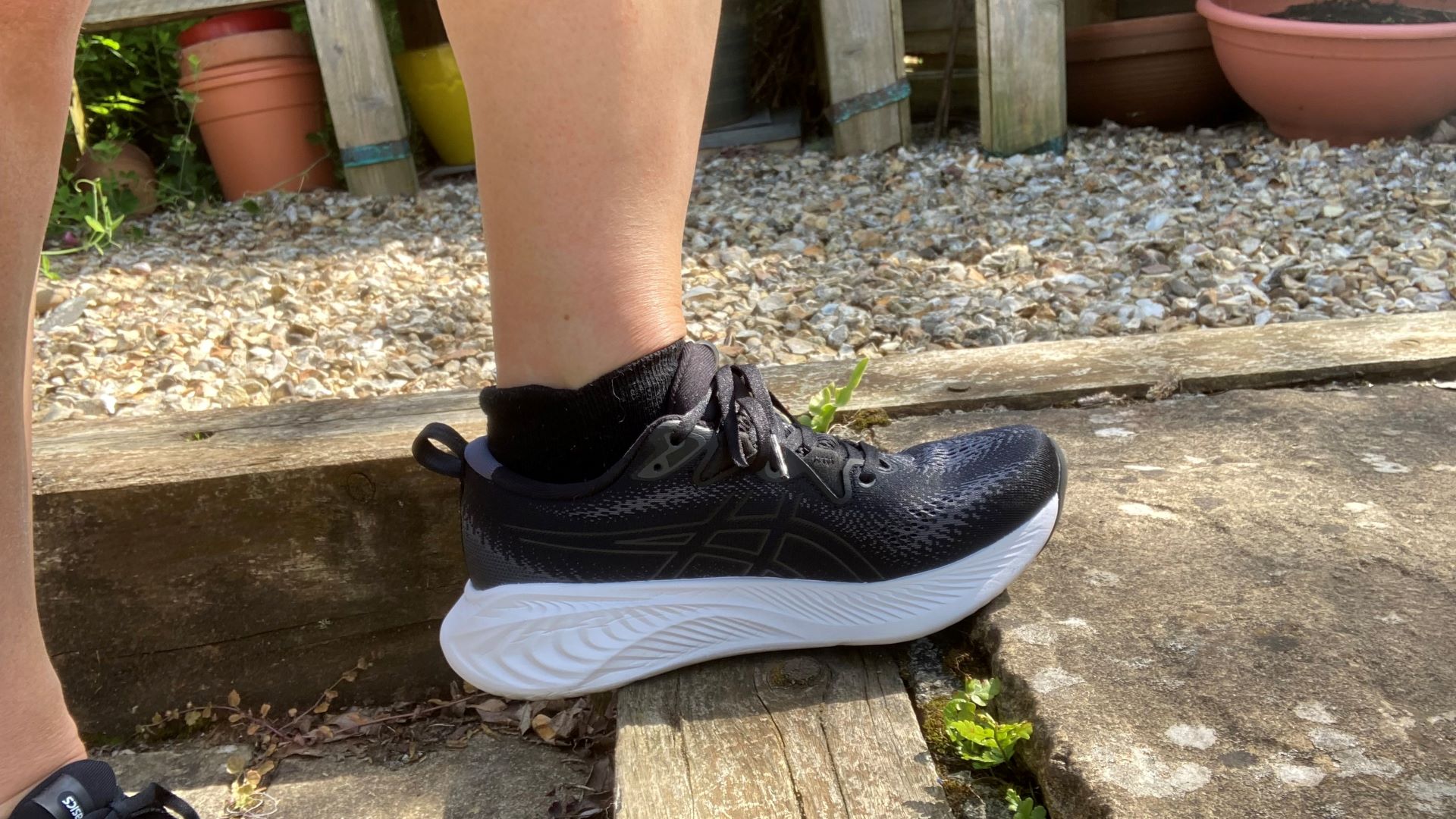
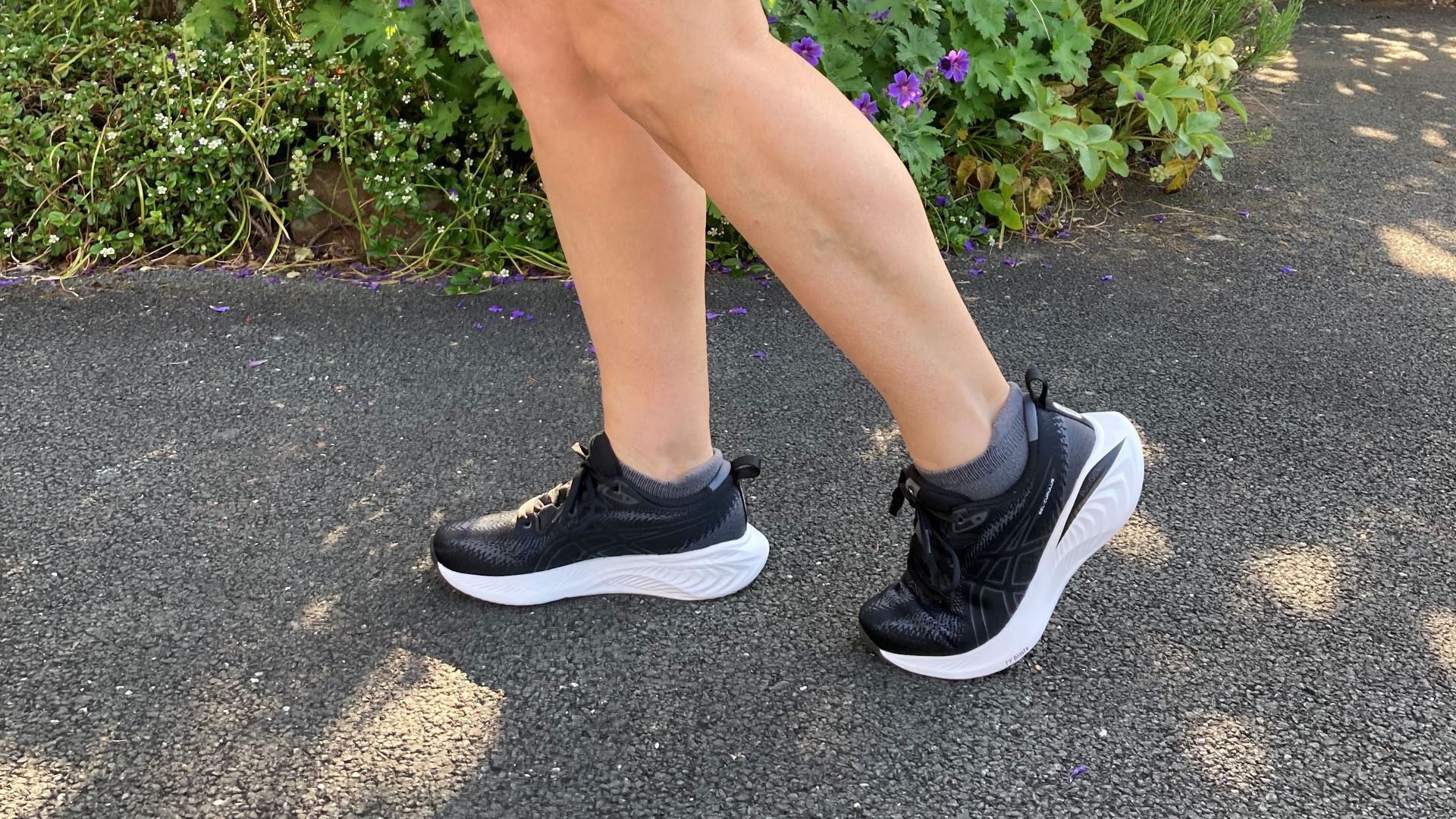
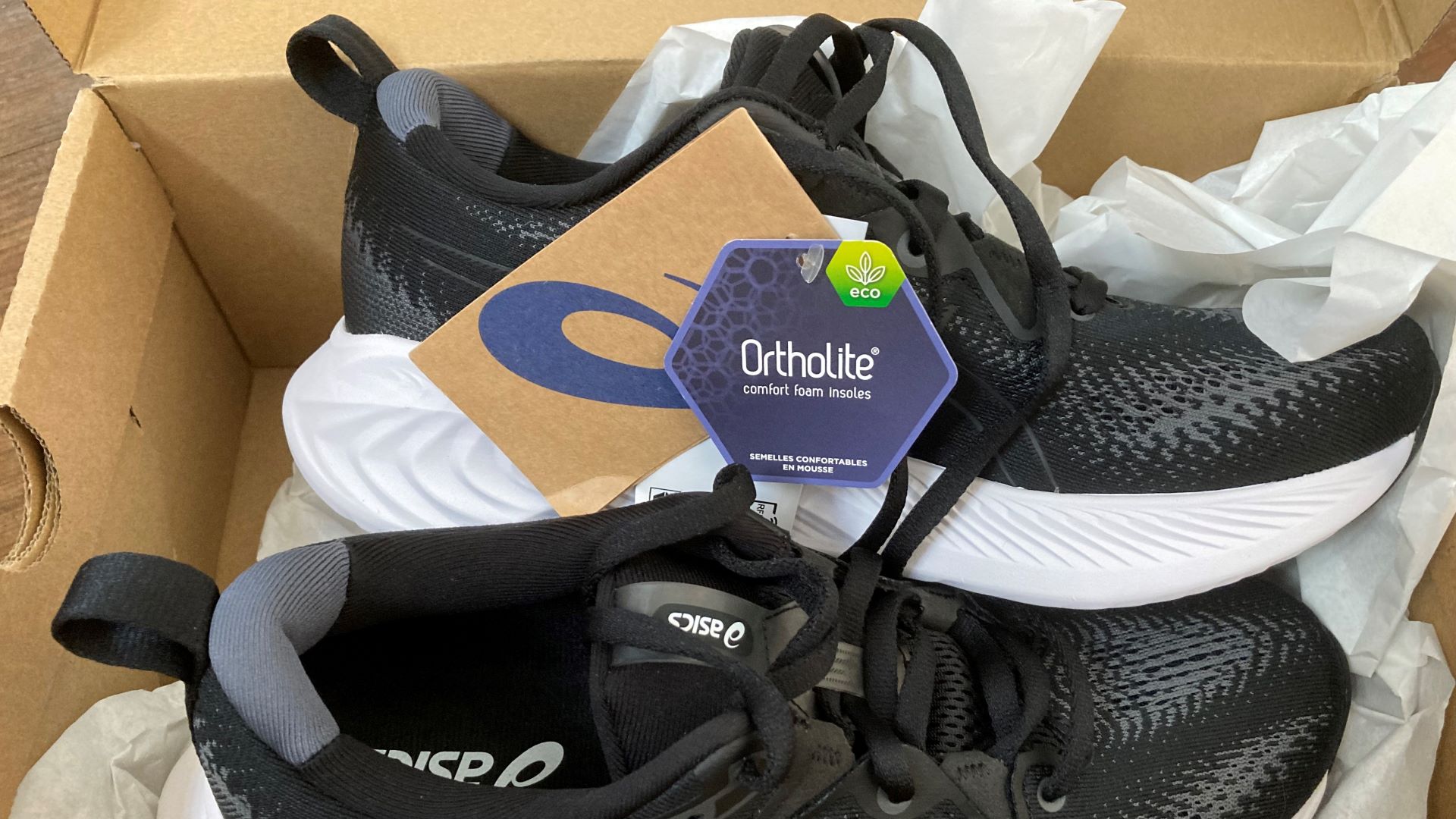
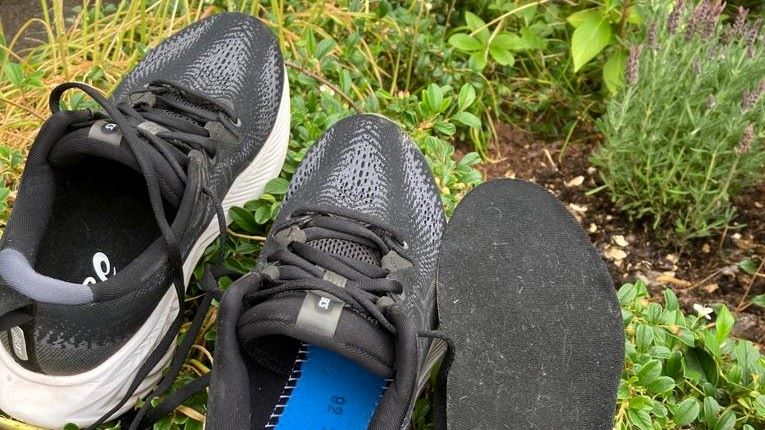
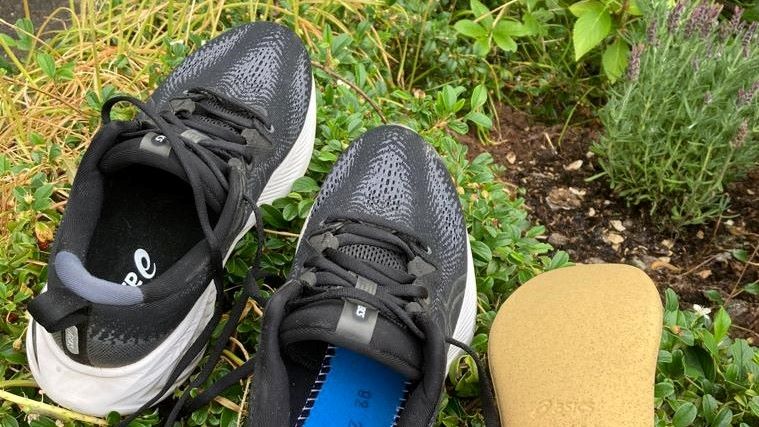
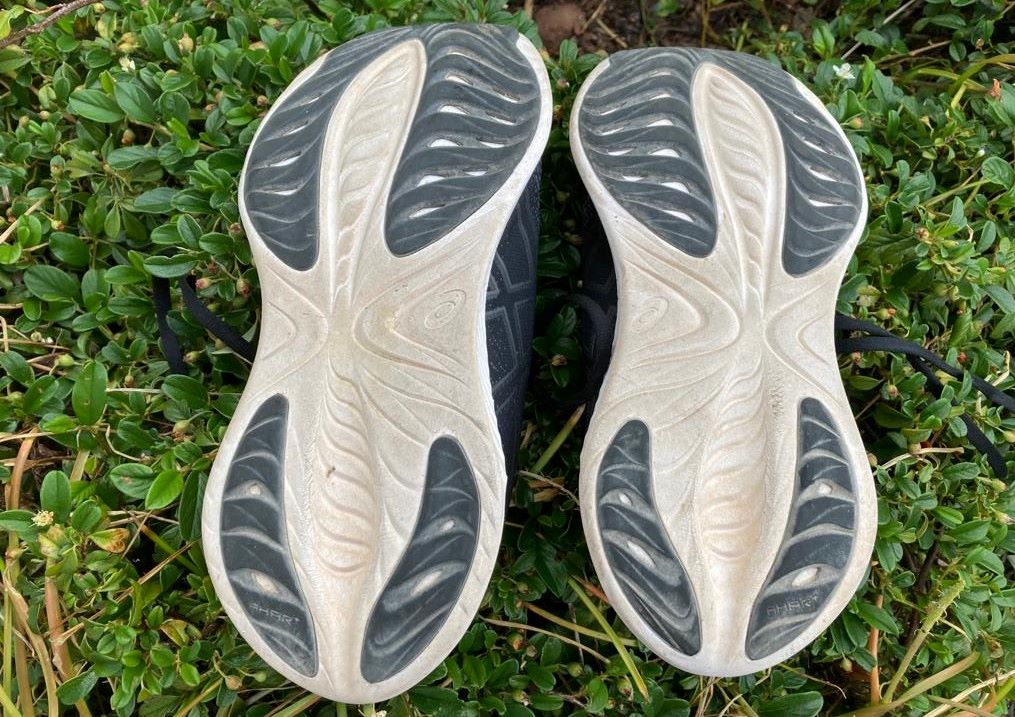
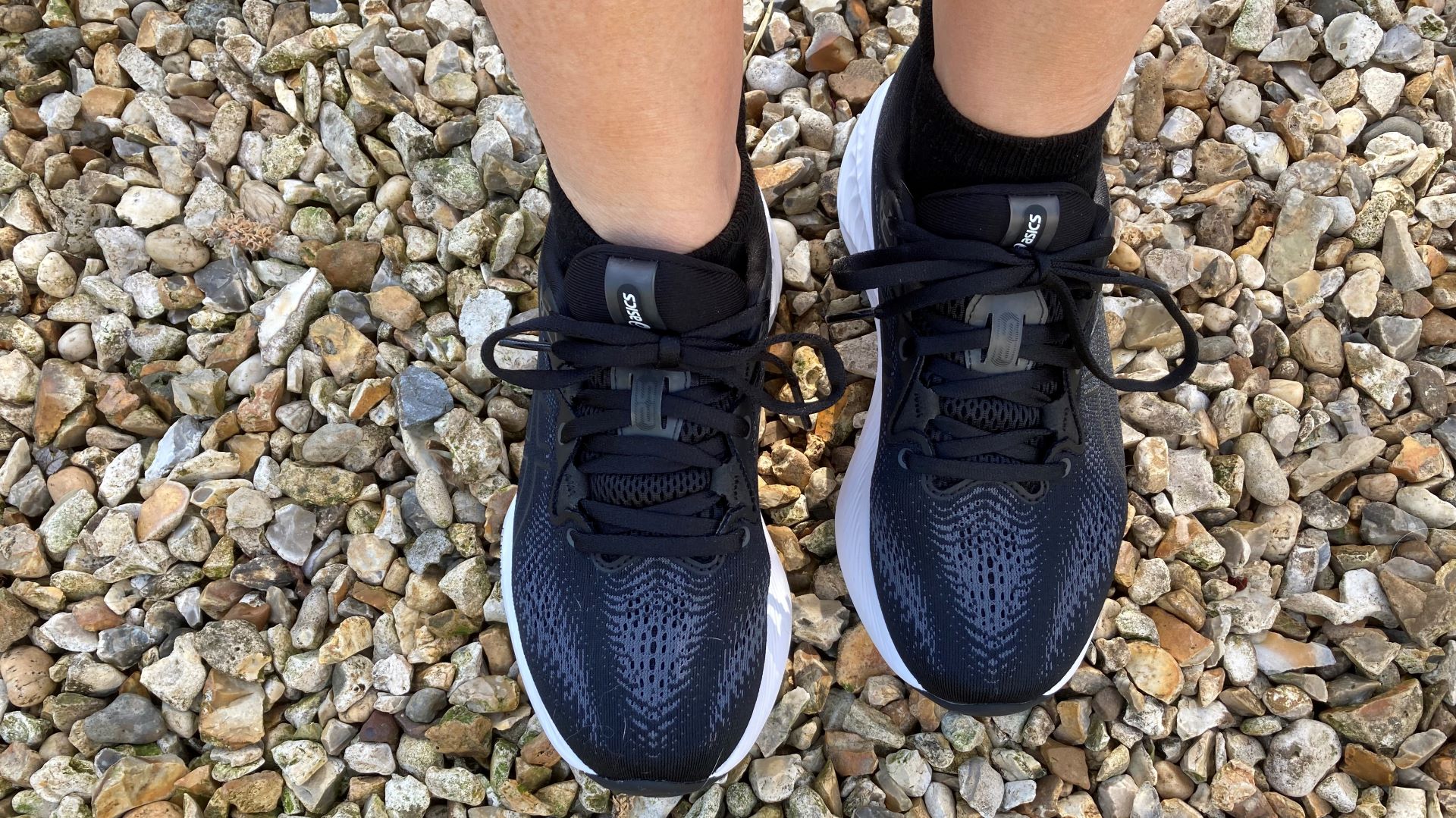
Specifications
Reasons to buy
Reasons to avoid
✅ You want a lightweight shoe: It will not weigh down your foot.
✅ You want to protect your feet from heavy impact: It features shock-absorbing cushioning.
❌ You are looking for extra support: Not as stable as some shoes in this guide.
❌ You want unique designs to choose from: This shoe is not available in many colorways.
🔎 Asics Gel-Cumulus 25: This lightweight running shoe offers excellent shock absorption and cushioning, but it runners should note it does lack structural support if that is needed. ★★★★
As with all popular shoes, the Gel Cumulus 25 has been tweaked and updated from previous versions. It's never been quite as popular as the more cushioned Gel Nimbus but it is a little cheaper, and still offers great value for money.
Some runners will actually really appreciate the less maximal cushioning, finding them more responsive. And during our Asics Gel-Cumulus 25 review, we were impressed by its shock-absorbing cushioning.
The lightness of this model outdoes the previous version by approximately 0.3oz/ 10g per shoe but has less in the way of outsole rubber. The mesh upper remains the same mix of mesh and canvas and does the job of keeping the upper foot cool on hot days and more intense training sessions.
The Gel-Cumulus 24 has a different outsole to its predecessor. There is less overall outsole rubber but this is placed strategically at the heel sides and toe areas.
If you are searching for a lightweight running shoe that still has enough cushioning to feel plush, and to keep you injury-free and comfortable, look no further than the Asics Gel Cumulus 25.
- Read our full Asics Gel-Cumulus 25 review
Best all-rounder
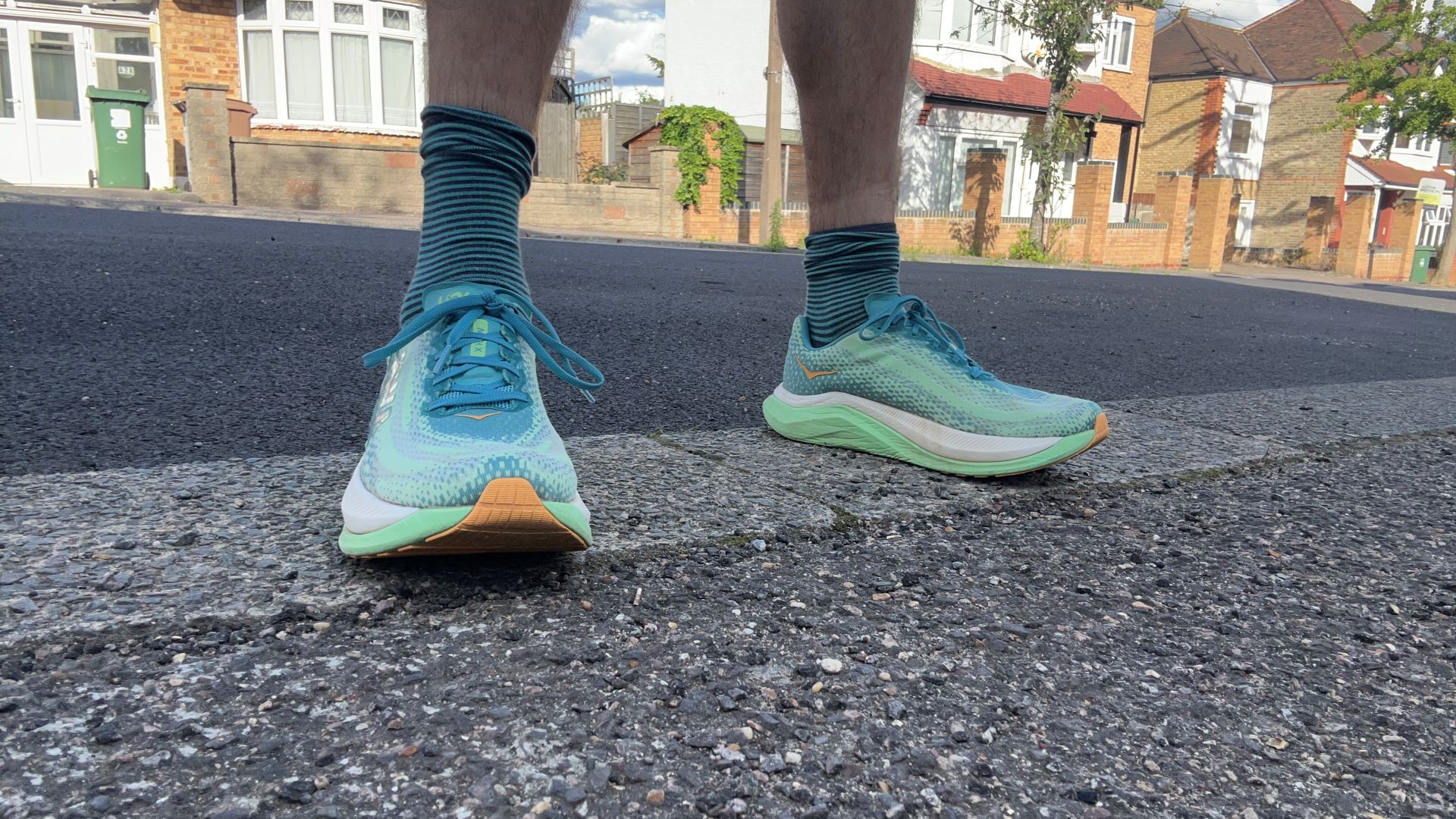
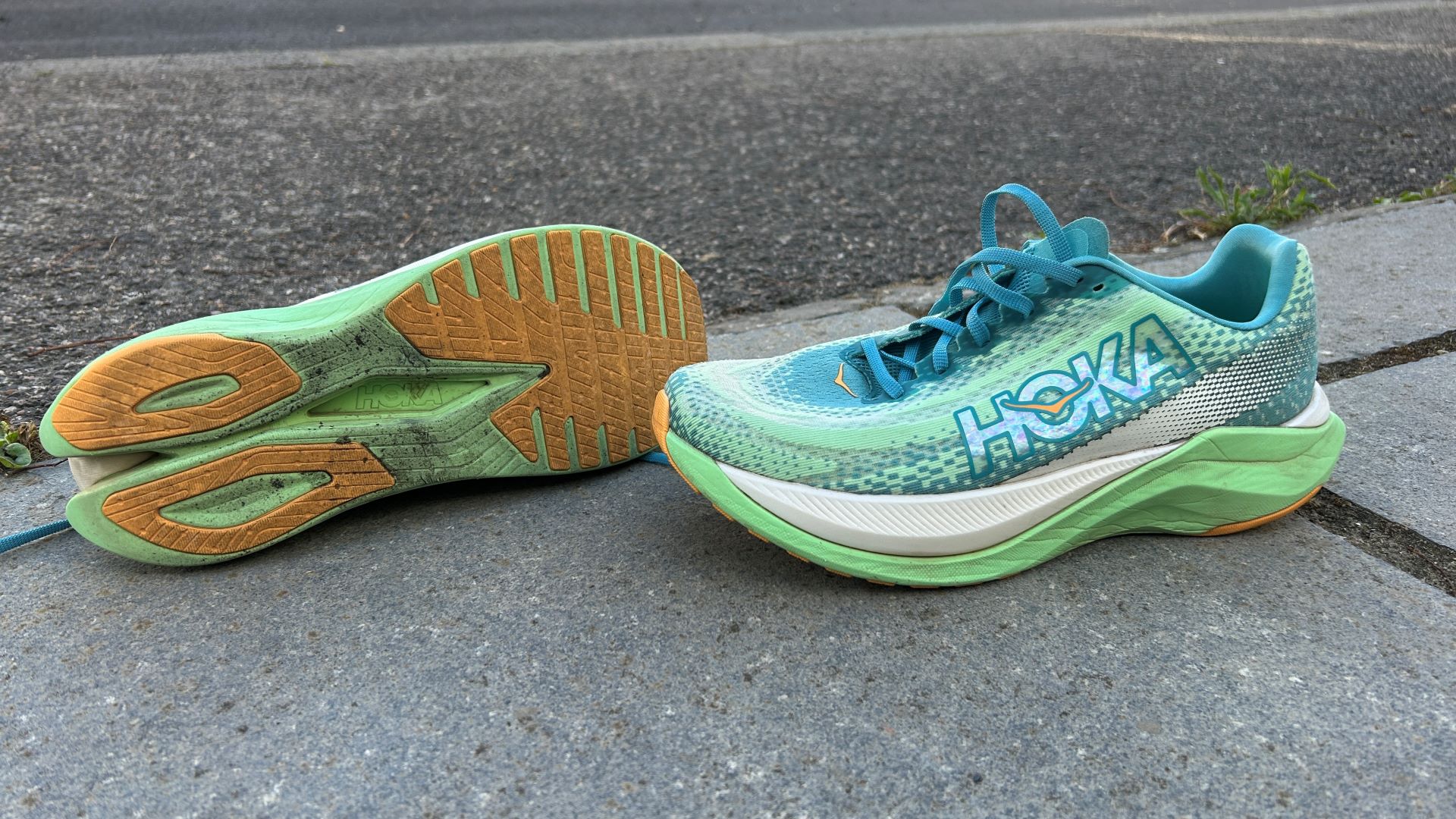
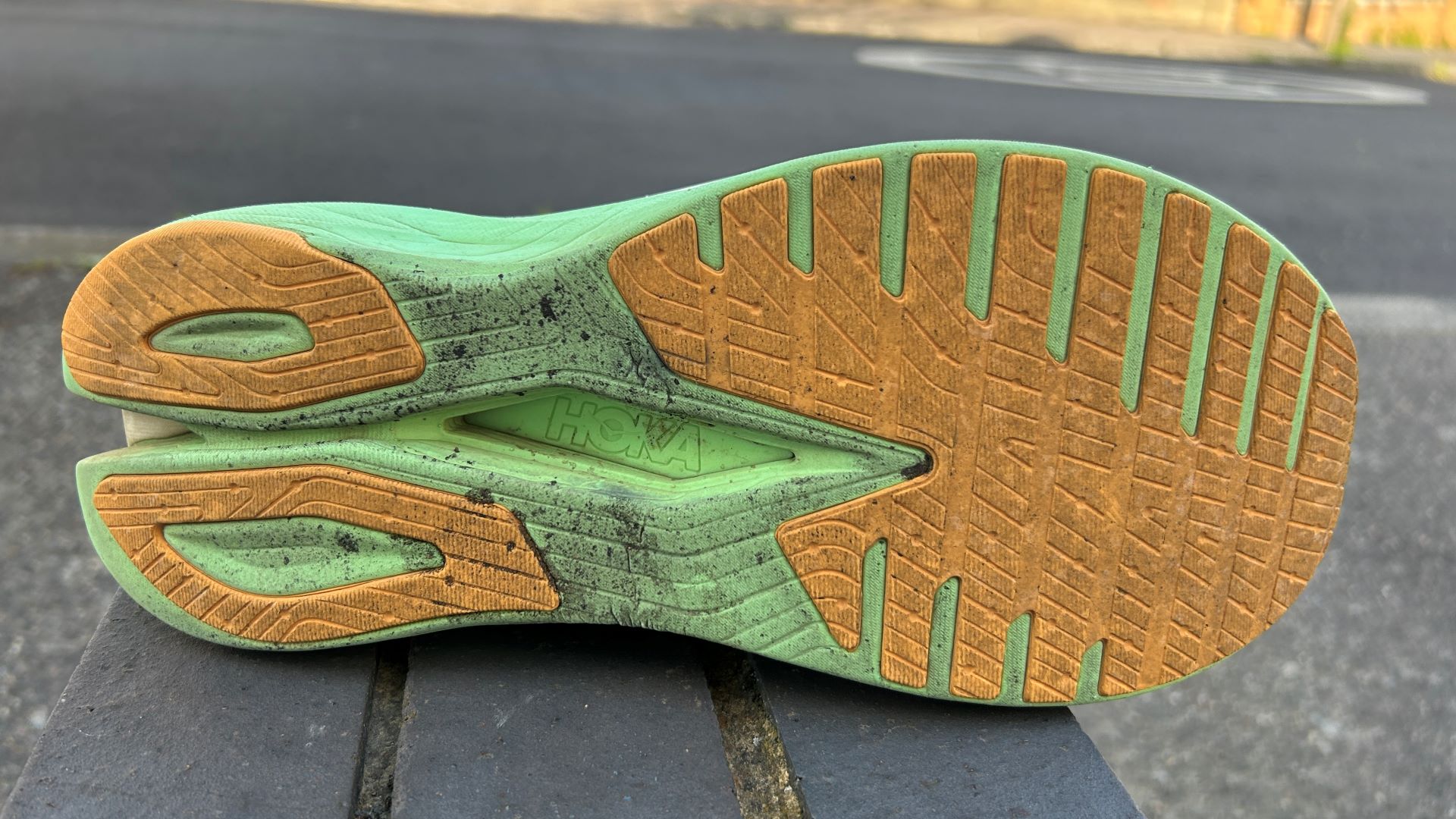
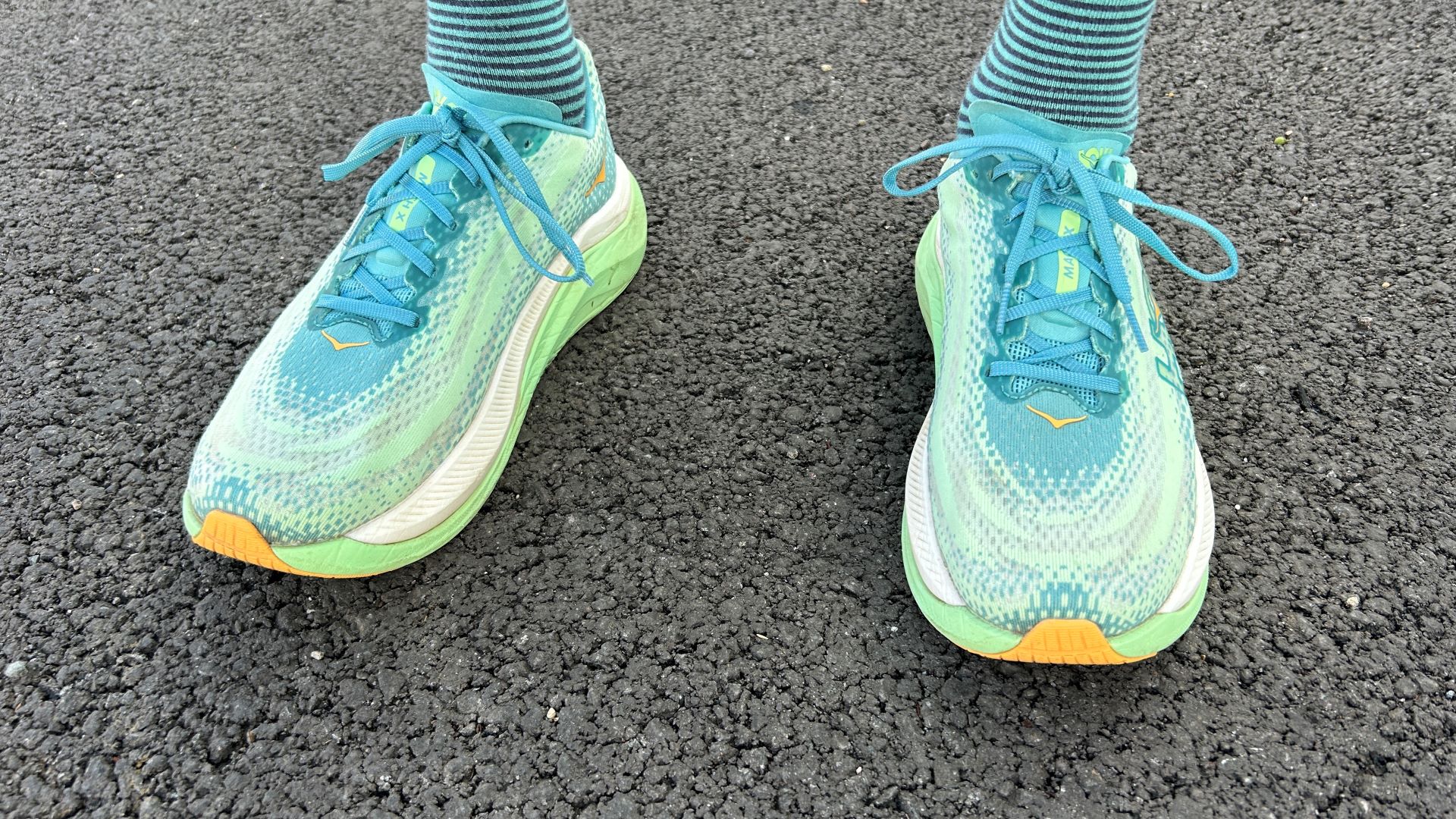
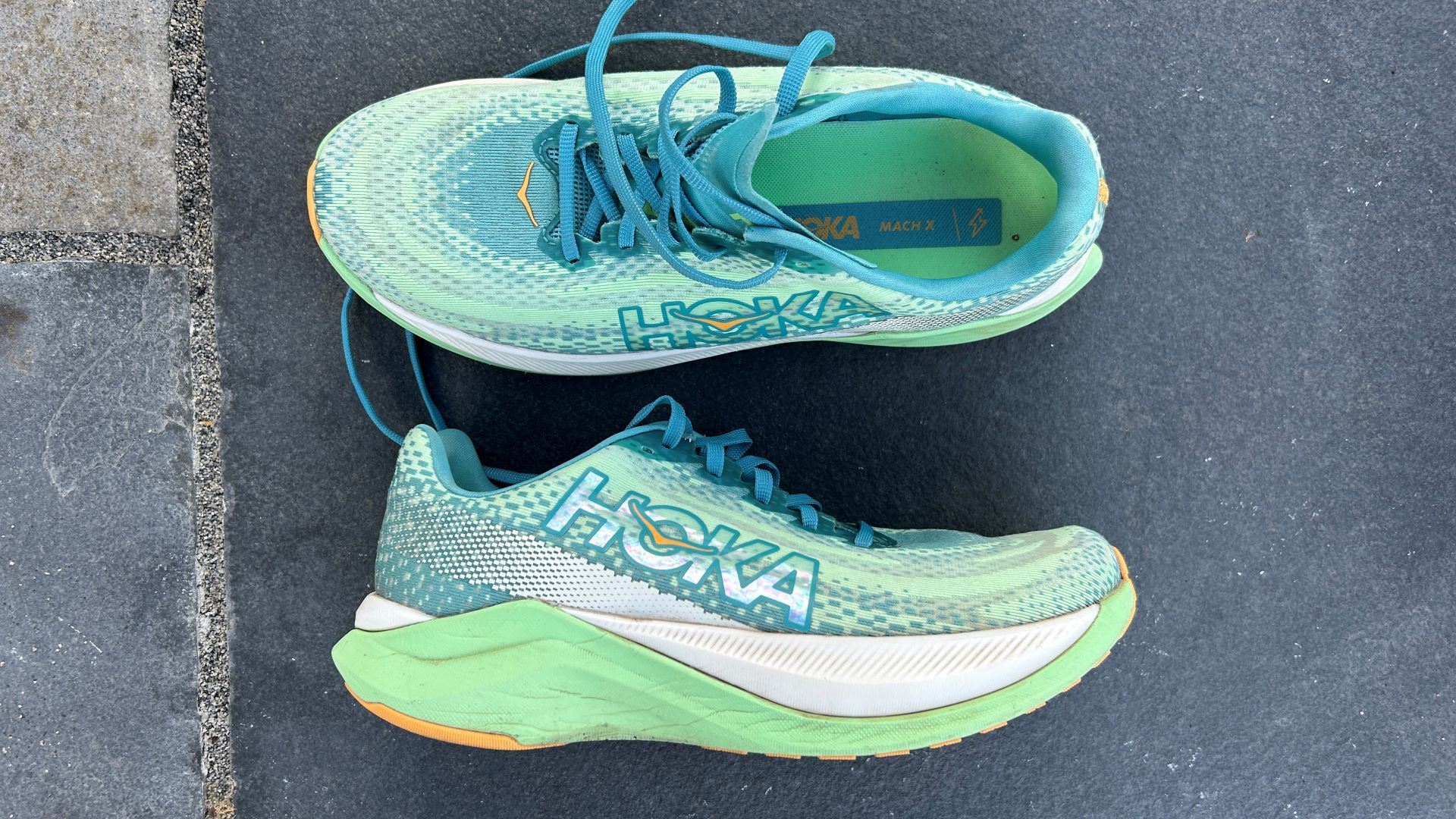
Specifications
Reasons to buy
Reasons to avoid
✅ You want a versatile shoe: It is suitable for different workout types.
✅ You tend to run in outdoor conditions: It is durable and should last you through a lot of miles
❌ You are on a budget: Hoka shoes are on the expensive side.
❌ You do not want a plated trainer: It may feel too stiff.
🔎 Hoka Mach X: This plated running shoe combines versatility with stability and comfort, making it a great option for those looking for a shoe all rounder. ★★★★
The Hoka Mach X uses some of the top foams and technology at Hoka’s disposal, including a Pebax plate to drive your foot forward on take off. That combines to make it a versatile option for more up tempo paces and workouts. Because the plate is Pebax rather than the top of the range carbon option favoured by the top race shoes, it is a more affordable and stable alternative. Overall we gave it a strong 4 stars in our Hoka Mach X review.
In the midsole Hoka has used two foams—a soft PEBA-based top layer adds bounce while the firmer EVA bottom layer creates stability and increases durability. Sandwiched between the foams is the plate, which adds pop without being as stiff and propulsive as a carbon plate. That does, however, make it more comfortable for many.
However, it's certainly true that other plated trainers offer more speed than the Hoka Mach X - for example the Saucony Endorphin Speed 3 and Adidas Boston 12. However, many runners find it is more comfortable than those shoes for runs at relaxed paces, especially for newer runners perhaps trying out a plated shoe for the first time. Like all plated shoes, however, it can seem clunky at slower paces.
- Read our full Hoka Mach X review
Best for run/walkers
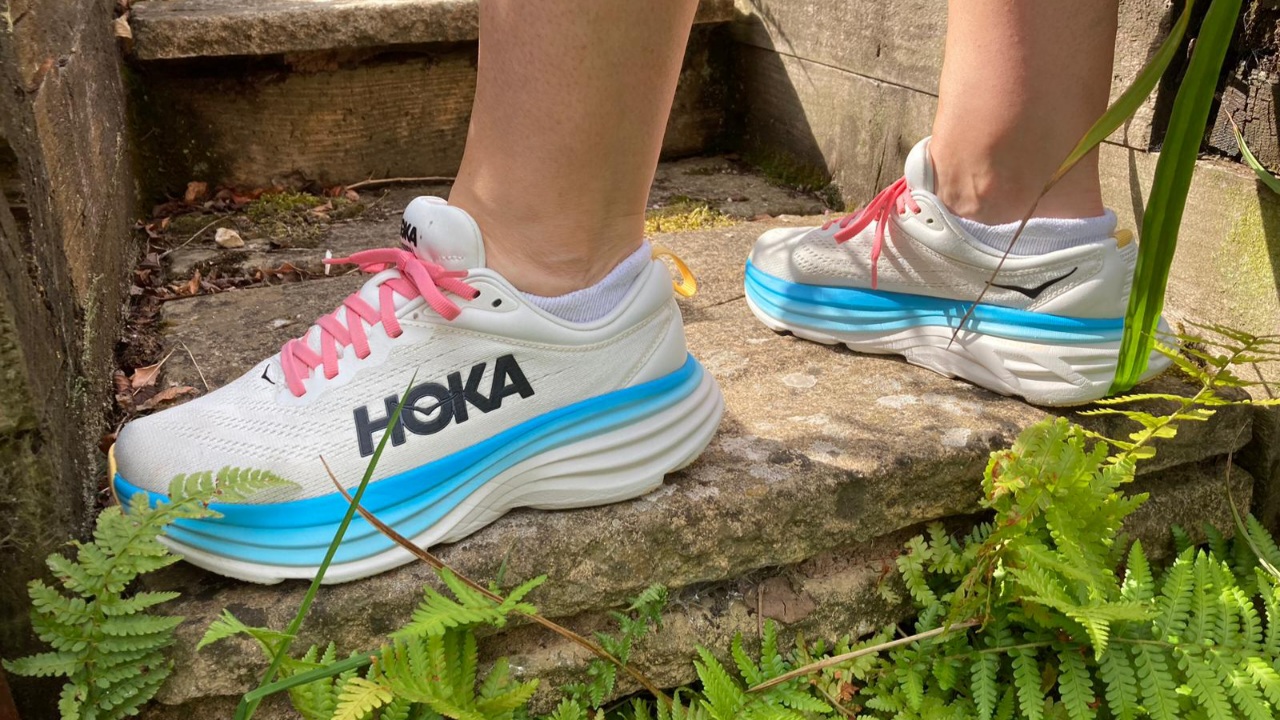
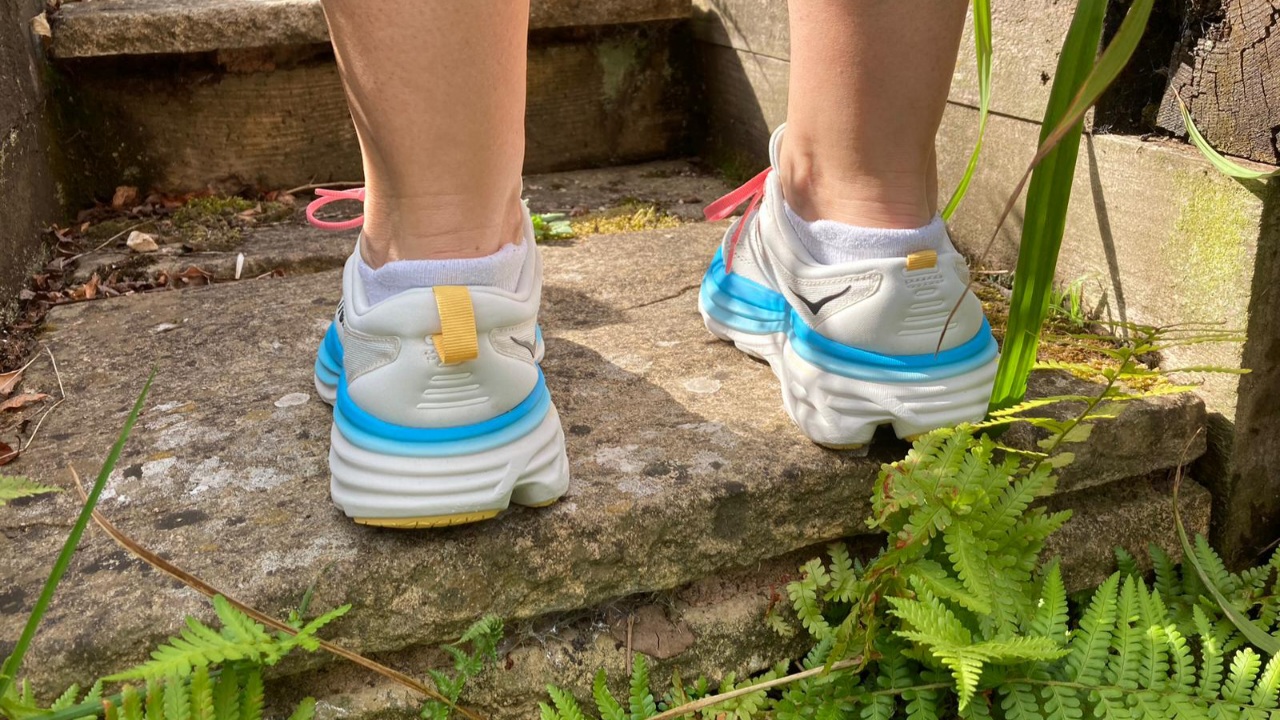
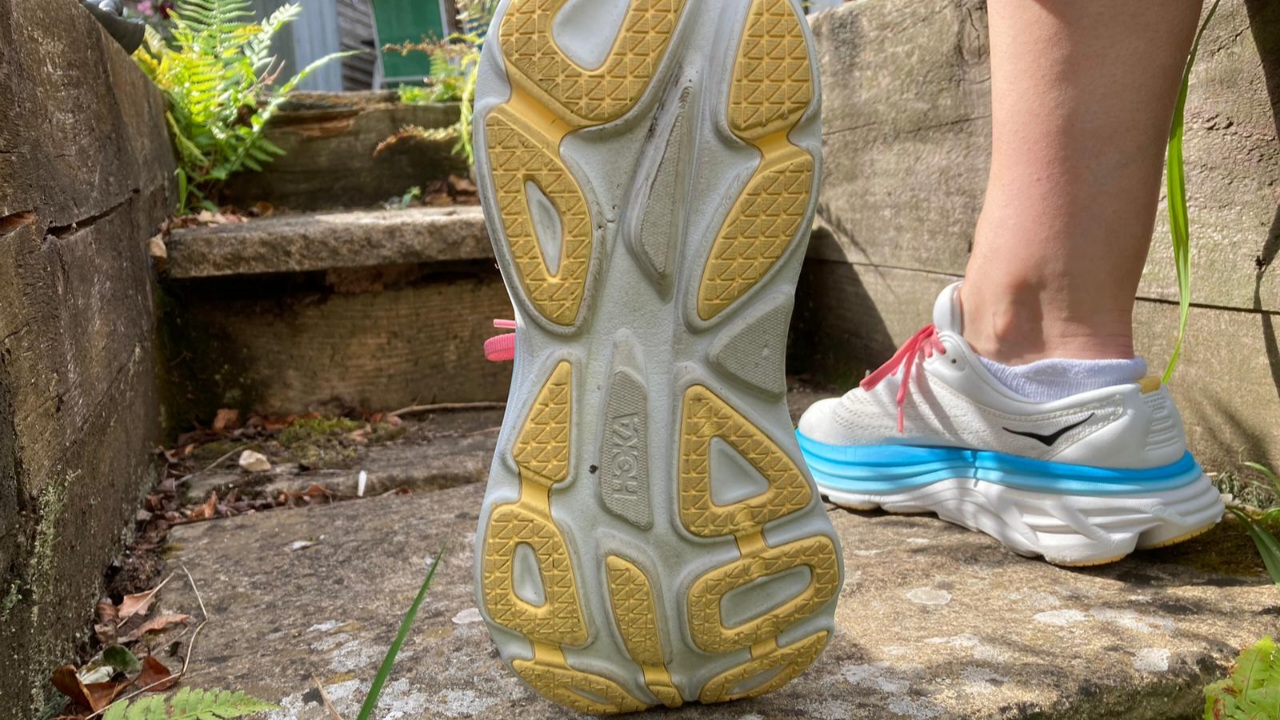
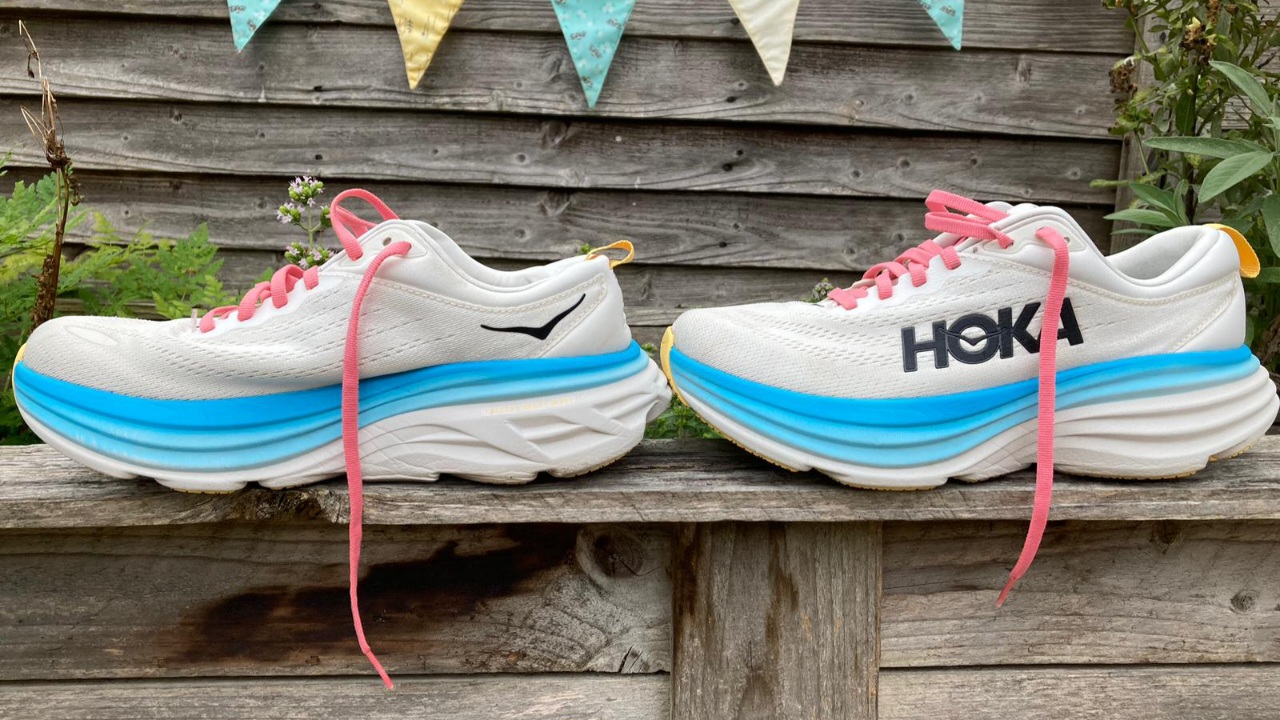
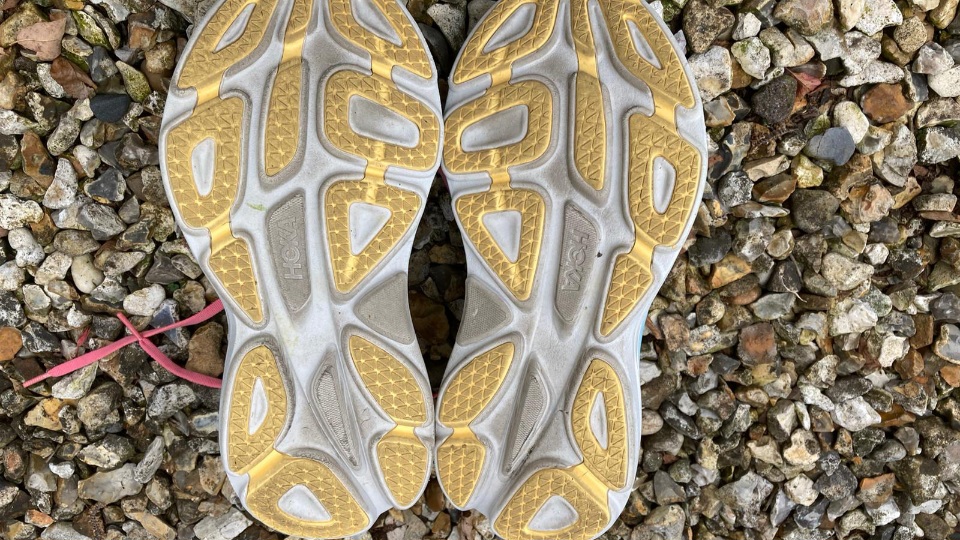
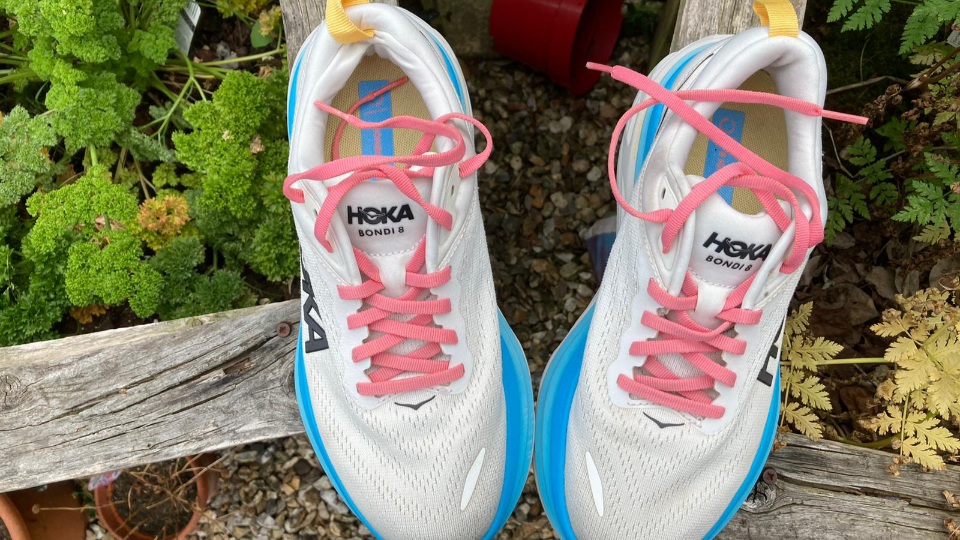
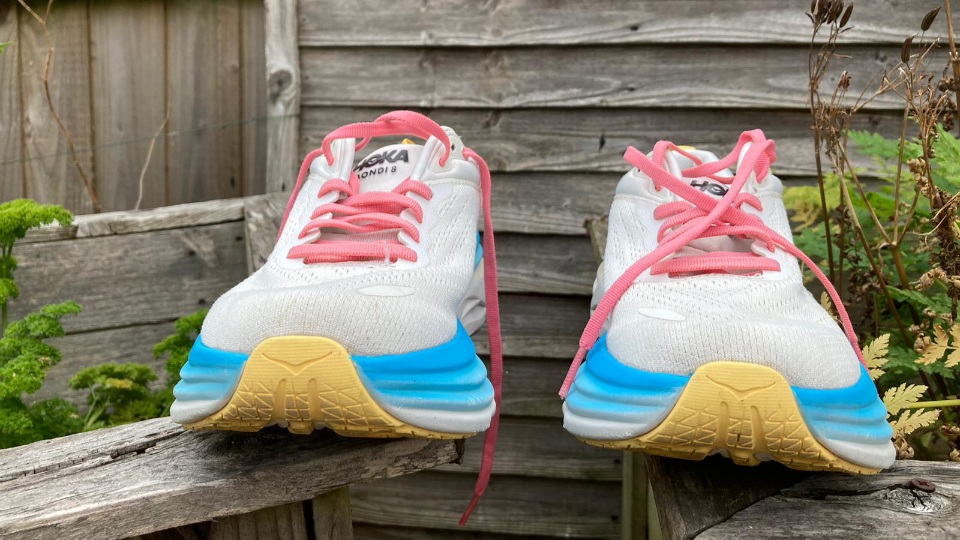
Specifications
Reasons to buy
Reasons to avoid
✅ You are on your feet all day: Whether its epic adventures or your working day you will get superior comfort
✅ You want one pair for everything: These are great shoes for walking as well as running
❌ You want lightweight running shoes: The Bondi 8 is one of the heavier shoes on the market
❌ You have narrow feet: The Bondi has a wide footbed
🔎 Hoka Bondi 8: With a huge wedge of cushioning and super wide footbed, the Hoka Bondi offer extreme comfort for those on their feet all day. However they definitely aren't a shoe for PB running attempts.
★★★★
The chunky cushioning of Hoka's shoes is beloved of many runners, particularly those who spend a long time on their feet. That might be ultramarathoners, who those whose jobs involve a lot of time on foot. And the Bondi 8 offers this comfort to the extreme.
During our Hoka Bondi 8 review our reviewer found the shoes to be extremely comfortable straight out of the box, with no rubbing or chafing at all.
Our reviewer also liked the locked-in feel given by the partially gusseted tongue and the excellent lace system. However the weight of the shoe and the wide footbed does lend itself more towards slower runs and walking more than picking up the pace.
Best for style
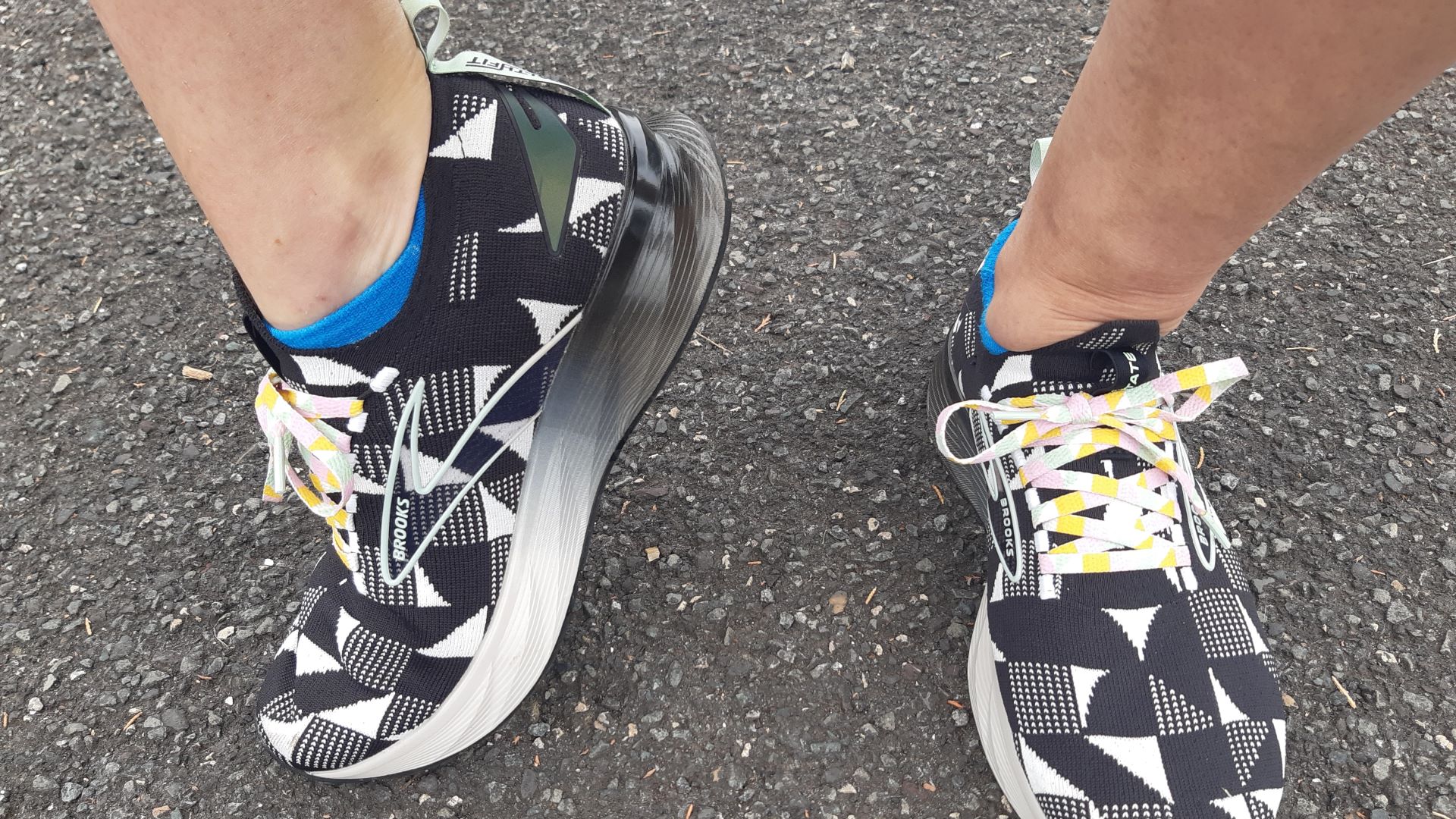
Specifications
Reasons to buy
Reasons to avoid
✅ You want a versatile shoe: It is suitable for different workout types.
✅ You prioritize style over cushioning: It is one of the most eye catching trainers in this guide.
❌ You have wide feet: It may feel too tight.
❌ You need solid arch support: It may feel uncomfortable in the long run.
🔎 Brooks Levitate Stealthfit 6: This sleek running shoe boasts a unique design and snug support, making it a reliable all-rounder for speed work and long-distance runs. ★★★★
As the name suggests Brooks Levitate Stealthfit 6 are light and bouncy but also offer a snug fit thanks to their sleek design. Not everyone will be a fan of their wraparound upper and stripped back support but for runners looking for simplicity they are an effective, responsive shoe, great for speed work as well as long easy runs.
During our Brooks Levitate Stealthfit 6 review, we found that these shoes tick a lot of boxes. Unique design, solid support and a reliable all rounder for speed work and endurance miles. The responsive midsole has plenty of bounce and the wraparound upper keeps your feet and ankles firmly in place.
Those with wider feet or in need or greater arch support may not warm to this neutral shoe but for those looking for a versatile everyday training shoe which fits like a sock, this is a winner. One thing is for sure and that's that wearing this shoes will certainly be a conversation starter, as no one will miss their eye catching design.
Runners who prefer a highly cushioned shoe may find them uncomfortable and lacking bounce on longer runs but those who prefer an almost old school, sleek minimalist design will love them.
- Read our full Brooks Levitate Stealthfit Review
Running shoes: Comparison
Product | Rating | Weight (M/F) | Category | Drop | Terrain |
|---|---|---|---|---|---|
Saucony Ride 16 | ★★★★½ | 8.8oz (250g)/ 7.8oz (221g) | Neutral | 8mm | Road |
Brooks Glycerin 21 | ★★★★½ | 9.8oz (278g)/ 8.8oz (249g) | Neutral | 10mm | Road |
Adidas Ultraboost 22 | ★★★★ | 11.8oz / 333g (w) | Neutral | 10mm | Road |
New Balance Fresh Foam X 1080v12 | ★★★★ | 8.3 oz/ (234g) | Neutral | 8mm | Road |
Nike Invincible 3 | ★★★½ | 11.1oz (316g) | Neutral | 9mm | Road |
Asics Gel-Cumulus 25 | ★★★★ | 8oz (228g) (US women's 8) | Neutral | 8mm | Road |
Hoka Mach X | ★★★★ | 9.3oz (265g) | Neutral | 5mm | Road |
Hoka Bondi 8 | ★★★★ | 11 oz (311g)/ 8.8 oz (252g) | Neutral | 4mm | Road |
Brooks Levitate Stealthfit 6 | ★★★★ | 9.9oz (280.7g) 9.1oz/(258g) | Neutral | 8mm | Road |
| Row 9 - Cell 0 | Row 9 - Cell 1 | Row 9 - Cell 2 | Row 9 - Cell 3 | Row 9 - Cell 4 | Row 9 - Cell 5 |
Our Expert

Anne-Marie O'Connor is one of the UK’s leading Musculoskeletal Podiatrists providing podiatric care and gait analysis to patients of all ages, from children with walking concerns, recreational and elite sports enthusiasts, pre/post-surgery pain and dysfunction during walking and sporting activities to older people with degenerative foot pain. She told Live Science about the effects of supination on running performance.
Frequently asked questions
What is supination?
Supination (or underpronation) of the foot is where the ankle rolls outwards, putting greater stress on the outer edge of the foot with each step. Over-supination can put excessive stress on the ankle, toes and the outer edge of your foot, causing the ankle to roll or strain. The opposite, overpronation when the foot rolls too far inward, can make it hard for the arch to absorb the impact of the stride. If you don’t wear the right type of footwear to support either of these, you can end up in pain or injured.
“Supination of the foot and ankle occurs at the subtalar joint, which controls the movement of supination and pronation. A supinated foot profile is when the subtalar joint has a lack of range in pronation, so the foot is generally high-arched and rigid. The forces on the feet are therefore generally on the outer edges”, a musculoskeletal podiatrist Anne-Marie O’Connor told Live Science. (You can learn more about these terms through our feature on supination vs pronation.)
How common is supination of the ankle?
To find out if you experience supination of the ankle, most running shops will perform a gait analysis in store by having you jog on a treadmill then analyzing your form. However, O’Connor said supinated running mechanics aren’t particularly common.
“A properly defined supinated foot type where the foot has minimal or underpronation, is rare, (affecting) only 10% of the population,” she said. “It is possible to have a very high arched foot that has adequate pronation or overpronation, not all high arched foot types have underpronation or can be described as a 'supinated' foot type.”
What injuries can supination cause?
Running with the feet in a supinated position can lead to an increased chance of injury, O’Connor said.
“If the foot has a tendency to stay in the supinated position, it means the foot will have less propensity to absorb shock,” she said. “This is because the forces when running will be on the outer border of the foot when landing, and they will stay on the outer border through the whole of the loading phase of running. The surface area of loading will be on the heel of the outer border of the foot and the outside of the forefoot. This is where the runner can have injuries; the heel fat pad, planterfasciitus and metatarsal stress fractures of the foot. Common injuries higher up the chain will include lateral knee and ITB friction syndrome."
When is Amazon Prime Day in October?
Amazon's October Prime Day, called Prime Big Deal Days, is scheduled to take place on Tuesday, October 7 and Wednesday, October 8, 2025. Head on to our Prime Day science deals hub for the best deals on running gear and other exercise equipment.
How to choose
It's easy to think a running shoe is just a running shoe but there are differences between the styles and brands on the market. Most people have heard of the main brands such as Hoka, Adidas, Nike and New Balance but each of these brings different things to the running shoe market. For example, Saucony caters for performance whereas Adidas offer more versatile options. Brands like Brooks offer a blend of options for amateur runners but are particularly good at comfort and support while Hoka focuses on the latest technology, with them offering a Pebax plate on the Hoka Mach X, for example. It's important to consider this when looking for the right running shoe for you. Consider the types of runs you do and take some time to look at what the brands offer and if it'll suit your needs.
Another thing to consider is the technology used in the soles. For example, many running shoes now have carbon plates in the outsole which increase running efficiency and can see you get better times. Others, like our best overall, Saucony Ride 16, keep things simple using PWRRUN foam at the heel and a flared midsole. This gives stability to those who are prone to supination. You want to look for good comfort and support from the sole of the shoe and focus on maximalist trainers. Maximalist trainers will offer you a thicker midsole that can help to reduce impact while also offering a lower offset to ensure fuller foot contact. However, many shoes that are labelled as "neutral" can also be suitable for those with mild pronation issues, due to the support they offer and the maximal cushioning that is now very popular. This is something to bear in mind when looking for a running shoe to adequately support your foot.
How we test
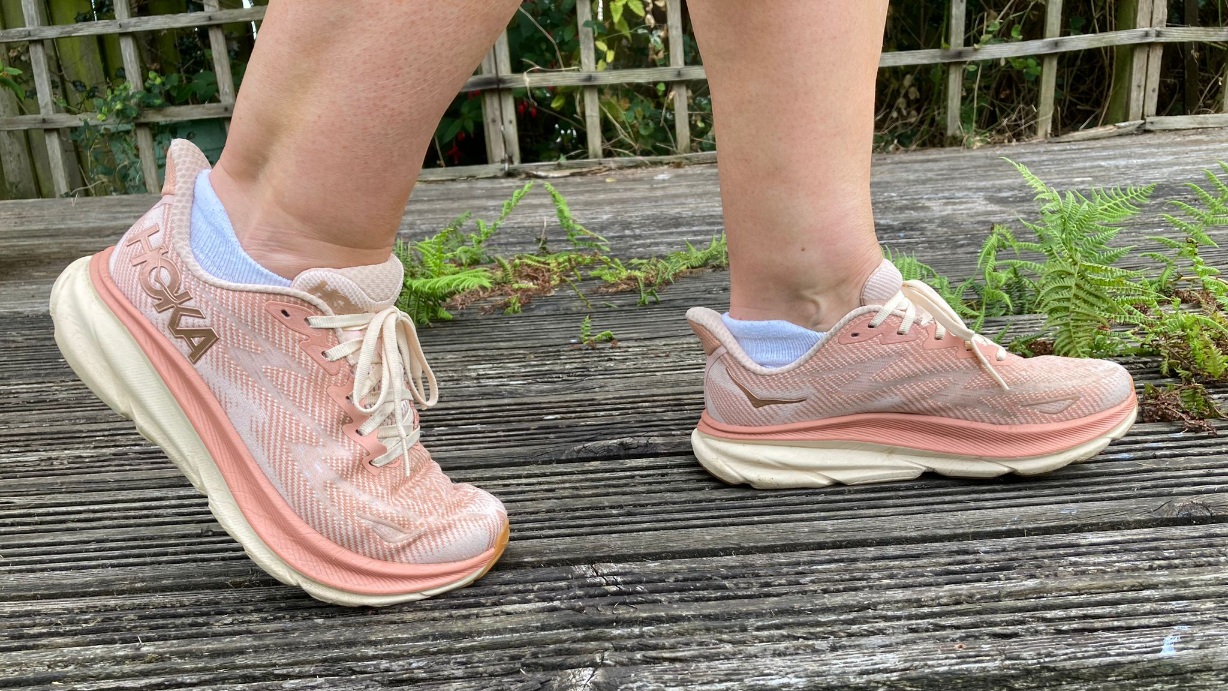

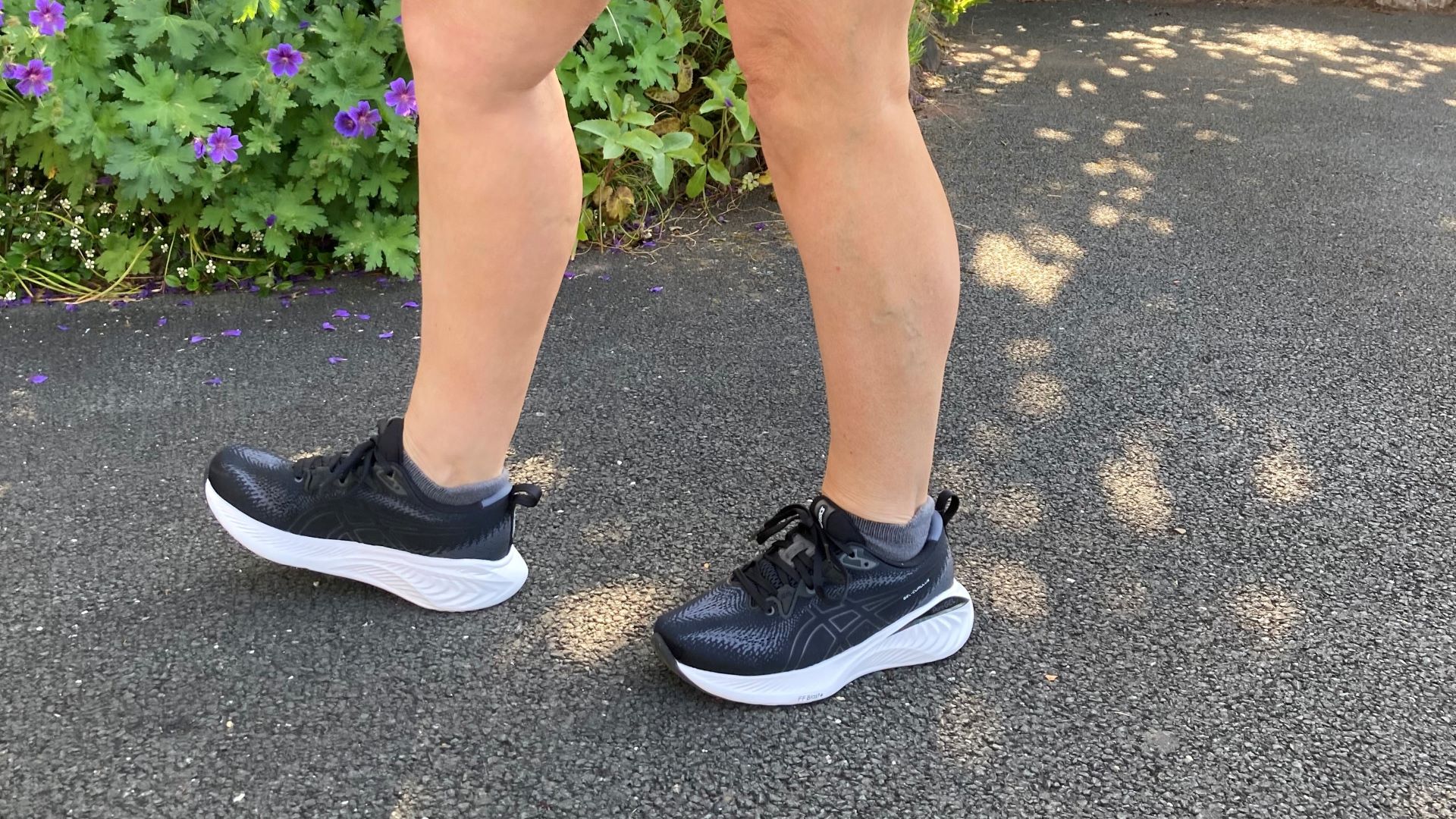

All models in this guide were thoroughly tested by our in-house fitness experts: experienced runners, exercise professionals and health coaches who love sharing their passion for top-class activewear. We can say with confidence which running shoes are the best in their respective classes.
We got our feet into each pair listed and put them through their paces, following the same testing protocol to ensure a thorough and objective assessment. After wearing the running shoes over the course of a few weeks, we score them across the following criteria:
1) Design and features. We assess the build, cushioning, design, upper and outsole of the running shoe in question, and we put on trial any innovations and key features boasted by the brand. We want to know if it is made of durable materials, how many sizes and colorways it comes in, and which runners it would suit the most (supinated? with narrow or wide feet? beginner or advanced?) and who may need to avoid it.
2) Comfort. We assess if it is comfortable to wear (on and off the running trail), how easy it is to put on and whether it pulls through intense workout sessions without causing discomfort. How cushioned are they?
3) Performance. The shoes were tasked with keeping our testing team comfortable and supported through easy kilometers, distance runs, speedwork, sprint intervals, fast-paced 5Ks and more. The Brooks Glycerin 19 even saw one of our testers through a marathon.
Verdict. Should you buy or is it better to give it a miss? After testing, we give the running shoes an overall rating out of five and we summarize each model's strengths and weaknesses.
Latest updates
December 18, 2025: We added the Asics Megablast as the best option for long runs.
November 17, 2025: We added the New Balance FuelCell Rebel v5 as the best option for speedwork.
March 19, 2025: We added the 'How to choose' section.
February 14, 2025: We updated the 'How we test' section to better reflect our testing protocol.
January 29, 2025: We added the 'Running shoe comparison' section.
Get the world’s most fascinating discoveries delivered straight to your inbox.

Harry Bullmore is a fitness writer covering everything from reviews to features for LiveScience, T3, TechRadar, Fit&Well and more. So, whether you’re looking for a new fitness tracker or wondering how to shave seconds off your 5K PB, chances are he’s written something to help you improve your training.
When not writing, he’s most likely to be found experimenting with a wide variety of training methods in his home gym or trying to exhaust his ever-energetic puppy.
Prior to joining Future, Harry wrote health and fitness product reviews for publications including Men’s Health, Women’s Health and Runner’s World. Before this, he spent three years as a news reporter with work in more than 70 national and regional newspapers.
- Anna GoraHealth Writer
- Kate Carter
- Kat BaylyContributing expert


